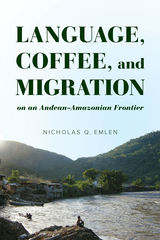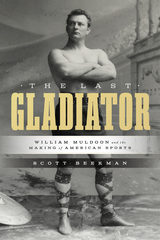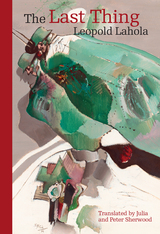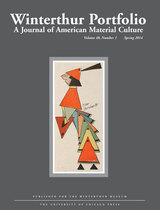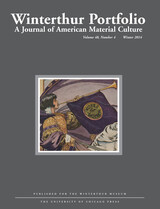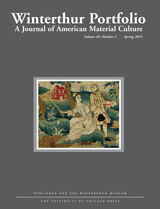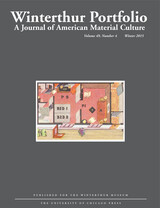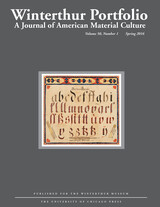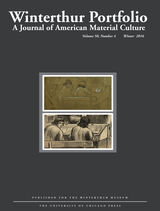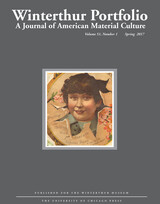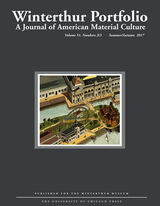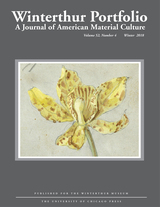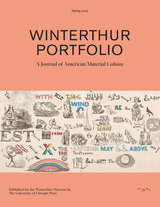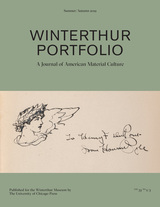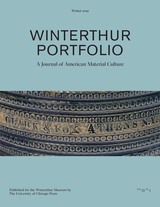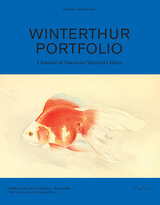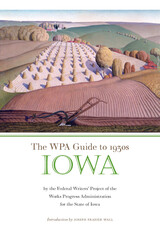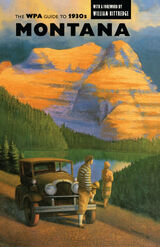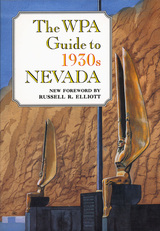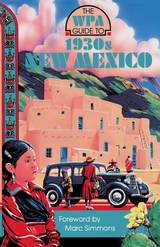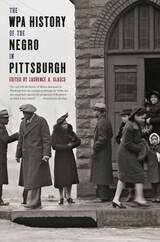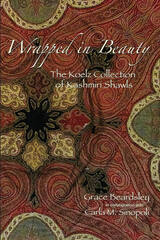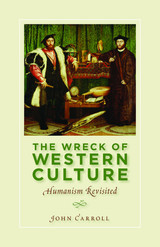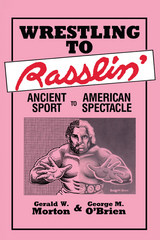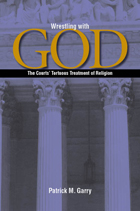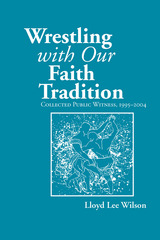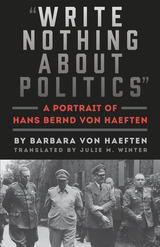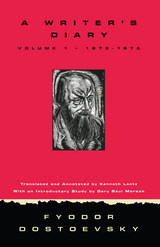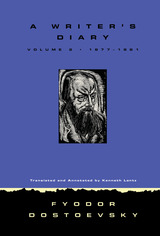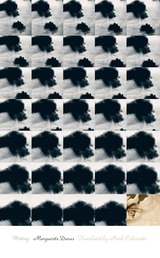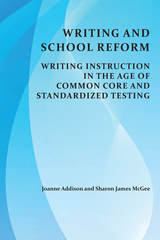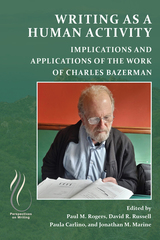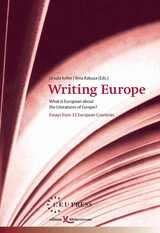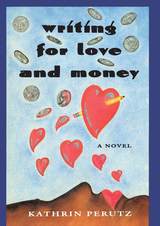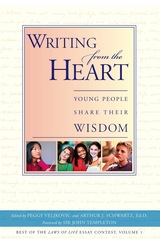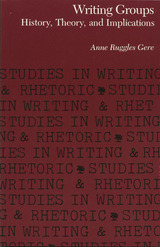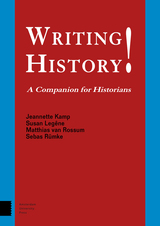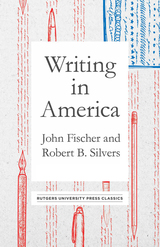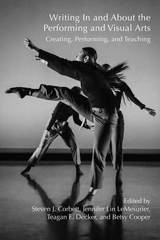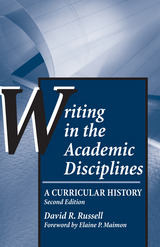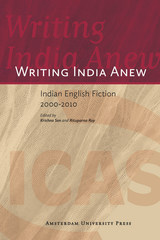WP vol 47 num 1
The University of Chicago Press
University of Chicago Press Journals, 2013
WP vol 47 num 23
The University of Chicago Press
University of Chicago Press Journals, 2013
WP vol 47 num 4
The University of Chicago Press
University of Chicago Press Journals, 2013
WP vol 48 num 1
The University of Chicago Press
University of Chicago Press Journals, 2014
WP vol 48 num 23
The University of Chicago Press
University of Chicago Press Journals, 2014
WP vol 48 num 4
The University of Chicago Press
University of Chicago Press Journals, 2014
WP vol 49 num 1
The University of Chicago Press
University of Chicago Press Journals, 2015
WP vol 49 num 23
The University of Chicago Press
University of Chicago Press Journals, 2015
WP vol 49 num 4
The University of Chicago Press
University of Chicago Press Journals, 2015
WP vol 50 num 1
The University of Chicago Press
University of Chicago Press Journals, 2016
WP vol 50 num 23
The University of Chicago Press
University of Chicago Press Journals, 2016
WP vol 50 num 4
The University of Chicago Press
University of Chicago Press Journals, 2016
WP vol 51 num 1
The University of Chicago Press
University of Chicago Press Journals, 2017
WP vol 51 num 23
The University of Chicago Press
University of Chicago Press Journals, 2017
WP vol 51 num 4
The University of Chicago Press
University of Chicago Press Journals, 2017
WP vol 52 num 1
The University of Chicago Press
University of Chicago Press Journals, 2018
WP vol 52 num 23
The University of Chicago Press
University of Chicago Press Journals, 2018
WP vol 52 num 4
The University of Chicago Press
University of Chicago Press Journals, 2018
WP vol 53 num 1
The University of Chicago Press
University of Chicago Press Journals, 2019 This is volume 53 issue 1 of Winterthur Portfolio. Winterthur Portfolio fosters knowledge of the North American past by publishing articles on material culture and the historical contexts within which artifacts developed. The journal presents interdisciplinary scholarship that critically engages art history, history, geography, ethnology, archaeology, anthropology, craft, design, and literature. It publishes articles that are analytical and synthetic rather than descriptive, and it encourages submissions by scholars underrepresented in material culture studies.
WP vol 53 num 23
The University of Chicago Press
University of Chicago Press Journals, 2019
WP vol 53 num 4
The University of Chicago Press
University of Chicago Press Journals, 2019
WP vol 54 num 1
The University of Chicago Press
University of Chicago Press Journals, 2020
WP vol 54 num 23
The University of Chicago Press
University of Chicago Press Journals, 2020
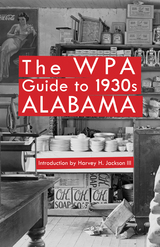 The WPA Guide to 1930s Alabama
Harvey H. Jackson, III
University of Alabama Press, 2000 A fascinating time capsule, this classic guide captures Alabama at a critical moment in its history between the Great Depression and World War II and its aftermath. The WPA guide to Alabama provides a unique snapshot of 1930s Alabama life and culture. Like the other state guides in the WPA's American Guide Series, it features essays on history, economy, people, folkways, education, and other characteristics of the state, as well as general information about the towns and cities. Fifteen suggested automobile tours encourage visitors and residents to explore every corner of the state, from the Gulf Coast to the Black Belt and the Tennessee Valley, from bayous to farmlands to mountain gorges. When it was first published in 1941, the guide went far to dispel the myth of an Alabama consisting only of cotton fields, magnolias, and plantation houses by highlighting the vibrant university life in Tuscaloosa, the modern industrial activity in Birmingham, the informality of politics in Montgomery, the cultural diversity in Alabama's port city, Mobile, and the small town life in Huntsville before it became home to the space industry. The book includes a calendar of annual events, census data, and a wealth of information useful to the traveling public of the time and enlightening to readers today. The guide lists radio stations, buses, railroads, and highways as they existed before the advent of television, interstates, and malls. Harvey Jackson's fascinating introduction assesses the guide as a historical document and recounts the involved and sometimes controversial process by which it was researched and written. Project directors struggled to make the guide palatable to its public while still addressing such issues as poverty and race relations and recognizing the state's diversity and its rich folk culture. The result makes for compelling reading for general readers and historians alike.
The WPA Guide to 1930s Iowa
Joseph Frazier Federal Writers Project
University of Iowa Press, 1938 Originally published during the Great Depression, The WPA Guide nevertheless finds much to celebrate in the heartland of America. Nearly three dozen essays highlight Iowa's demography, economy, and culture but the heart of the book is a detailed traveler's guide, organized as seventeen different tours, that directs the reader to communities of particlar social and historical interest.
The WPA Guide to 1930s Montana
Work Projects Work Projects Administration
University of Arizona Press, 1994 First published in 1939, this nostalgic guide includes chapters on Montana's natural setting, history, economy, and cultural life as of half a century ago, plus separate entries for Billings, Butte, Great Falls, Helena, and Missoula--which at the time boasted four hotels and five-cent bus fares. There then follow, in the WPA Guide tradition, 18 tours that crisscross the state and point out not only natural splendors along the way but also such noteworthy historic sites as Custer Battlefield, the Blackfeet Indian Reservation, Boothill Cemetery in Virginia City, and the site of the "holing-up" shanty of Calamity Jane. Fourteen additional tours--four for roads, ten for trails--guide readers through Glacier National Park.
The WPA History of the Negro in Pittsburgh
Laurence A. Glasco
University of Pittsburgh Press, 2004
The monumental American Guide Series, published by the Federal Writers’ Project, provided work to thousands of unemployed writers, editors, and researchers in the midst of the Great Depression. Featuring books on states, cities, rivers, and ethnic groups, it also opened an unprecedented view into the lives of the American people during this time. Untold numbers of projects in progress were lost when the program was abruptly shut down by a hostile Congress in 1939.
One of those, "The Negro in Pittsburgh," lay dormant in the Pennsylvania State Library until it was microfilmed in 1970. The WPA History of the Negro in Pittsburgh marks the first publication of this rich body of information. This unique historical study of the city’s black population features articles on civil rights, social class, lifestyle, culture, folklore, and institutions from colonial times through the 1930s.
 WPAing in a Pandemic and Beyond: Revision, Innovation, and Advocacy
Todd Ruecker
Utah State University Press, 2025 Writing program administrators have a long history of advocating for their students, fellow faculty, and programs. This advocacy includes defending their work against other entities that seek to dictate the work, challenging institutional policies that define student success in a narrow way or create untenable conditions for writing faculty workloads, and making antiracism a central part of writing programs. The COVID-19 pandemic undoubtedly created a variety of additional challenges for those working in education at all levels. WPAs suddenly had to navigate new public health mandates alongside student and instructor fears as well as pressures by administrations and publics to teach in person.
The chapters in this collection include a variety of voices who have been involved in writing program administration in recent years to reflect on the work done in this moment of crisis. Through both short vignettes and longer chapters, this book explores the complicated interactions between WPA work and navigating times of crisis to provide insights for moving forward. Authors explore a variety of topics including professional development, curricular change, advocating in the face of intransigent administrations and others, caring for students, and taking time for self-care. Pointing to specific actions for continued advocacy, WPAing in a Pandemic and Beyond will be of great interest to WPAs and writing studies scholars.
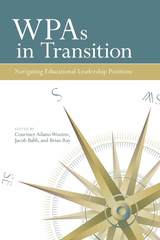 WPAs in Transition: Navigating Educational Leadership Positions
Courtney Adams Wooten
Utah State University Press, 2017 WPAs in Transition shares a wide variety of professional and personal perspectives about the costs, benefits, struggles, and triumphs experienced by writing program administrators making transitions into and out of leadership positions. Contributors to the volume come from various positions, as writing center directors, assistant writing program administrators, and WPAs; mixed settings, including community colleges, small liberal arts colleges, and research institutions; and a range of career stages, from early to retiring. They recount insightful anecdotes and provide a scholarly context in which WPAs can share experiences related to this long-ignored aspect of their work. During such transitions, WPAs and other leaders who function as both administrators and faculty face the professional and personal challenges of redefining who they are, the work they do, and with whom they collaborate. WPAs in Transition creates a grounded and nuanced experiential understanding of what it means to navigate changing roles, advancing the dialogue around WPAs’ and other administrators’ identities, career paths, work-life balance, and location, and is a meaningful addition to the broader literature on administration and leadership. Contributors: Mark Blaauw-Hara, Christopher Blankenship, Jennifer Riley Campbell, Nicole I. Caswell, Richard Colby, Steven J. Corbett, Beth Daniell, Laura J. Davies, Jaquelyn Davis, Holland Enke, Letizia Guglielmo, Beth Huber, Karen Keaton Jackson, Rebecca Jackson, Tereza Joy Kramer, Jackie Grutsch McKinney, Kerri K. Morris, Liliana M. Naydan, Reyna Olegario, Kate Pantelides, Talinn Phillips, Andrea Scott, Paul Shovlin, Bradley Smith, Cheri Lemieux Spiegel, Sarah Stanley, Amy Rupiper Taggart, Molly Tetreault, Megan L. Titus, Chris Warnick
 Wrangling Pelicans: Military Life in Texas Presidios
Tim Seiter
University of Texas Press, 2025 A richly detailed history of daily life for colonial Spanish soldiers surviving on the eighteenth-century Texas Gulf Coast. In 1775, Spanish King Carlos III ordered the capture of American pelicans for his wildlife park in Madrid. The command went to the only Spanish fort on the Texas coast—Presidio Nuestra Señora de Loreto de la Bahía in present-day Goliad. But the overworked soldiers stationed at the fort had little interest indulging a king an ocean away. Their days were consumed with guarding their community against powerful Indigenous peoples and managing the demands of frontier life. The royal order went ignored. Wrangling Pelicans brings to life the world of Presidio La Bahía’s Hispano soldiers, whose duties ranged from heated warfare to high-stakes diplomacy, while their leisure pursuits included courtship, card playing, and cockfighting. It highlights the lives of presidio women and reveals the ways the Spanish legal system was used by and against the soldiers as they continually negotiated their roles within the empire and their community. Although they were agents of the Spanish crown, soldiers at times defied their king and even their captain as they found ways to assert their autonomy. Offering a fresh perspective on colonial Texas, Wrangling Pelicans recreates the complexities of life at the empire’s edge, where survival mattered more than royal decrees.
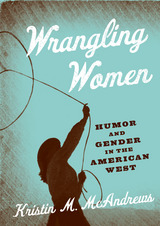 Wrangling Women: Humor and Gender in the American West
Kristin M. McAndrews
University of Nevada Press, 2008 The small Methow Valley community of Winthrop, Washington, has reinvented itself as a western-theme town. Winthrop women function as trail guides, wranglers, horse trainers, packers, and ranchers and work in an environment where gender stereotypes must be carefully preserved for the sake of the tourist-based economy. Yet these women often subvert and undermine traditional gender images with humor. How the wrangling women of Winthrop accomplish this challenging balancing act is a fascinating study of women’s manipulation of language and gender stereotypes in the modern West. Kristin McAndrews states that she “began to suspect that the reason there was so little scholarship on women’s humor was that male researchers didn’t understand it, or perhaps they didn’t recognize it.” To examine the humor of one group of women, she conducted interviews with Winthrop’s female wranglers, collecting stories about their lives as workers and as members of their community. For all these women, professional success depends on courage, ingenuity, a sense of humor, and a facility with language—as well as on an ability to perform within the traditional gender stereotypes evoked by their town’s Wild west image.
Wrapped in Beauty: The Koelz Collection of Kashmiri Shawls
Grace Beardsley in collaboration with Carla M. Sinopoli
University of Michigan Press, 2005 This richly illustrated volume examines the remarkable Kashmiri shawls of the Walter Koelz Collection of the University of Michigan Museum of Anthropological Archaeology. Part I presents the history, production, forms, and ornamentation of Kashmiri shawls, focusing on the impact of social contexts and the advent of the Jacquard loom on shawl development. Part II is a detailed descriptive catalogue of the shawls in the Koelz Collection. An accompanying CD-ROM includes color illustrations of the shawls in the collection as well as a transcribed manuscript by Koelz.
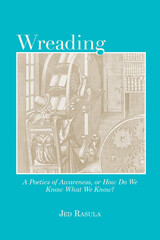 Wreading: A Poetics of Awareness, or How Do We Know What We Know?
Jed Rasula
University of Alabama Press, 2022 A diverse collection of essays and interviews on reading, teaching, and writing poetry from a preeminent critic and scholar
Jed Rasula is a distinguished scholar of avant-garde poetics, noted for his erudition, intellectual range, and critical independence. Wreading: A Poetics of Awareness, or How Do We Know What We Know? is a collection of essays and interviews that reflects the breadth and diversity of his curiosity.
While this volume presents highlights from Rasula’s criticism, it also serves as a carefully assembled intellectual autobiography. Wreading consists of two parts: an assortment of Rasula’s solo criticism and selected interviews and conversations with other poets and scholars. These detailed conversations are with Evelyn Reilly, Leonard Schwartz, Tony Tost, Mike Chasar, Joel Bettridge, and Ming-Qian Ma. Their exchanges address ecopoetics, the corporate university, the sheer volume of contemporary poetry, and more. This substantial set of dialogues gives readers a glimpse inside a master critic’s deeply informed critical practice, illuminating his intellectual touchstones.
The balance between essay and interview achieves a distillation of Rasula’s long-established idea of “wreading.” In his original use, the term denotes how any act of criticism inherently adds to the body of writing that it purports to read. In this latest form, Wreading captures a critical perception that sparks insight and imagination, regardless of what it sees.
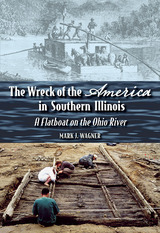 The Wreck of the "America" in Southern Illinois: A Flatboat on the Ohio River
Mark J. Wagner
Southern Illinois University Press, 2015 Winner, Illinois State Historical Society Superior Achievement, 2016
Flatboats were the most prolific type of vessel on the Ohio and Mississippi Rivers during the early 1800s. Thousands of these boats descended the two rivers each year, carrying not only valuable cargo to New Orleans but also western-bound emigrants to newly opened territories. By the late 1800s, flatboats had completely disappeared, and no intact examples were known to exist. Our knowledge of these historic vessels had been limited to illustrations, memoirs, and traveler accounts. That changed in 2000 after local residents found a wreck on the Ohio River shoreline in Illinois. Archaeologist Mark J. Wagner and his colleagues from Southern Illinois University Carbondale investigated extensively and established that the wreck was a pre–Civil War flatboat, which they named America, after a nearby town. In The Wreck of the America in Southern Illinois: A Flatboat on the Ohio River, Wagner provides a brief description and general history of flatboats and the various reasons they wrecked—such as poor workmanship and encounters with pirates, storms, rocks, and floating trees. Wagner describes the remains of the America, how it was constructed, the artifacts found nearby and inside—including pewter spoons, utensils with bone handles, metal buttons, and an iron felling axe—and the probable cause of its sinking. Wagner concludes with a history of the America since its discovery in 2000 and a plea that the boat be removed from the riverbank and preserved before the Ohio washes it away.
The Wreck of Western Culture: Humanism Revisited
John Carroll
Intercollegiate Studies Institute, 2009
“Features pugnacious prose, expository skillfulness, transgressive wisdom, and mental verve.”
—The Weekly Standard
“A passionate, imaginative, richly detailed interpretation of the spiritual history of the modern West.”
—BookForum
Australian sociologist John Carroll turns received wisdom on its head in this brilliant, provocative, and sweeping book. Humanism is commonly credited with building Western civilization as we know it—bringing about democracy, universal rights, and prosperity. But Carroll argues that “the great five-hundred year Humanist experiment to found an entirely secular culture on earth” has been an abject failure.
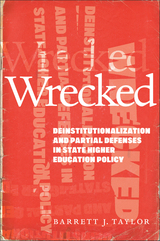 Wrecked: Deinstitutionalization and Partial Defenses in State Higher Education Policy
Barrett J. Taylor
Rutgers University Press, 2022 Higher education is a central institution in U.S. democracy. In the 2010s, however, many states that spent previous decades building up their higher education systems began to tear them down. Growing hostility toward higher education reflected changing social forces that remade the politics of U.S. higher education. The political Right became increasingly reliant on angry white voters as higher education became more racially diverse. The Republican party became more closely connected to extremely wealthy donors as higher education became more costly. In Wrecked, Barrett J. Taylor shows how these social changes set a collision course for the Right and higher education. These attacks fed a policy agenda of deinstitutionalization, which encompassed stark divestment from higher education but was primarily characterized by an attack on the institution’s social foundation of public trust. In response to these attacks, higher education officials have offered a series of partial defenses that helped higher education to cope in the short-term but did nothing to defend the institution itself against the long-term threat of declining public trust. The failure to address underlying issues of mistrust allowed conflict to escalate to the point at which many states are now wrecking their public higher education systems. Wrecked offers a unique and compelling perspective linking higher education policymaking to broader social and political forces acting in the twenty-first century.
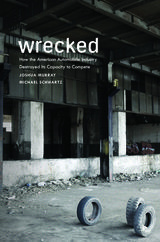 Wrecked: How the American Automobile Industry Destroyed Its Capacity to Compete
Joshua Murray
Russell Sage Foundation, 2019 At its peak in the 1950s and 1960s, automobile manufacturing was the largest, most profitable industry in the United States and residents of industry hubs like Detroit and Flint, Michigan had some of the highest incomes in the country. Over the last half-century, the industry has declined, and American automakers now struggle to stay profitable. How did the most prosperous industry in the richest country in the world crash and burn? In Wrecked, sociologists Joshua Murray and Michael Schwartz offer an unprecedented historical-sociological analysis of the downfall of the auto industry. Through an in-depth examination of labor relations and the production processes of automakers in the U.S. and Japan both before and after World War II, they demonstrate that the decline of the American manufacturers was the unintended consequence of their attempts to weaken the bargaining power of their unions.
Today Japanese and many European automakers produce higher quality cars at lower cost than their American counterparts thanks to a flexible form of production characterized by long-term sole suppliers, assembly and supply plants located near each other, and just-in-time delivery of raw materials. While this style of production was, in fact, pioneered in the U.S. prior to World War II, in the years after the war, American automakers deliberately dismantled this system. As Murray and Schwartz show, flexible production accelerated innovation but also facilitated workers’ efforts to unionize plants and carry out work stoppages. To reduce the efficacy of strikes and combat the labor militancy that flourished between the Depression and the postwar period, the industry dispersed production across the nation, began maintaining large stockpiles of inventory, and eliminated single sourcing. While this restructuring of production did ultimately reduce workers’ leverage, it also decreased production efficiency and innovation. The U.S. auto industry has struggled ever since to compete with foreign automakers, and formerly thriving motor cities have suffered the consequences of mass deindustrialization.
Murray and Schwartz argue that new business models that reinstate flexible production and prioritize innovation rather than cheap labor could stem the outsourcing of jobs and help revive the auto industry. By clarifying the historical relationships between production processes, organized labor, and industrial innovation, Wrecked provides new insights into the inner workings and decline of the U.S. auto industry.
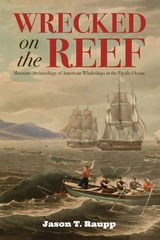 Wrecked on the Reef: Maritime Archaeology of American Whaleships in the Pacific Ocean
Jason T. Raupp
University of Alabama Press, 2025 Take to the sea on this maritime archaeological exploration of nineteenth-century American whaling ships American whaleships of the early nineteenth century were more than ocean-going vessels—they were complex workplaces, designed for long-term voyages, round-the-clock labor, and the large-scale extraction of marine resources. In Wrecked on the Reef, maritime archaeologist Jason T. Raupp presents a pioneering study of these ships as mobile production platforms, rooted in the logic of industrial capitalism operating far from land. Drawing on shipwreck sites from the central Pacific region, Raupp offers a rare archaeological look at everyday life aboard nineteenth-century whaling vessels during the so-called “Golden Age” of whaling. He examines the tools used to hunt and process whales, the strict labor hierarchies onboard, and the physical evidence of diverse, often vulnerable crews who lived and worked under demanding conditions. By combining maritime and industrial archaeology, Raupp reveals how these ships functioned not just as transportation, but as full-scale factories at sea. Chapters trace the rise of Pacific whaling, the importance of Hawaii as a supply and repair hub, the design and mechanics of whaleships, and the dangerous work crews performed in extreme isolation. Raupp shows how these ships were not only technological marvels of their time, but also part of a much larger system of labor, risk, and ocean-based resource extraction that fueled American expansion into the Pacific. By exploring whaleships as floating work sites, Raupp offers readers a deeper understanding of maritime labor, capitalism, and imperialism in the nineteenth century. Wrecked on the Reef charts a new course in the study of labor and landscape at sea, providing significant contributions to maritime archaeology, industrial history, and environmental humanities.
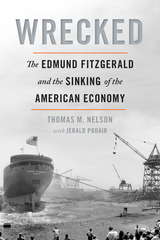 Wrecked: The Edmund Fitzgerald and the Sinking of the American Economy
Thomas M Nelson
Michigan State University Press, 2025 Wrecked links the story of America’s most infamous shipwreck to the story of an even larger disaster—the wreck of the American industrial economy. When the Edmund Fitzgerald went down in a Lake Superior storm on November 10, 1975, more was lost than the ship and the twenty-nine lives on board. The disaster was a human tragedy as well as an indictment of the American industrial policies that eventually cost the nation thousands of jobs and marooned hundreds of communities. Written with a passionate yet factually grounded intensity, Wrecked shows that the reasons for the decline of industrial manufacturing in the upper Midwest are linked to why the Edmund Fitzgerald sank, and to the legal turmoil that followed for the victims’ families. The book conveys the sense of loss that still is felt by those affected, along with the outrage over the disappearance of manufacturing jobs and the inadequate maintenance and legal maneuvering over liability for the sinking of the ship. What follows is a fascinating critique of what went wrong and why.
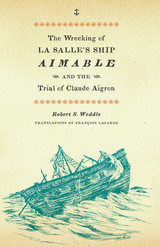 The Wrecking of La Salle's Ship Aimable and the Trial of Claude Aigron
By Robert S. Weddle
University of Texas Press, 2009 When Robert Cavelier, sieur de La Salle, landed on the Texas coast in 1685, bent on founding a French colony, his enterprise was doomed to failure. Not only was he hundreds of miles from his intended landfall—the mouth of the Mississippi—but his supply ship, Aimable, was wrecked at the mouth of Matagorda Bay, leaving the colonists with scant provisions and little protection against local Indian tribes. In anger and disgust, he struck out at the ship's captain, Claude Aigron, accusing him of wrecking the vessel purposely and maliciously. Captain Aigron and his crew escaped the doomed colony by returning to France on the warship that had escorted the expedition on its ocean crossing. Soon after reaching France, Aigron found himself defendant in a civil suit filed by two of his officers seeking recompense for lost salary and personal effects, and then imprisoned on order of King Louis XIV while La Salle's more serious accusations were being investigated. In this book, Robert Weddle meticulously recounts, through court documents, the known history of Aigron and the Aimable, and finds that despite La Salle's fervent accusations, the facts of the case offer no clear indictment. The court documents, deftly translated by François Lagarde, reveal Captain Aigron's successful defense and illuminate the circumstances of the wreck with Aigron's testimony. Much is also revealed about the French legal system and how the sea laws of the period were applied through the French government's L'Ordonnance de la Marine.
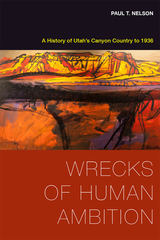 Wrecks of Human Ambition: A History of Utah's Canyon Country to 1936
Nelson, Paul T.
University of Utah Press The red rock canyon country of southeastern Utah and northeastern Arizona is one of the most isolated, wild, and beautiful regions of North America. Europeans and Americans over time have mostly avoided, disdained, or ignored it. Wrecks of Human Ambition illustrates how this landscape undercut notions and expectations of good, productive land held by the first explorers, settlers, and travelers who visited it. Even today, its aridity and sandy soils prevent widespread agricultural exploitation, and its cliffs, canyons, and rivers thwart quick travel in and through the landscape.
Most of the previous works regarding the history of this unique region have focused on either early exploration or twentieth-century controversies that erupted over mineral and water development and the creation of national parks and wilderness areas. This volume fills a gap in existing histories by focusing on early historical themes from the confrontation between Euro-Christian ideals and this challenging landscape. It centers on three interconnected interpretations of the area that unfolded when visitors from green, well-watered, productive lands approached this desert. The Judeo-Christian obligation to “make the desert bloom,” encompassed ideas of millenarianism and of Indian conversion and acculturation as well as the Old Testament symbolism of the “garden” and the “desert.” It was embodied in the efforts of Spanish missionaries who came to the canyon country from the 1500s to the 1700s, and in the experiences of Mormon settlers from about 1850 to 1909. Another conflicting sentiment saw the region simply as bad land to avoid, an idea strongly held by U.S. government explorers in the 1850s. This conclusion too was reinforced by the experiences of those who attempted to settle and exploit this country. Finally, though, the rise of tourism brought new ideas of wilderness reverence to the canyon country. The bad lands became valuable precisely because they were so distinct from traditionally settled landscapes.
In pursuing the conflict between Euro-Christian ideals and an arid, rugged, resistant landscape of deserts and canyons, Paul Nelson provides in clear, engaging language the most detailed examination yet published of colonial Spain’s encounter with the region and lays out some of Mormonism’s rare failures in settling the arid West.
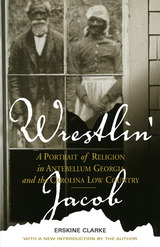 Wrestlin' Jacob: A Portrait of Religion in Antebellum Georgia and the Carolina Low Country
Erskine Clarke
University of Alabama Press, 2000 An important introduction to the efforts of whites to evangelize African Americans in the antebellum South First published in 1979, Wrestlin’ Jacob offers important insights into the intersection of black and white religious history in the South. Erskine Clarke provides two arenas—one urban and one rural—that show what happened when white ministers tried to bring black slaves into the fold of Christianity. Clarke illustrates how the good intentions—and vain illusions—of the white preachers, coupled with the degradation and cultural strength of the slaves, played a significant role in the development of black churches in the South. From 1833 to 1847, Reverend Charles Colcock Jones served as an itinerant minister to slaves on the rice and cotton plantations in Liberty County, Georgia. The aim of Jones, and of the largely Puritan-descended slave owners, was to harvest not only good Christians but also obedient and hard-working slaves. At the same time, similar efforts were under way in cosmopolitan Charleston, South Carolina. Charleston permitted blacks to worship only under the supervision of whites, and partially as a result, whites and blacks worshiped together in ways that would be unheard of later in the segregated South. Clarke examines not only the white ministers’ motivation in their missionary work but also the slaves’ reasons for becoming a part of the church. He addresses the important issue of the continuity of African traditions with the religious life of slaves and provides a significant introduction to the larger issues of slavery and religion in the South.
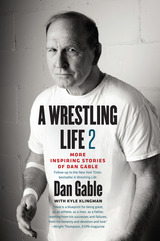 A Wrestling Life 2: More Inspiring Stories of Dan Gable
Dan Gable and Kyle Klingman
University of Iowa Press, 2018 When most people think of the celebrated greatness that is Coach Dan Gable, they think of an almost mythic intensity toward wrestling. Gable breathes and bleeds the sport, and faithfully applies lessons learned from both on and off the mat. Expanding upon Gable’s first collection of stories, A Wrestling Life 2 goes a little deeper into the mindset and life events that have shaped the man, the wrestler, and the coach.
Through stories funny, heartfelt, intense, and always engaging, Gable shares more about the life he has lead and what can be learned from those experiences. He goes on to detail what have come to be known as the Gable Trained principles that he follows to keep his life full of “wins,” the revelations about how to cultivate success at the highest levels, and the reasons behind these steps for living well.
A Wrestling Life spent two months on the New York Times sports bestseller list, and has become an instant classic of sports memoirs. A Wrestling Life 2 is sure to add to Gable’s ever-growing legacy and entertain and inspire wrestling fans everywhere.
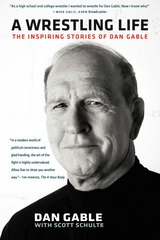 A Wrestling Life: The Inspiring Stories of Dan Gable
Dan Gable and Scott Schulte
University of Iowa Press, 2016 What does it take to be an Olympic gold medalist and to coach a collegiate team to fifteen NCAA titles? In A Wrestling Life: The Inspiring Stories of Dan Gable, famed wrestler and wrestling coach Dan Gable tells engaging and inspiring stories of his childhood in Waterloo, Iowa; overcoming the murder of his sister as a teenager; his sports career from swimming as a young boy, to his earliest wrestling matches, through the 1972 Olympics; coaching at the University of Iowa from the Banachs to the Brands; life-changing friendships he made along the way; and tales of his family life off the mat. A celebration of determination, teamwork, and the persevering human spirit, A Wrestling Life captures Gable’s methods and philosophies for reaching individual greatness as well as the incredible amount of fulfillment and satisfaction that comes from working as part of a team.
Whether we are athletes or not, we all dream of extreme success and are all looking to make our future the best it can be, but along the way we will undoubtedly need time to recover and rejuvenate. Let these stories inspire you to find your path to strength and achievement along whatever path you take.
Wrestling to Rasslin': Ancient Sport to American Spectacle
Gerald W. Morton and George M. O'Brien
University of Wisconsin Press, 1985 Wrestling to Rasslin’ traces the roots of one of man’s oldest competitive sports. Beginning in sporting bars in the late 1800s and graduating to Barnum sideshow tents, wrestling has thrilled the world over with such early athletes as William Muldoon, George Hackenschmidt, and Tom Jenkins. After World War II and the advent of television, wrestling took a turn toward the dramatic, emphasizing conflicts between good and evil.
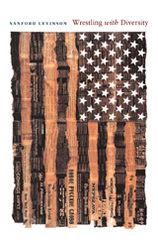 Wrestling with Diversity
Sanford Levinson
Duke University Press, 2003 “Diversity” has become a mantra within discussions of university admissions policies and many other arenas of American society. In the essays collected here, Sanford Levinson, a leading scholar of constitutional law and American government, wrestles with various notions of diversity. He begins by explaining why he finds the concept to be almost useless as a genuine guide to public policy. Discussing affirmative action in university admissions, including the now famous University of Michigan Law School case, he argues both that there may be good reasons to use preferences—including race and ethnicity—and that these reasons have relatively little to do with any cogently developed theory of diversity. Distinguished by Levinson’s characteristic open-mindedness and willingness to tease out the full implications of various claims, each of these nine essays, written over the past decade, develops a case study focusing on a particular aspect of public life in a richly diverse, and sometimes bitterly divided, society. Although most discussions of diversity have focused on race and ethnicity, Levinson is particularly interested in religious diversity and its implications. Why, he asks, do arguments for racial and ethnic diversity not also counsel a concern to achieve religious diversity within a student body? He considers the propriety of judges drawing on their religious views in making legal decisions and the kinds of questions Senators should feel free to ask nominees to the federal judiciary who have proclaimed the importance of their religion in structuring their own lives. In exploring the sense in which Sandy Koufax can be said to be a “Jewish baseball player,” he engages in broad reflections on professional identity. He asks whether it is desirable, or even possible, to subordinate merely "personal" aspects of one’s identity—religion, political viewpoints, gender—to the impersonal demands of the professional role. Wrestling with Diversity is a powerful interrogation of the assumptions and contradictions underlying public life in a multicultural world.
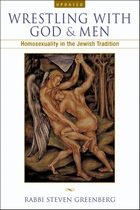 Wrestling with God and Men: Homosexuality in the Jewish Tradition
Rabbi Steven Greenberg
University of Wisconsin Press, 2005 For millennia, two biblical verses have been understood to condemn sex between men as an act so abhorrent that it is punishable by death. Traditionally Orthodox Jews, believing the scripture to be the word of God, have rejected homosexuality in accordance with this interpretation. In 1999, Rabbi Steven Greenberg challenged this tradition when he became the first Orthodox rabbi ever to openly declare his homosexuality.
Wrestling with God and Men is the product of Rabbi Greenberg’s ten-year struggle to reconcile his two warring identities. In this compelling and groundbreaking work, Greenberg challenges long held assumptions of scriptural interpretation and religious identity as he marks a path that is both responsible to human realities and deeply committed to God and Torah. Employing traditional rabbinic resources, Greenberg presents readers with surprising biblical interpretations of the creation story, the love of David and Jonathan, the destruction of Sodom, and the condemning verses of Leviticus. But Greenberg goes beyond the question of whether homosexuality is biblically acceptable to ask how such relationships can be sacred. In so doing, he draws on a wide array of nonscriptural texts to introduce readers to occasions of same-sex love in Talmudic narratives, medieval Jewish poetry and prose, and traditional Jewish case law literature. Ultimately, Greenberg argues that Orthodox communities must open up debate, dialogue, and discussion—precisely the foundation upon which Jewish law rests—to truly deal with the issue of homosexual love.
This book will appeal not only to members of the Orthodox faith but to all religious people struggling to resolve their belief in the scriptures with a desire to make their communities more open and accepting to gay and lesbian members. 2005 Finalist for the Lambda Literary Awards, for Religion/Spirituality
Wrestling with God: The Courts' Tortuous Treatment of Religion
Patrick M. Garry
Catholic University of America Press, 2006 Courts have often treated the two religion clauses of the First Amendment as contradictory, with the free exercise clause used to protect religious practices and the establishment clause employed to limit the public expression of religious beliefs. Wrestling with God not only reconciles the relationship between the two clauses but also distinguishes them in terms of their respective purposes.
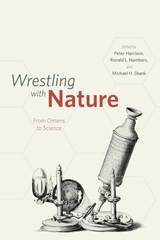 Wrestling with Nature: From Omens to Science
Edited by Peter Harrison, Ronald L. Numbers, and Michael H. Shank
University of Chicago Press, 2011 When and where did science begin? Historians have offered different answers to these questions, some pointing to Babylonian observational astronomy, some to the speculations of natural philosophers of ancient Greece. Others have opted for early modern Europe, which saw the triumph of Copernicanism and the birth of experimental science, while yet another view is that the appearance of science was postponed until the nineteenth century.
Rather than posit a modern definition of science and search for evidence of it in the past, the contributors to Wrestling with Nature examine how students of nature themselves, in various cultures and periods of history, have understood and represented their work. The aim of each chapter is to explain the content, goals, methods, practices, and institutions associated with the investigation of nature and to articulate the strengths, limitations, and boundaries of these efforts from the perspective of the researchers themselves. With contributions from experts representing different historical periods and different disciplinary specializations, this volume offers a fresh perspective on the history of science and on what it meant, in other times and places, to wrestle with nature.
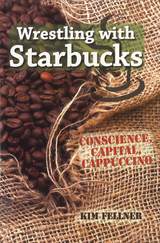 Wrestling with Starbucks: Conscience, Capital, Cappuccino
Fellner, Kim
Rutgers University Press, 2008 You can find a Starbucks coffeehouse almost anywhere, from Paris, France to Paducah, Kentucky, from the crowded streets of Thailand to shopping malls in Qatar. With nearly 200 of them in New York City alone, this coffee retail giant with humble beginnings has become an actor and icon in the global economy. As we sip our cappuccinos, frappuccinos, and our double half-caf venti low-fat mochaccinos, many of us wonder if Starbucks is a haven of civilization or a cultural predator, a good or bad employer, a fair trader or a global menace. In this entertaining and provocative ramble through Starbucks's ethos and actions, Kim Fellner asks how a coffeehouse chain with a liberal reputation came to symbolize, for some, the ills of globalization.
Armed with an open mind and a sense of humor, Fellner takes readers on an expedition into the muscle and soul of the coffee company. She finds a corporation filled with contradictions: between employee-friendly processes and anti-union practices; between an internationalist vision and a longing for global dominance; between community individuality and cultural hegemony. On a daily basis Starbucks walks a fine line. It must be profitable enough to please Wall Street and principled enough to please social justice advocates. Although observers might argue that the company has done well at achieving a balance, Starbucks's leaders run the risk of satisfying neither constituency and must constantly justify themselves to both.
Through the voices of Central American coffee farmers, officers at corporate headquarters, independent café owners, unionists, baristas, traders, global justice activists, and consumers, Fellner explores the forces that affect Starbucks's worth and worthiness. Along the way, she subjects her own unabashedly progressive perspective to scrutiny and emerges with a compelling and unexpected look at Starbucks, the global economy, our economic convictions, and the values behind our morning cup of joe.
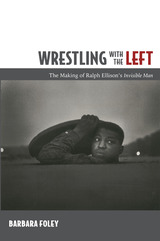 Wrestling with the Left: The Making of Ralph Ellison’s Invisible Man
Barbara Foley
Duke University Press, 2010 In Wrestling with the Left, Barbara Foley presents a penetrating analysis of the creation of Invisible Man. In the process she sheds new light not only on Ralph Ellison’s celebrated novel but also on his early radicalism and the relationship between African American writers and the left during the early years of the cold war. Foley scrutinized thousands of pages of drafts and notes for the novel, as well as the author’s early journalism and fiction, published and unpublished. While Ellison had cut his ties with the Communist left by the time he began Invisible Man in 1945, Foley argues that it took him nearly seven years to wrestle down his leftist consciousness (and conscience) and produce the carefully patterned cold war text that won the National Book Award in 1953 and has since become a widely taught American classic. She interweaves her account of the novel’s composition with the history of American Communism, linking Ellison’s political and artistic transformations to his distress at the Communists’ wartime policies, his growing embrace of American nationalism, his isolation from radical friends, and his recognition, as the cold war heated up, that an explicitly leftist writer could not expect to have a viable literary career. Foley suggests that by expunging a leftist vision from Invisible Man, Ellison rendered his novel not only less radical but also less humane than it might otherwise have been.
 The Wretch, Otherwise Known as Guerrino: A Bilingual Edition
Tullia d'Aragona
Iter Press, 2024 The only English translation of the first epic poem to be authored by an Italian woman.
This is an unabridged bilingual, fully annotated edition of Tullia d’Aragona’s epic poem The Wretch. This mid-century epic reflects the many historical and religious changes taking place in the first half of the sixteenth century in Europe and the burgeoning literary debates following the publication of another Italian epic poem, Ariosto’s Orlando Furioso. The Wretch recounts the adventures of Guerrino, a nobleman captured by pirates as an infant and sold into slavery. His famous quest in search of his parents and his identity involves abductions, same-sex seductions, and skirmishes with fantastical beasts as he travels through Europe, Turkey, Africa, India, Arabia, and the Purgatory of St. Patrick. The poem occupies an important position in the development of the prestigious epic genre, the highest step on the ladder to literary recognition and fame, and Tullia’s work paved the way for the epics of other women writers in subsequent decades.
 Wretched Rebels: Rural Disturbances on the Eve of the Chinese Revolution
Lucien Bianco
Harvard University Press, 2009 This book, a condensed translation of the prize- winning Jacqueries et révolution dans la Chine du XXe siècle, focuses on “spontaneous” rural unrest, uninfluenced by revolutionary intellectuals. Yet it raises issues inspired by the perennial concerns of revolutionary leaders, such as peasant “class consciousness” and China’s modernization.
The author shows that the predominant forms of protest were directed not against the landowning class but against agents of the state. Foremost among them, resistance to taxation had little to do with class struggle. By contrast, protest by poor agricultural laborers and heavily indebted households was extremely rare. Other forms of social protest were reactions less to social exploitation than to oppression by local powerholders. Peasant resistance to the late Qing “new policy” reforms did indeed impede China’s modernization. Decades later, peasant efforts to evade conscription, while motivated by abuses and inequities, weakened the anti-Japanese resistance.
The concluding chapter stresses persistent features of rural protest. It suggests that twentieth-century Chinese peasants were less different from seventeenth- or eighteenth-century French peasants than might be imagined and points to continuities between pre- and post-1949 rural protest.
 The Wright Company: From Invention to Industry
Edward J. Roach
Ohio University Press Fresh from successful flights before royalty in Europe, and soon after thrilling hundreds of thousands of people by flying around the Statue of Liberty, in the fall of 1909 Wilbur and Orville Wright decided the time was right to begin manufacturing their airplanes for sale. Backed by Wall Street tycoons, including August Belmont, Cornelius Vanderbilt III, and Andrew Freedman, the brothers formed the Wright Company. The Wright Company trained hundreds of early aviators at its flight schools, including Roy Brown, the Canadian pilot credited with shooting down Manfred von Richtofen — the “Red Baron”— during the First World War; and Hap Arnold, the commander of the U.S. Army Air Forces during the Second World War. Pilots with the company’s exhibition department thrilled crowds at events from Winnipeg to Boston, Corpus Christi to Colorado Springs. Cal Rodgers flew a Wright Company airplane in pursuit of the $50,000 Hearst Aviation Prize in 1911.
But all was not well in Dayton, a city that hummed with industry, producing cash registers, railroad cars, and many other products. The brothers found it hard to transition from running their own bicycle business to being corporate executives responsible for other people’s money. Their dogged pursuit of enforcement of their 1906 patent — especially against Glenn Curtiss and his company — helped hold back the development of the U.S. aviation industry. When Orville Wright sold the company in 1915, more than three years after his brother’s death, he was a comfortable man — but his company had built only 120 airplanes at its Dayton factory and Wright Company products were not in the U.S. arsenal as war continued in Europe.
Edward Roach provides a fascinating window into the legendary Wright Company, its place in Dayton, its management struggles, and its effects on early U.S. aviation.
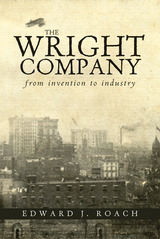 The Wright Company: From Invention to Industry
Edward J. Roach
Ohio University Press, 2014 Fresh from successful flights before royalty in Europe, and soon after thrilling hundreds of thousands of people by flying around the Statue of Liberty, in the fall of 1909 Wilbur and Orville Wright decided the time was right to begin manufacturing their airplanes for sale. Backed by Wall Street tycoons, including August Belmont, Cornelius Vanderbilt III, and Andrew Freedman, the brothers formed the Wright Company. The Wright Company trained hundreds of early aviators at its flight schools, including Roy Brown, the Canadian pilot credited with shooting down Manfred von Richtofen—the “Red Baron”—during the First World War; and Hap Arnold, the commander of the U.S. Army Air Forces during the Second World War. Pilots with the company’s exhibition department thrilled crowds at events from Winnipeg to Boston, Corpus Christi to Colorado Springs. Cal Rodgers flew a Wright Company airplane in pursuit of the $50,000 Hearst Aviation Prize in 1911. But all was not well in Dayton, a city that hummed with industry, producing cash registers, railroad cars, and many other products. The brothers found it hard to transition from running their own bicycle business to being corporate executives responsible for other people’s money. Their dogged pursuit of enforcement of their 1906 patent—especially against Glenn Curtiss and his company—helped hold back the development of the U.S. aviation industry. When Orville Wright sold the company in 1915, more than three years after his brother’s death, he was a comfortable man—but his company had built only 120 airplanes at its Dayton factory and Wright Company products were not in the U.S. arsenal as war continued in Europe. Edward Roach provides a fascinating window into the legendary Wright Company, its place in Dayton, its management struggles, and its effects on early U.S. aviation.
 Wright Studies, Volume One: Taliesin, 1911 - 1914
Narciso G. Menocal
Southern Illinois University Press, 1992
This inaugural issue is devoted to studies of Taliesin I. Designed and constructed in 1911 upon Wright’s return to Wisconsin from Europe, Taliesin I burned in August 1914. It thus became the most difficult Wright residence for Wright scholars to examine.
In this volume’s critical essays, Neil Levine offers a view of the different layers of meaning of Taliesin I; Scott Gartner explains the legend of the Welsh bard Taliesin and its meaning for Wright; Anthony Alofsin considers the influence of the playwright Richard Hovey and the feminist Ellen Key on Wright’s and Cheney’s thought of the period; and Narciso G. Menocal suggests that the Gilmore and O’Shea houses in Madison, Wisconsin, are a collective antecedent to Taliesin I.
To conclude the volume, Anthony Alofsin has written what amounts to a catalogue raisonné of the drawings and photographs of Taliesin I. Surprisingly, he finds no photographs of the living area and argues that those that have been published are in fact of Taliesin II.
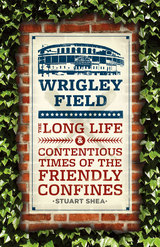 Wrigley Field: The Long Life and Contentious Times of the Friendly Confines
Stuart Shea
University of Chicago Press, 2014 In spring 1914, a new ballpark opened in Chicago. Hastily constructed after epic political maneuvering around Chicago’s and organized baseball’s hierarchies, the new Weeghman Park (named after its builder, fast-food magnate Charley Weeghman) was home to the Federal League’s Chicago Whales. The park would soon be known as Wrigley Field, one of the most emblematic and controversial baseball stadiums in America.
In Wrigley Field: The Long Life and Contentious Times of the Friendly Confines, Stuart Shea provides a detailed and fascinating chronicle of this living historic landmark. The colorful history revealed in Wrigley Field shows how the stadium has evolved through the years to meet the shifting priorities of its owners and changing demands of its fans. While Wrigley Field today seems irreplaceable, we learn that from game one it has been the subject of endless debates over its future, its design, and its place in the neighborhood it calls home. To some, it is a hallowed piece of baseball history; to others, an icon of mismanagement and ineptitude. Shea deftly navigates the highs and lows, breaking through myths and rumors. And with another transformation imminent, he brings readers up to date on negotiations, giving much-needed historical context to the maneuvering.
Wrigley Field is packed with facts, stories, and surprises that will captivate even the most fair-weather fan. From dollar signs (the Ricketts family paid $900 million for the team and stadium in 2009), to exploding hot dog carts (the Cubs lost that game 6–5), to the name of Billy Sianis’s curse-inducing goat (Sonovia), Shea uncovers the heart of the stadium’s history. As the park celebrates its centennial, Wrigley Field continues to prove that its colorful and dramatic history is more interesting than any of its mythology.
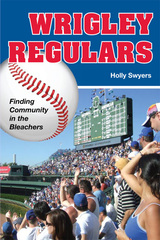 Wrigley Regulars: Finding Community in the Bleachers
Holly Swyers
University of Illinois Press, 2010 Holly Swyers turns to the bleachers of Chicago's iconic Wrigley Field in this unique exploration of the ways people craft a feeling of community under almost any conditions. Wrigley Regulars examines various components of community through the lens of "the regulars," a group of diehard Chicago Cubs fans who loyally populate the bleachers at Wrigley Field. In a time when many communities are perceived as either short-lived or disintegrating, the Wrigley regulars have formed their own thriving set of pregame rituals, ballpark traditions, and social hierarchies. Swyers examines the conditions, practices, and behaviors that help create and sustain the experience of community. At Wrigley Field, these practices can include the simple acts of scorecard-keeping and gathering at the same location before each game or insisting on elaborate rules of ticket distribution and seating arrangements, as well as more symbolic behaviors and superstitions that link the regulars to each other. A bleacher regular herself, Swyers uses a qualitative approach to define community as the ways in which people arrive at an awareness of themselves as a group with a particular relationship to the larger world. The case of the regulars offers a challenge to the claim that community is eroding in an increasingly fragmented and technologically driven culture, suggesting instead that our notions of where we find community and how we express it are changing.
 Write Arabic Now!: A Handwriting Workbook for Letters and Words
Barbara Romaine. Handwriting by Lana Iskandarani
Georgetown University Press, 2018 Learning to write fluidly in Arabic takes practice. This short workbook helps beginning learners practice each letter in all of its forms by tracing real Arabic words. Learners trace different words across each line to practice letter formation on tracing paper that is bound into the book. The words, handwritten by a native Arabic speaker, show a natural flow and present a model of clean handwriting. Write Arabic Now! can be used independently or alongside a textbook giving beginning learners a proven, effective means of improving their Arabic handwriting. Along with the workbook, audio of the practice words is also provided. Listening to the words as learners trace the handwriting facilitates acquisition of the Arabic writing and phonetic system, which strengthens reading comprehension skills. Audio of the words will be freely available on the Georgetown University Press website (press.georgetown.edu) as downloadable MP3s.
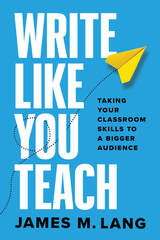 Write Like You Teach: Taking Your Classroom Skills to a Bigger Audience
James M. Lang
University of Chicago Press, 2025 This engaging guide offers practical advice to teachers on how to utilize their existing classroom skills to become more effective public writers.
After years spent cultivating their expertise and passion for a subject, scholars are uniquely positioned to write great books. Yet, accustomed to writing for an audience of their peers, many scholars find it challenging to adapt their writing to a style that is accessible and engaging to the general public. James M. Lang argues that academics are regularly called on to pitch their research to a general audience: their undergraduates. If only there were a way to translate the skills they use in the classroom into their writing. . . .
In Write Like You Teach, Lang—a veteran writer and teacher—distills the elements of good classroom teaching into guidelines for writing for a general audience. He encourages authors to pay attention to how their readers learn and to embrace exploration, experimentation, and creativity in their writing. Lang asks his readers to consider the questions that all great teachers ask themselves: How will I get the attention of my students? How do I make them curious about the subject? What stories or examples will illustrate the more difficult concepts or theories in the course? When will I pause in the class and give students a break from hard thinking? What will I do at the end of the class to remind students about my key messages and leave them wanting to know more?
Write Like You Teach includes examples from successful writers and useful anecdotes from Lang’s own classroom and writing career. Indeed, Lang takes his own advice to heart: like a good teacher, he varies the form of each chapter, making sure to introduce some surprises to keep the reader engaged. Each chapter ends with writing prompts to help readers practice their newly acquired skills, and an appendix provides additional advice on publishing and promoting one’s work. Teachers who follow Lang’s suggestions will find new ways to connect with their readers—and like any good student, they will never approach writing the same way again.
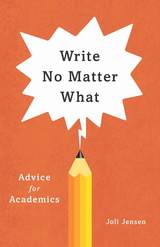 Write No Matter What: Advice for Academics
Joli Jensen
University of Chicago Press, 2017 With growing academic responsibilities, family commitments, and inboxes, scholars are struggling to fulfill their writing goals. A finished book—or even steady journal articles—may seem like an impossible dream. But, as Joli Jensen proves, it really is possible to write happily and productively in academe.
Jensen begins by busting the myth that universities are supportive writing environments. She points out that academia, an arena dedicated to scholarship, offers pressures that actually prevent scholarly writing. She shows how to acknowledge these less-than-ideal conditions, and how to keep these circumstances from draining writing time and energy. Jensen introduces tools and techniques that encourage frequent, low-stress writing. She points out common ways writers stall and offers workarounds that maintain productivity. Her focus is not on content, but on how to overcome whatever stands in the way of academic writing.
Write No Matter What draws on popular and scholarly insights into the writing process and stems from Jensen’s experience designing and directing a faculty writing program. With more than three decades as an academic writer, Jensen knows what really helps and hinders the scholarly writing process for scholars in the humanities, social sciences,and sciences.
Cut down the academic sword of Damocles, Jensen advises. Learn how to write often and effectively, without pressure or shame. With her encouragement, writers of all levels will find ways to create the writing support they need and deserve.
"Write Nothing about Politics": A Portrait of Hans Bernd von Haeften
Barbara von Haeften
Michigan State University Press, 2018 Barbara von Haeften’s memoir provides us with a moving account of the life of her husband Hans Bernd von Haeften, a lawyer, diplomat, and member of the Kreisau Circle resistance group in Nazi Germany. The Kreisau Circle participated in the assassination attempt of Hitler on July 20, 1944, carried out by Claus von Stauffenberg and Werner von Haeften, Hans’s brother. The Circle had also developed extensive plans for a new government to be put into place after the removal of Hitler. Drawing on personal letters and clear memories, this biography describes the life and political activity of an extraordinary man who was executed in the struggle to save Germany from the disastrous consequences of Hitler’s regime, and it sheds light on Barbara von Haeften’s knowledge of and participation in the resistance movement.
 Write Now: American Literature in the 1980s and 1990s, Volume 68
Sharon O’Brien
Duke University Press Write Now speculates on some of the dominant literary and critical trends in contemporary American literature, bringing together writers and critics in a volume that shows how literature engages both the mind and the heart. The essays in this collection show that today’s writers are blurring the lines between genres, challenging the boundaries that distinguish fiction from nonfiction, memoir from biography, essay from poetry, and autobiography from criticism. Contributors explore many of the relationships now shaping American literature and criticism, including the tensions between postmodernist playfulness and autobiographical earnestness, art and commerce, and politics and aesthetics. Novelists Miriam Levine, Robert Olmstead, and Jonathan Strong offers essays on their creative processes and discuss the imaginative and emotional mysteries of writing and reading. Essays on Alice Walker, Art Spiegelman, Marilynne Robinson, and AIDS literature examine how the act of writing is linked to themes of longing, discovery, desire, and betrayal. In evaluating both familiar and rarely studied contemporary literature from the standpoint of practicing writers as well as critics, this volume challenges the literary politics that silence critics as well as writers and testifies to the power of silent works to speak aloud. Certain to spark conversations about the politics of scholarship on current American writing, Write Now will be of interest to teachers and scholars of creative writing and American literary studies, those engaged in the arts of writing and literary criticism, and readers of contemporary American literature. Contributors. Bonnie Braendlin, Christine Caver, Thomas Doherty, Rachel Blau DePlessis, Jennifer Gillan, Stephanie Girard, Deborah Landau, Miriam Levine, Sharon O’Brien, Robert Olmstead, Juliana Spahr, Jonathan Strong
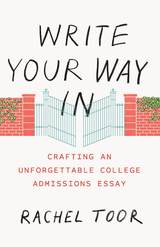 Write Your Way In: Crafting an Unforgettable College Admissions Essay
Rachel Toor
University of Chicago Press, 2017 Writing, for most of us, is bound up with anxiety. It’s even worse when it feels like your whole future—or at least where you’ll spend the next four years in college—is on the line. It’s easy to understand why so many high school seniors put off working on their applications until the last minute or end up with a generic and clichéd essay.
The good news? You already have the “secret sauce” for crafting a compelling personal essay: your own experiences and your unique voice.
The best essays rarely catalog how students have succeeded or achieved. Good writing shows the reader how you’ve struggled and describes mistakes you’ve made. Excellent essays express what you’re fired up about, illustrate how you think, and illuminate the ways you’ve grown.
More than twenty million students apply to college every year; many of them look similar in terms of test scores, grades, courses taken, extracurricular activities. Admissions officers wade through piles of files. As an applicant, you need to think about what will interest an exhausted reader. What can you write that will make her argue to admit you instead of the thousands of other applicants?
A good essay will be conversational and rich in vivid details, and it could only be written by one person—you. This book will help you figure out how to find and present the best in yourself. You’ll acquire some useful tools for writing well—and may even have fun—in the process.
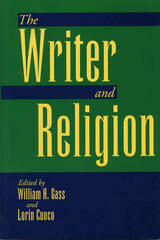 The Writer and Religion
Edited by William H. Gass and Lorin Cuoco
Southern Illinois University Press, 2000
“Every significant religious system stands upon a sacred text. This text is indeed its temple. Inside, its heroes and their history are enshrined. Although leaders of varying degrees of divinity are always involved in the creation of a new sect, they usually have short lives, often come to bad ends, and their influence, diluted by disciples, soon disappears as water does in sand. What the leader leaves behind is Mein Kampf or its equivalent: his testament. Occasionally, by the indolent, an existent text is chosen, or a compilation selected—a golden treasury. From time to time, other writings may be dubbed divine, as though knighted. This is not a simple social thing, however. It is more important than a nation adding to its territories. Any addition to the divine canon will approve, proscribe, or admit new thoughts, new practices, and in consequence elevate different people to positions of privilege and power.”—William H. Gass
These essays and panel discussions made up The Writer and Religion Conference held at Washington University in St. Louis. The six essays, all by writers of international stature, were followed by panel discussions, with audience participation.
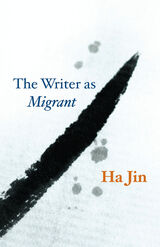 The Writer as Migrant
Ha Jin
University of Chicago Press, 2008 National Book Award winner Ha Jin raises questions about language, migration, and the place of literature in a rapidly globalizing world.
Consisting of three interconnected essays, The Writer as Migrant sets Ha Jin’s own work and life alongside those of other literary exiles, creating a conversation across cultures and between eras. He employs the cases of Alexander Solzhenitsyn and Chinese novelist Lin Yutang to illustrate the obligation a writer feels to the land of their birth, while Joseph Conrad and Vladimir Nabokov—who, like Ha Jin, adopted English for their writing—are enlisted to explore a migrant author’s conscious choice of a literary language. A final essay draws on V. S. Naipaul and Milan Kundera to consider the ways in which our era of perpetual change forces a migrant writer to reconceptualize the very idea of home. Throughout, Jin brings other celebrated writers into the conversation as well, including W. G. Sebald, C. P. Cavafy, and Salman Rushdie—refracting and refining the very idea of a literature of migration.
Simultaneously a reflection on a crucial theme and a fascinating glimpse at the writers who compose Ha Jin’s mental library, The Writer as Migrant is a work of passionately engaged criticism, one rooted in departures but feeling like a new arrival.
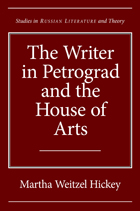 The Writer in Petrograd and the House of Arts
Martha Weitzel Hickey
Northwestern University Press, 2009 Founded by Maksim Gorky and Kornei Chukovsky in 1919 and disbanded in 1922, the Petrograd House of Arts occupied a crucial moment in Russia's cultural history. By chronicling the rise and fall of this literary landmark, this book conveys in greater depth and detail than ever before a significant but little studied period in Soviet literature. Poised between Russian culture's past and her Soviet future, between pre- and post-Revolutionary generations, this once lavish private home on the Nevsky Prospekt housed as many as fifty-six poets, novelists, critics, and artists at one time, during a period of great social and political turbulence. And as such, Hickey contends, the House of Arts served as a crucible for a literature in transition. Hickey shows how the House of Arts, though virtually ignored by Soviet-era cultural historians, played a critical role in shaping the lively literature of the next decade, a literature often straddling the border between fiction and non-fiction. Considering prose writers such as Yevgeny Zamyatin, Olga Forsh, the Serapion Brothers group, Viktor Shklovsky, Boris Eikhenbaum, as well as poets including Alexander Blok, Nikolay Gumilev, Anna Radlova, Osip Mandelstam, and Vladislav Khodasevich, she traces the comings and goings at the House of Arts: the meetings and readings and lectures and, most of all, the powerful influence of these interactions on those who briefly lived and worked there. In her work, the Petrograd House of Arts appears for the first time in all its complexity and importance, as a focal point for the social and cultural ferment of the day, and a turning point in the direction of Russian literature and criticism.
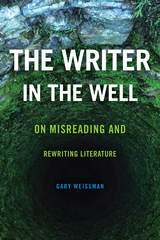 The Writer in the Well: On Misreading and Rewriting Literature
Gary Weissman
Ohio State University Press, 2016 In The Writer in the Well: On Misreading and Rewriting Literature, Gary Weissman takes readers inside Ira Sher’s short story “The Man in the Well,” about a group of children who discover a man trapped in an old well and decide not to help him. While absorbing readers in the pleasurable activity of interpreting this haunting tale, Weissman draws on dozens of his students’ responses to the short story, as well as his dialogue with its author, to show that the deepest engagement with literature occurs when we approach literary analysis as a collaborative enterprise conducted largely through writing.
Rethinking the methods and goals of literary analysis, Weissman’s study redefines the nature of authorial intention and reconceives literary interpretation as a writing-based practice. By integrating writing pedagogy with older and newer schools of thought—from psychoanalytic, reader-response, and poststructuralist theories to rhetorical narrative theory and cognitive literary studies—and bridging the fields of literary studies, composition and rhetoric, and creative writing, The Writer in the Well argues that the richest understanding of a literary work lies in probing how it has been misinterpreted and reconceived and offers a new “writer-response theory.”
This highly accessible and thought-provoking book, which includes the full text of Sher’s “The Man in the Well,” is designed to engage scholars, teachers, students, and avid readers of literature.
 The Writer of Modern Life: Essays on Charles Baudelaire
Walter Benjamin
Harvard University Press, 2006 Walter Benjamin's essays on the great French lyric poet Charles Baudelaire revolutionized not just the way we think about Baudelaire, but our understanding of modernity and modernism as well. In these essays, Benjamin challenges the image of Baudelaire as late-Romantic dreamer, and evokes instead the modern poet caught in a life-or-death struggle with the forces of the urban commodity capitalism that had emerged in Paris around 1850. The Baudelaire who steps forth from these pages is the flâneur who affixes images as he strolls through mercantile Paris, the ragpicker who collects urban detritus only to turn it into poetry, the modern hero willing to be marked by modern life in its contradictions and paradoxes. He is in every instance the modern artist forced to commodify his literary production: "Baudelaire knew how it stood with the poet: as a flâneur he went to the market; to look it over, as he thought, but in reality to find a buyer." Benjamin reveals Baudelaire as a social poet of the very first rank.
The introduction to this volume presents each of Benjamin's essays on Baudelaire in chronological order. The introduction, intended for an undergraduate audience, aims to articulate and analyze the major motifs and problems in these essays, and to reveal the relationship between the essays and Benjamin's other central statements on literature, its criticism, and its relation to the society that produces it.
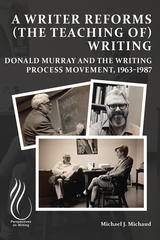 A Writer Reforms (the Teaching of) Writing: Donald Murray and the Writing Process Movement, 1963–1987
Michael J. Michaud
University Press of Colorado, 2024 In this archival investigation, Michael J. Michaud examines the life and work of Donald M. Murray, an important disciplinary and educational reformer who has for too long been misunderstood, caricatured, and dismissed by many writing studies theorists and historians. Focusing on Murray’s work at the University of New Hampshire from the 1960s to the 1980s, Michaud offers a corrective intended to establish a new legacy for Murray. Grounded in an understanding of the significance of his personal backstory to his reform efforts and narrated through the lens of a close reading of the day-to-day details of his work during the heady years of the writing process movement, A Writer Reforms (the Teaching of) Writing recounts the numerous innovations Murray contributed to composition pedagogy and traces the impact of his work on the growth of the field during a critical period in its development.
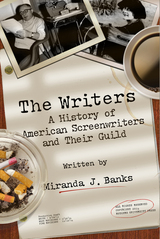 The Writers: A History of American Screenwriters and Their Guild
Banks, Miranda J
Rutgers University Press, 2016 Screenwriters are storytellers and dream builders. They forge new worlds and beings, bringing them to life through storylines and idiosyncratic details. Yet up until now, no one has told the story of these creative and indispensable artists. The Writers is the only comprehensive qualitative analysis of the history of writers and writing in the film, television, and streaming media industries in America.
Featuring in-depth interviews with over fifty writers—including Mel Brooks, Norman Lear, Carl Reiner, and Frank Pierson—The Writers delivers a compelling, behind-the-scenes look at the role and rights of writers in Hollywood and New York over the past century. Granted unprecedented access to the archives of the Writers Guild Foundation, Miranda J. Banks also mines over 100 never-before-published oral histories with legends such as Nora Ephron and Ring Lardner Jr., whose insight and humor provide a window onto the enduring priorities, policies, and practices of the Writers Guild.
With an ear for the language of storytellers, Banks deftly analyzes watershed moments in the industry: the advent of sound, World War II, the blacklist, ascension of television, the American New Wave, the rise and fall of VHS and DVD, and the boom of streaming media. The Writers spans historical and contemporary moments, and draws upon American cultural history, film and television scholarship and the passionate politics of labor and management. Published on the sixtieth anniversary of the formation of the Writers Guild of America, this book tells the story of the triumphs and struggles of these vociferous and contentious hero-makers.
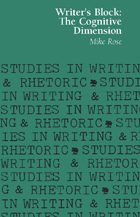 Writer's Block: The Cognitive Dimension
Mike Rose
Southern Illinois University Press, 1984 Writer’s block is more than a mere matter of discomfort and missed deadlines; sustained experiences of writer’s block may influence academic success and career choices. Writers in the business world, professional writers, and students all have known this most common and least studied problem with the composing process. Mike Rose, however, sees it as a limitable problem that can be precisely analyzed and remedied through instruction and tutorial programs. Rose defines writer’s block as “an inability to begin or continue writing for reasons other than a lack of skill or commitment,” which is measured by “passage of time with limited productive involvement in the writing task.” He applies insights of cognitive psychology to reveal dimensions of the problem never before examined. In his three-faceted approach, Rose develops and administers a questionnaire to identify writers experiencing both high and low degrees of blocking; through stimulated recall he examines the composing processes of these writers; and he proposes a cognitive conceptualization of writer’s block and of the composing process. In drawing up his model, Rose delineates many cognitive errors that cause blocking, such as inflexible rules or conflicting planning strategies. He also discusses the practices and strategies that promote effective composition. The reissue of this classic study of writer’s block includes a new preface by the author that advocates more mixed-methods research in rhetoric and composition, details how he conducted his writer’s block study, and discusses how his approach to a study like this would be different if conducted today.
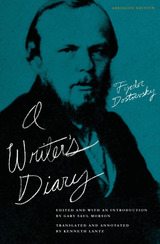 A Writer's Diary
Fydor Dostoevsky
Northwestern University Press, 2009 The essential entries from Dostoevsky's complete Diary, called his boldest experiment in literary form, are now available in this abridged edition; it is a uniquely encyclopedic forum of fictional and nonfictional genres. A Writer's Diary began as a column in a literary journal, but by 1876 Dostoevsky was able to bring it out as a complete monthly publication with himself as an editor, publisher, and sole contributor, suspending work on The Brothers Karamazov to do so. The Diary's radical format was matched by the extreme range of its contents. In a single frame it incorporated an astonishing variety of material: short stories; humorous sketches; reports on sensational crimes; historical predictions; portraits of famous people; autobiographical pieces; and plans for stories, some of which were never written while others appeared later in the Diary itself. A range of authorial and narrative voices and stances and an elaborate scheme of allusions and cross-references preserve and present Dostoevsky's conception of his work as a literary whole. Selected from the two-volume set, this abridged edition of A Writer's Diary appears in a single paperback volume, along with a new condensed introduction by editor Gary Saul Morson.
A Writer's Diary Volume 1: 1873-1876
Fyodor Dostoevsky
Northwestern University Press, 1997 Winner of the AATSEEL Outstanding Translation Award
This is the first paperback edition of the complete collection of writings that has been called Dostoevsky's boldest experiment with literary form; it is a uniquely encyclopedic forum of fictional and nonfictional genres. The Diary's radical format was matched by the extreme range of its contents. In a single frame it incorporated an astonishing variety of material: short stories; humorous sketches; reports on sensational crimes; historical predictions; portraits of famous people; autobiographical pieces; and plans for stories, some of which were never written while others appeared in the Diary itself.
A Writer's Diary Volume 2: 1877-1881
Fyodor Dostoevsky
Northwestern University Press, 1997 This is the second volume of the complete collection of writings that has been called Dostoevsky's boldest experiment with literary form; it is a uniquely encyclopedic forum of fictional and nonfictional genres. The Diary's radical format was matched by the extreme range of its contents. In a single frame it incorporated an astonishing variety of material: short stories; humorous sketches; reports on sensational crimes; historical predictions; portraits of famous people; autobiographical pieces; and plans for stories, some of which were never written while others appeared in the Diary itself.
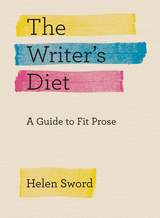 The Writer's Diet: A Guide to Fit Prose
Helen Sword
University of Chicago Press, 2016 Do your sentences sag? Could your paragraphs use a pick-me-up? If so, The Writer’s Diet is for you! It’s a short, sharp introduction to great writing that will help you energize your prose and boost your verbal fitness.
Helen Sword dispenses with excessive explanations and overwrought analysis. Instead, she offers an easy-to-follow set of writing principles: use active verbs whenever possible; favor concrete language over vague abstractions; avoid long strings of prepositional phrases; employ adjectives and adverbs only when they contribute something new to the meaning of a sentence; and reduce your dependence on four pernicious “waste words”: it, this, that, and there.
Sword then shows the rules in action through examples from William Shakespeare, Emily Dickinson, Martin Luther King Jr., John McPhee, A. S. Byatt, Richard Dawkins, Alison Gopnik, and many more. A writing fitness test encourages you to assess your own writing and get immediate advice on addressing problem areas. While The Writer’s Diet is as sleek and concise as the writing ideals contained within, this slim volume packs a powerful punch.
With Sword’s coaching writers of all levels can strengthen and tone their sentences with the stroke of a pen or the click of a mouse. As with any fitness routine, adhering to the rules requires energy and vigilance. The results, however, will speak for themselves.
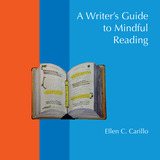 A Writer's Guide to Mindful Reading
Ellen C. Carillo
University Press of Colorado, 2017 A Writer's Guide to Mindful Reading develops and enacts the mindful reading pedagogy described in Ellen C. Carillo's scholarly monograph Securing a Place for Reading in Composition: The Importance of Teaching for Transfer (Utah State UP). Offering a comprehensive approach to literacy instruction by focusing on reading and writing, A Writer's Guide to Mindful Reading supports students as they become more reflective, deliberate, and mindful readers and writers by working within a metacognitive framework. The reading selections, assignments, and activities in this innovative textbook move students toward this goal by providing opportunities to apply and reflect on multiple ways of reading and writing, positioning students to develop a metacognitive awareness crucial to transferring what they learn about reading and writing to other courses and contexts. Because many of the difficulties that students encounter when writing are related to the difficulties posed by reading complex texts, A Writer's Guide to Mindful Reading gives instructors the tools to help students develop a repertoire of reading strategies that will help them become stronger readers and—by extension—stronger writers.
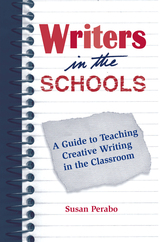 Writers in the Schools: A Guide to Teaching Creative Writing in the Classroom
Susan Perabo
University of Arkansas Press, 1997 For nearly three decades, writers from the University of Arkansas Programs in Creative Writing have traveled to Arkansas’s public and private schools to enrich classrooms by contributing a unique dose of teaching methods. The workshops and sessions these writers teach open avenues for student creativity and sharpen students’ language skills across the state. Writers in the Schools combines and condenses these proven techniques.
The lesson in this valuable text is that the imagination is the greatest tool a student possesses. Instead of lectures, the book relies on hands-on exercises and time tested activity plans that start students writing within minutes of discussing the basics of the writing process. Included are dozens of ideas to spark student creativity and hone rough drafts into finished poems and short stories.
The chapters proceed from a beginning level through intermediate and advanced levels and are useful to students in any grade from elementary through high school. Written and compiled by Susan Perabo, a former Writers in the Schools director, this volume is both a wonderful aid to teachers wishing to expand their classroom strategies in language arts and a perfect guide for writing program participants as they work with children to encourage powerful written expression in every discipline.
 The Writer's Lot: Culture and Revolution in Eighteenth-Century France
Robert Darnton
Harvard University Press, 2025 A pioneering social history of French writers during the Age of Revolution, from a world-renowned scholar and National Book Critics Circle Award winner.
In eighteenth-century France, writers emerged as a new kind of power. They stirred passions, shaped public opinion, and helped topple the Bourbon monarchy. Whether scribbling in dreary garrets or philosophizing in salons, they exerted so much influence that the state kept them under constant surveillance. A few became celebrities, but most were hacks, and none could survive without patrons or second jobs.
The Writer’s Lot is the first book to move beyond individual biography to take the measure of “literary France” as a whole. Historian Robert Darnton parses forgotten letters, manuscripts, police reports, private diaries, and newspapers to show how writers made careers and how they fit into the social order—or didn’t. Reassessing long-standing narratives of the French Revolution, Darnton shows that to be a reject was not necessarily to be a Jacobin: the toilers of the Parisian Grub Street sold their words to revolutionary publishers and government ministers alike. And while literary France contributed to the downfall of the ancien régime, it did so through its example more than its ideals: the contradiction inherent in the Republic of Letters—in theory, open to all; in practice, dominated by a well-connected clique—dramatized the oppressiveness of the French social system.
Darnton brings his trademark rigor and investigative eye to the character of literary France, from the culture war that pitted the “decadent” Voltaire against the “radical” Rousseau to struggling scribblers, booksellers, censors, printers, and royal spies. Their lives, little understood until now, afford rare insight into the ferment of French society during the Age of Revolution.
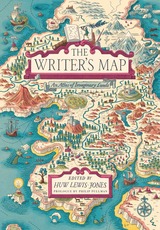 The Writer's Map: An Atlas of Imaginary Lands
Edited by Huw Lewis-Jones
University of Chicago Press, 2018 It’s one of the first things we discover as children, reading and drawing: Maps have a unique power to transport us to distant lands on wondrous travels. Put a map at the start of a book, and we know an adventure is going to follow. Displaying this truth with beautiful full-color illustrations, The Writer’s Map is an atlas of the journeys that our most creative storytellers have made throughout their lives. This magnificent collection encompasses not only the maps that appear in their books but also the many maps that have inspired them, the sketches that they used while writing, and others that simply sparked their curiosity.
Philip Pullman recounts the experience of drawing a map as he set out on one of his early novels, The Tin Princess. Miraphora Mina recalls the creative challenge of drawing up ”The Marauder’s Map” for the Harry Potter films. David Mitchell leads us to the Mappa Mundi by way of Cloud Atlas and his own sketch maps. Robert Macfarlane reflects on the cartophilia that has informed his evocative nature writing, which was set off by Robert Louis Stevenson and his map of Treasure Island. Joanne Harris tells of her fascination with Norse maps of the universe. Reif Larsen writes about our dependence on GPS and the impulse to map our experience. Daniel Reeve describes drawing maps and charts for The Hobbit film trilogy. This exquisitely crafted and illustrated atlas explores these and so many more of the maps writers create and are inspired by—some real, some imagined—in both words and images.
Amid a cornucopia of 167 full-color images, we find here maps of the world as envisaged in medieval times, as well as maps of adventure, sci-fi and fantasy, nursery rhymes, literary classics, and collectible comics. An enchanting visual and verbal journey, The Writer’s Map will be irresistible for lovers of maps, literature, and memories—and anyone prone to flights of the imagination.
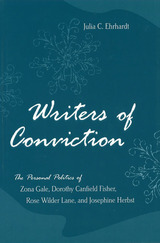 Writers of Conviction: The Personal Politics of Zona Gale, Dorothy Canfield Fisher, Rose Wilder Lane, and Josephine Herbst
Julia C. Ehrhardt
University of Missouri Press, 2004 In Writers of Conviction, Julia C. Ehrhardt examines the literary careers of four American writers who have not received the critical attention they deserve: Zona Gale, Dorothy Canfield Fisher, Rose Wilder Lane, and Josephine Herbst. For too long, popular twentieth-century female authors have been ignored by scholars—mainly because their stories were considered to lack serious political content or social commentary—despite their popularity with the general public. Writers of Conviction reintroduces these authors to reveal a fascinating and unexplored aspect of white, middle-class, female authorship: the provocative links between each writer’s personal politics and her literary aspirations. Ehrhardt uses this innovative critical perspective to show that each woman became a writer in order to express her political beliefs to the largest possible audience. Combining feminist literary theory, women’s history, and biographical criticism, each chapter presents a compelling study of a woman’s individual journey to political consciousness and the writings that resulted from it. Rather than discussing familiar issues—such as woman suffrage and equal rights—that usually dominate our understanding of women’s political activity in the early twentieth century as it surfaced in writings by canonical woman authors, Ehrhardt introduces readers to four lesser-known women and the political agendas they endorsed in both published and unpublished writings. In-depth analyses are presented on Gale’s support of the municipal-housekeeping movement, Fisher’s anxieties about the rise of New England tourism, Lane’s criticisms of the New Deal, and Herbst’s denunciation of the risks involved in illegal abortion. Ehrhardt offers a refreshing new perspective on Herbst’s fiction by putting sexuality rather than class at the center of the analysis. Writers of Conviction breaks new ground byalso assessing the current critical conception of legitimate political agendas. By highlighting not only the content of their writings but also the immense popularity these women enjoyed, Ehrhardt demonstrates that an investigation of personal politics forces critics to reconsider assumptions about literary movements and provides a provocative model for twenty-first-century feminist literary criticism.
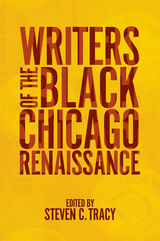 Writers of the Black Chicago Renaissance
Edited by Steven C. Tracy
University of Illinois Press, 2011 Writers of the Black Chicago Renaissance comprehensively explores the contours and content of the Black Chicago Renaissance, a creative movement that emerged from the crucible of rigid segregation in Chicago's "Black Belt" from the 1930s through the 1960s. Heavily influenced by the Harlem Renaissance and the Chicago Renaissance of white writers, its participants were invested in political activism and social change as much as literature, art, and aesthetics. The revolutionary writing of this era produced some of the first great accolades for African American literature and set up much of the important writing that came to fruition in the Black Arts Movement. The volume covers a vast collection of subjects, including many important writers such as Richard Wright, Gwendolyn Brooks, and Lorraine Hansberry as well as cultural products such as black newspapers, music, and theater. The book includes individual entries by experts on each subject; a discography and filmography that highlight important writers, musicians, films, and cultural presentations; and an introduction that relates the Harlem Renaissance, the White Chicago Renaissance, the Black Chicago Renaissance, and the Black Arts Movement. Contributors are Robert Butler, Robert H. Cataliotti, Maryemma Graham, James C. Hall, James L. Hill, Michael Hill, Lovalerie King, Lawrence Jackson, Angelene Jamison-Hall, Keith Leonard, Lisbeth Lipari, Bill V. Mullen, Patrick Naick, William R. Nash, Charlene Regester, Kimberly Ruffin, Elizabeth Schultz, Joyce Hope Scott, James Smethurst, Kimberly M. Stanley, Kathryn Waddell Takara, Steven C. Tracy, Zoe Trodd, Alan Wald, Jamal Eric Watson, Donyel Hobbs Williams, Stephen Caldwell Wright, and Richard Yarborough.
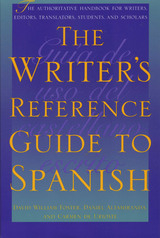 The Writer's Reference Guide to Spanish
By David William Foster, Daniel Altamiranda, and Carmen de Urioste
University of Texas Press, 2000 Writers and editors of Spanish have long needed an authoritative guide to written language usage, similar to The MLA Style Manual and The Chicago Manual of Style. And here it is! This reference guide provides comprehensive information on how the Spanish language is copyedited for publication. The book covers these major areas: - Language basics: capitalization, word division, spelling, and punctuation.
- Language conventions: abbreviations, professional and personal titles, names of organizations, and nationalities.
- Bibliographic format, particularly how Spanish differs from English.
- Spanish language forms of classical authors' names.
- Literary and grammatical terminology.
- Linguistic terminology.
- Biblical names and allusions.
- A dictionary of grammatical doubts, including usage, grammatical constructions of particular words and phrases, verbal irregularities, and gender variations.
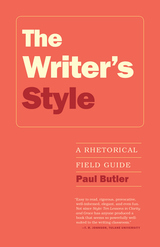 The Writer's Style: A Rhetorical Field Guide
Paul Butler
Utah State University Press, 2018 Designed to help all writers learn to use style as a rhetorical tool, taking into account audience, purpose, context, and occasion, The Writer’s Style is not only a style guide for a new generation but a new generation of style guide. The book helps writers learn new strategies inductively, by looking at firsthand examples of how they operate rhetorically, as well as deductively, through careful explanations in the text. The work focuses on invention, allowing writers to develop their own style as they analyze writing from varied genres.
In a departure from the deficiency model associated with other commonly used style guides, author Paul Butler encourages writers to see style as a malleable device to use for their own purposes, rather than a domain of rules or privilege. He encourages writing instructors to present style as a practical, accessible, and rhetorical tool, working with models that connect to a broad range of writing situations—including traditional texts like essays, newspaper articles, and creative nonfiction as well as digital texts in the form of tweets, Facebook postings, texts, email, visual rhetoric, YouTube, and others.
Though designed for use in first-year composition courses in which students are learning to write for various audiences, purposes, and contexts, The Writer’s Style is a richly layered work that will serve anyone considering how style applies to their professional, personal, creative, or academic writing.
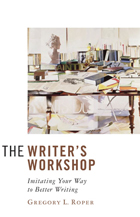 The Writer's Workshop: Imitating Your Way to Better Writing
Gregory L. Roper
Intercollegiate Studies Institute, 2007 The Writer’s Workshop takes an approach to teaching writing that is new only because it is so old. Today, rhetoric and composition typically proceed by ignoring what was done for 2,500 years in Western education. Gregory Roper, on the other hand, helps students learn to write in the way the great writers of the past themselves learned: by carefully imitating masters of the craft, including Cicero, Thomas Aquinas, Charles Dickens, Sojourner Truth, James Joyce, and Ernest Hemingway. By living in their workshops and apprenticing to these and other masters, apprentice writers—like apprentice musicians, painters, and blacksmiths of the past—will rapidly improve the complexity of their art and discover their own native voices.
Interspersed into chapters full of sound practical advice and challenging assignments are reflections on Great Ideas from “Realism and Impressionism” to “Nominalism and Modern Science.” Perfect for the college or even high school writing classroom—as well as a marvelous book for homeschoolers and others who would like to improve their own writing—The Writer’s Workshop is a fine practical guide, and Dr. Roper a friendly yet demanding teacher-mentor.
Writing
Marguerite Duras
University of Minnesota Press, 2011 Writing, one of Marguerite Duras’s last works, is a meditation on the process of writing and on her need for solitude in order to do it. In the five short pieces collected in this volume, she explores experiences that had an emotional impact on her and that inspired her to write. These vary from the death of a pilot in World War II, to the death of a fly, to an art exhibition. Two of the pieces were made into documentary films, and one was originally a short film. Both autobiographical and fictional, like much of her work, Writing displays Duras’s unique worldview and sensitive insight in her simple and poetic prose.
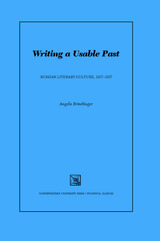 Writing a Usable Past: Russian Literary Culture, 1917-1937
Angela Brintlinger
Northwestern University Press, 2008 In Writing a Usable Past, Brintlinger considers the interactions of post-Revolutionary Russian and emigre culture with the genre of biography in its various permutations, arguing that in the years after the Revolution, Russian writers looked to the great literary figures of the past to help them construct a post-Revolutionary present. In detailed looks at the biographical writing of Yuri Tynianov, Vladislav Khodasevich, and Mikhail Bulgakov, Brintlinger follows each author's successful biography/ies and their failed attempts at biographies of Alexander Pushkin on the centennial anniversary of his death. Brintlinger compares the Pushkin biographies to the other biographies examined, and in a concluding chapter she considers other, more successful commemorations of the great poet's death. She argues that popular commemorations--exhibits, concerts, special issues of journals--were a more fitting biography than the genre of the "usable past." For post-revolutionary cultural actors, including Tynianov, Khodasevich, and Bulgakov, Pushkin was a symbol rather than a model for constructing that usable past.
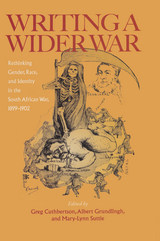 Writing A Wider War: Rethinking Gender, Race, and Identity in the South African War, 1899–1902
Greg Cuthbertson
Ohio University Press, 2002 A century after the South African War (1899-1902), historians are beginning to reevaluate the accepted wisdom regarding the scope of the war, its participants, and its impact. Writing a Wider War charts some of the changing historical constructions of the memorialization of suffering during the war.
Writing a Wider War presents a dramatically new interpretation of the role of Boer women in the conflict and profoundly changes how we look at the making of Afrikaner nationalism. African experiences of the war are also examined, highlighting racial subjugation in the context of colonial war and black participation, and showcasing important new research by African historians.
The collection includes a reassessment of British imperialism and probing essays on J. A. Hobson; the masculinist nature of life on commando among Boer soldiers; Anglo-Jewry; secularism; health and medicine; nursing, women, and disease in the concentration camps; and the rivalry between British politicians and generals. An examination of the importance of the South African War in contemporary British political economy, and the part played by imperial propaganda, rounds off a thoroughly groundbreaking reinterpretation of this formative event in South Africa's history.
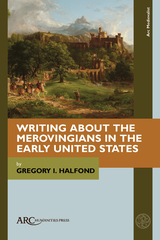 Writing about the Merovingians in the Early United States
Gregory I. Halfond
Arc Humanities Press, 2023
In a young American republic seeking to define itself in relation to European cultural and political models past and present, it was assumed that the history of Europe’s peoples could be tracked across time over the longue durée. From this perspective, even the barbarous long-haired kings of the distant Merovingian era helped to define the political and cultural identity of a France—and, indeed, a Europe—whose actions Americans recognized as relevant to their own republic. Americans saw medieval parallels not only in the actions of successive French regimes, but in contemporary transatlantic issues of anxiety, including the adjudication of claims of political legitimacy and the debate over the perpetuation of racial slavery. That early American writers located their own meanings in the history of Merovingian Francia is indicative of a less linear, and more diverse and transnational, historiography than previously recognized.
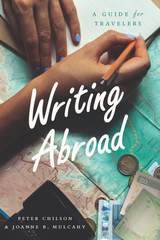 Writing Abroad: A Guide for Travelers
Peter Chilson and Joanne B. Mulcahy
University of Chicago Press, 2017 “Tell me all about your trip!” It’s a request that follows travelers as they head out into the world, and one of the first things they hear when they return. When we leave our homes to explore the wider world, we feel compelled to capture the experiences and bring the story home. But for those who don’t think of themselves as writers, putting experiences into words can be more stressful than inspirational.
Writing Abroad is meant for travelers of all backgrounds and writing levels: a student embarking on overseas study; a retiree realizing a dream of seeing China; a Peace Corps worker in Kenya. All can benefit from documenting their adventures, whether on paper or online. Through practical advice and adaptable exercises, this guide will help travelers hone their observational skills, conduct research and interviews, choose an appropriate literary form, and incorporate photos and videos into their writing.
Writing about travel is more than just safeguarding memories—it can transform experiences and tease out new realizations. With Writing Abroad, travelers will be able to deepen their understanding of other cultures and write about that new awareness in clear and vivid prose.
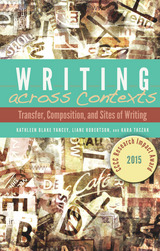 Writing across Contexts: Transfer, Composition, and Sites of Writing
Kathleen Yancey
Utah State University Press, 2014 Addressing how composers transfer both knowledge about and practices of writing, Writing across Contexts explores the grounding theory behind a specific composition curriculum called Teaching for Transfer (TFT) and analyzes the efficacy of the approach. Finding that TFT courses aid students in transfer in ways that other kinds of composition courses do not, the authors demonstrate that the content of this curriculum, including its reflective practice, provides a unique set of resources for students to call on and repurpose for new writing tasks. The authors provide a brief historical review, give attention to current curricular efforts designed to promote such transfer, and develop new insights into the role of prior knowledge in students' ability to transfer writing knowledge and practice, presenting three models of how students respond to and use new knowledge—assemblage, remix, and critical incident. A timely and significant contribution to the field, Writing across Contexts will be of interest to graduate students, composition scholars, WAC and writing-in-the-disciplines scholars, and writing program administrators.
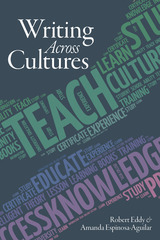 Writing Across Cultures
Robert Eddy
Utah State University Press, 2019 Writing Across Cultures invites both new and experienced teachers to examine the ways in which their training has—or has not—prepared them for dealing with issues of race, power, and authority in their writing classrooms. The text is packed with more than twenty activities that enable students to examine issues such as white privilege, common dialects, and the normalization of racism in a society where democracy is increasingly under attack. This book provides an innovative framework that helps teachers create safe spaces for students to write and critically engage in hard discussions.
Robert Eddy and Amanda Espinosa-Aguilar offer a new framework for teaching that acknowledges the changing demographics of US college classrooms as the field of writing studies moves toward real equity and expanding diversity. Writing Across Cultures utilizes a streamlined cross-racial and interculturally tested method of introducing students to academic writing via sequenced assignments that are not confined by traditional and static approaches. They focus on helping students become engaged members of a new culture—namely, the rapidly changing collegiate discourse community. The book is based on a multi-racial rhetoric that assumes that writing is inherently a social activity. Students benefit most from seeing composing as an act of engaged communication, and this text uses student samples, not professionally authored ones, to demonstrate this framework in action.
Writing Across Cultures will be a significant contribution to the field, aiding teachers, students, and administrators in navigating the real challenges and wonderful opportunities of multi-racial learning spaces.
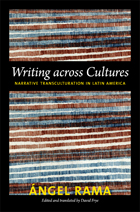 Writing across Cultures: Narrative Transculturation in Latin America
Angel Rama
Duke University Press, 2012 Ángel Rama was one of twentieth-century Latin America's most distinguished men of letters. Writing across Cultures is his comprehensive analysis of the varied sources of Latin American literature. Originally published in 1982, the book links Rama's work on Spanish American modernism with his arguments about the innovative nature of regionalist literature, and it foregrounds his thinking about the close relationship between literary movements, such as modernism or regionalism, and global trends in social and economic development. In Writing across Cultures, Rama extends the Cuban anthropologist Fernando Ortiz's theory of transculturation far beyond Cuba, bringing it to bear on regional cultures across Latin America, where new cultural arrangements have been forming among indigenous, African, and European societies for the better part of five centuries. Rama applies this concept to the work of the Peruvian novelist, poet, and anthropologist José María Arguedas, whose writing drew on both Spanish and Quechua, Peru's two major languages and, by extension, cultures. Rama considered Arguedas's novel Los ríos profundos (Deep Rivers) to be the most accomplished example of narrative transculturation in Latin America. Writing across Cultures is the second of Rama's books to be translated into English.
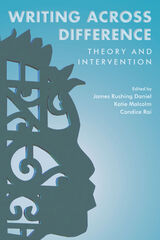 Writing Across Difference: Theory and Intervention
James Rushing Daniel
Utah State University Press, 2021 As the nation becomes increasingly divided by economic inequality, racial injustice, xenophobic violence, and authoritarian governance, scholars in writing studies have strived to develop responsive theories and practices to engage students, teachers, administrators, and citizens in the crisis of division and to begin the complicated work of radically transforming our inequitable institutions and society. Writing Across Difference is one of the first collections to gather scholars from across the field engaged in offering theoretical, methodological, and pedagogical resources for understanding, interrogating, negotiating, and writing across difference.
No text in composition has made such a sweeping attempt to place the multiple areas of translingualism, anti-racism, anticolonialism, interdisciplinarity, and disability into conversation or to represent the field as broadly unified around the concept of difference. The chapters in this book specifically explore how monolingual ideology is maintained in institutions and how translingual strategies can (re)include difference; how narrative-based interventions can promote writing across difference in classrooms and institutions by complicating dominant discourses; and how challenging dominant logics of class, race, ability, and disciplinarity can present opportunities for countering divisiveness.
Writing Across Difference offers writing scholars a sustained intellectual encounter with the crisis of difference and foregrounds the possibilities such an encounter offers for collective action toward a more inclusive and equitable society. It presents a variety of approaches for intervening in classrooms and institutions in the interest of focalizing, understanding, negotiating, and bridging difference. The book will be a valuable resource to those disturbed by the bigotry, violence, and fanaticism that mark our political culture and who are seeking inspiration, models, and methods for collective response.
Contributors: Anis Bawarshi, Jonathan Benda, Megan Callow, James Rushing Daniel, Cherice Escobar Jones, Laura Gonzales, Juan Guerra, Stephanie Kerschbaum, Katie Malcolm, Nadya Pittendrigh, Mya Poe, Candice Rai, Iris Ruiz, Ann Shivers-McNair, Neil Simpkins, Alison Y. L. Stephens, Sumyat Thu, Katherine Xue, Shui-yin Sharon Yam
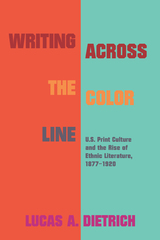 Writing across the Color Line: U.S. Print Culture and the Rise of Ethnic Literature, 1877-1920
Lucas A. Dietrich
University of Massachusetts Press, 2020 The turn of the twentieth century was a period of experimental possibility for U.S. ethnic literature as a number of writers of color began to collaborate with the predominantly white publishing trade to make their work commercially available. In this new book, Lucas A. Dietrich analyzes publishers' and writers' archives to show how authors—including María Amparo Ruiz de Burton, Charles W. Chesnutt, Finley Peter Dunne, W. E. B. Du Bois, and Sui Sin Far—drew readers into their texts by subverting existing stereotypes and adapting styles of literary regionalism and dialect writing.
Writing across the Color Line details how this body of literature was selected for publication, edited, manufactured, advertised, and distributed, even as it faced hostile criticism and frequent misinterpretation by white readers. Shedding light on the transformative potential of multiethnic literature and the tenacity of racist attitudes that dominated the literary marketplace, Dietrich proves that Native American, African American, Latinx, Asian American, and Irish American writers of the period relied on self-caricature, tricksterism, and the careful control of authorial personae to influence white audiences.
 Writing against Hitler: Hermann Budzislawski and the Making of Twentieth-Century Socialism
Daniel Siemens, Translated by Ben Fowkes
University of Wisconsin Press, 2025 In Writing Against Hitler, Daniel Siemens reconstructs the history of the struggles of socialist intellectuals in Germany from the 1920s through the post–World War II era by focusing on the life of one influential member of that group, Hermann Budzislawski (1901–78). In the 1930s, Budzislawski served as the editor in chief of the prominent antifascist journal Die neue Weltbühne. After the German occupation of France, he worked in exile in the United States until 1948, when he moved to East Germany. He became influential in training a new generation of journalists and worked as a politician.
Through the twin stories of a highly ambitious figure and the legendary publication he headed, Siemens charts the course of the intellectual Left’s rise and decline in power during the decades that shaped the political divides of the mid-twentieth century. Crucially, his account challenges the widely held belief that post-1989 German unification has represented a victory over the traumas of the past. Instead, Siemens shows the complexity of different strains of socialist thought and activity and reveals the contested place of Nazi Germany’s exiles at the center of Cold War Germany’s cultural history.
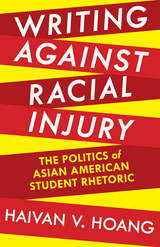 Writing against Racial Injury: The Politics of Asian American Student Rhetoric
Haivan V. Hoang
University of Pittsburgh Press, 2015 Writing against Racial Injury recalls the story of Asian American student rhetoric at the site of language and literacy education in post-1960s California. What emerged in the Asian American movement was a recurrent theme in U.S. history: conflicts over language and literacy difference masked wider racial tensions. Bringing together language and literacy studies, Asian American history and rhetoric, and critical race theory, Hoang uses historiography and ethnography to explore the politics of Asian American language and literacy education: the growth of Asian American student organizations and self-sponsored writing; the ways language served as thinly veiled trope for race in the influential Lau v. Nichols; the inheritance of a rhetoric of injury on college campuses; and activist rhetorical strategies that rearticulate Asian American racial identity. These fragments depict a troubling yet hopeful account of the ways language and literacy education alternately racialized Asian Americans while also enabling rearticulations of Asian American identity, culture, and history. This project, more broadly, seeks to offer educators a new perspective on racial accountability in language and literacy education.
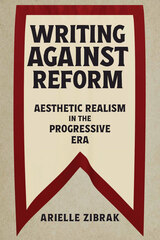 Writing Against Reform: Aesthetic Realism in the Progressive Era
Arielle Zibrak
University of Massachusetts Press, 2024 Throughout the Progressive Era, reform literature became a central feature of the American literary landscape. Works like Upton Sinclair’s The Jungle, Charlotte Perkins Gilman’s “The Yellow Wall-Paper,” and Jacob Riis’s How the Other Half Lives topped bestseller lists and jolted middle-class readers into action. While realism and social reform have a long-established relationship, prominent writers of the period such as Henry James, Edith Wharton, James Weldon Johnson, Rebecca Harding Davis, and Kate Chopin resisted explicit political rhetoric in their own works and critiqued reform aesthetics, which too often rang hollow. Arielle Zibrak reveals that while these writers were often seen as indifferent to the political currents of their time, their work is a part of a little explored debate on the relationship between literature and politics at the heart of Progressive Era publishing. Examining the critique of reform aesthetics within the tradition of American realist literature of the late nineteenth and early twentieth centuries, Writing Against Reform promises to change the way we think about the fiction of this period and many of America’s leading writers.
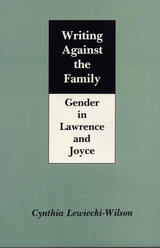 Writing Against the Family: Gender in Lawrence and Joyce
Cynthia Lewiecki-Wilson
Southern Illinois University Press, 1994
This first feminist book-length comparison of D. H. Lawrence and James Joyce offers striking new readings of a number of the novelists’ most important works, including Lawrence’s Man Who Died and Joyce’s Finnegans Wake.
Cynthia Lewiecki-Wilson argues that a feminist reader must necessarily read with and against theories of psychoanalysis to examine the assumptions about gender embedded within family relations and psychologies of gender found in the two authors’ works. She challenges the belief that Lawrence and Joyce are opposites, inhabiting contrary modernist camps; instead they are on a continuum, with both engaged in a reimagination of gender relations.
Lewiecki-Wilson demonstrates that both Lawrence and Joyce write against a background of family material using family plots and family settings. While previous discussions of family relations in literature have not questioned assumptions about the family and about sex roles within it, Lewiecki-Wilson submits the systems of meaning by which gender is construed to a feminist analysis. She reexamines Lawrence and Joyce from the point of view of feminist psychoanalysis, which, she argues, is not a set of beliefs or a single theory but a feminist practice that analyzes how systems of meaning construe gender and produce a psychology of gender.
Lewiecki-Wilson argues against a theory of representation based on gender, however, concluding that Lawrence’s and Joyce’s texts, in different ways, test the idea of a female aesthetic. She analyzes Lawrence’s portrait of family relations in Sonsand Lovers, The Rainbow, and Women in Love and compares Joyce’s Portrait of the Artist as a Young Man with Lawrence’s autobiographical text. She then shows that Portrait begins a deconstruction of systems of meaning that continues and increases in Joyce’s later work, including Ulysses.
Lewiecki-Wilson concludes by showing that Lawrence, Joyce, and Freud relate family material to Egyptian myth in their writings. She identifies Freud’s essay "Leonardo da Vinci and a Memory of Childhood" as an important source for Joyce’s Finnegans Wake, which portrays beneath the gendered individual a root androgyny and asserts an unfixed, evolutionary view of family relations.
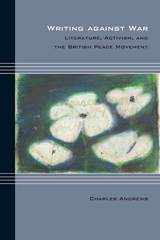 Writing against War: Literature, Activism, and the British Peace Movement
Charles Andrews
Northwestern University Press, 2017 In Writing against War, Charles Andrews integrates literary analysis and peace studies to create innovative new ways to view experimental British fiction in the interwar period.
The cataclysm of the First World War gave rise to the British Peace Movement, a spectrum of pacifist, internationalist, and antiwar organizations and individuals. Antiwar sentiments found expression not only in editorials, criticism, and journalism but also in novels and other works of literature. Writing against War examines the work of Aldous Huxley, Storm Jameson, Siegfried Sassoon, Rose Macaulay, and Virginia Woolf to analyze the effects of their attempts to employ fiction in the service of peace activism. It further traces how Huxley, Woolf, and others sought to reconcile their antiwar beliefs with implacable military violence.
The British Peace Movement's failure to halt the rise of fascism and the Second World War continues to cast a shadow over contemporary pacifist movements. Writing about War will fascinate scholars of peace studies and literature and offers valuable insights for current-day peace activists and artists who seek to integrate creativity with activism.
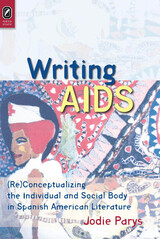 Writing AIDS: (Re)Conceptualizing the Individual and Social Body in Spanish American Literature
Jodie Parys
Ohio State University Press, 2012 Writing AIDS: (Re)Conceptualizing the Individual and Social Body in Spanish American Literature by Jodie Parys examines the ways in which AIDS has pervaded the personal and social imaginings of the body by highlighting textual representations found in Spanish American literature where AIDS has a significant role. This book addresses the current void in literary theory about HIV/AIDS in Spanish America by drawing together diverse literary texts to illuminate how these Spanish American writers have chosen to depict this disease and how their texts will be archived for future generations. All of the works are united under the broad topic of the body, conceived of as the individual comprising a physical, emotional, and spiritual entity both in isolation and in communion with others. Because HIV and AIDS are physical viruses that attack real bodies, it is the initial portal of entry into the exploration of the notion of identity and how it is impacted and altered by the arrival of AIDS. However, each individual is also a part of a larger community, and the virus itself impacts society as well as individuals. These separate but related concepts—the individual and social bodies—are the uniting themes that are woven throughout the entire study.
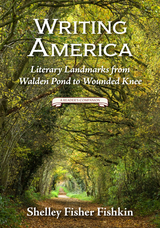 Writing America: Literary Landmarks from Walden Pond to Wounded Knee (A Reader's Companion)
Fishkin, Shelley Fisher
Rutgers University Press, 2015 Winner of the John S. Tuckey 2017 Lifetime Achievement Award for Mark Twain Scholarship from The Center for Mark Twain Studies
American novelist E.L. Doctorow once observed that literature “endows places with meaning.” Yet, as this wide-ranging new book vividly illustrates, understanding the places that shaped American writers’ lives and their art can provide deep insight into what makes their literature truly meaningful.
Published on the eve of the 50th anniversary of the Historic Preservation Act, Writing America is a unique, passionate, and eclectic series of meditations on literature and history, covering over 150 important National Register historic sites, all pivotal to the stories that make up America, from chapels to battlefields; from plantations to immigration stations; and from theaters to internment camps. The book considers not only the traditional sites for literary tourism, such as Mark Twain’s sumptuous Connecticut home and the peaceful woods surrounding Walden Pond, but also locations that highlight the diversity of American literature, from the New York tenements that spawned Abraham Cahan’s fiction to the Texas pump house that irrigated the fields in which the farm workers central to Gloria Anzaldúa’s poetry picked produce. Rather than just providing a cursory overview of these authors’ achievements, acclaimed literary scholar and cultural historian Shelley Fisher Fishkin offers a deep and personal reflection on how key sites bore witness to the struggles of American writers and inspired their dreams. She probes the global impact of American writers’ innovative art and also examines the distinctive contributions to American culture by American writers who wrote in languages other than English, including Yiddish, Chinese, and Spanish.
Only a scholar with as wide-ranging interests as Shelley Fisher Fishkin would dare to bring together in one book writers as diverse as Gloria Anzaldúa, Nicholas Black Elk, David Bradley, Abraham Cahan, S. Alice Callahan, Raymond Chandler, Frank Chin, Elizabeth Cook-Lynn, Countee Cullen, Frederick Douglass, Paul Laurence Dunbar, Jessie Fauset, William Faulkner, F. Scott Fitzgerald, Allen Ginsberg, Jovita González, Rolando Hinojosa, Langston Hughes, Zora Neale Hurston, Lawson Fusao Inada, James Weldon Johnson, Erica Jong, Maxine Hong Kingston, Irena Klepfisz, Nella Larsen, Emma Lazarus, Sinclair Lewis, Genny Lim, Claude McKay, Herman Melville, N. Scott Momaday, William Northup, John Okada, Miné Okubo, Simon Ortiz, Américo Paredes, John P. Parker, Ann Petry, Tomás Rivera, Wendy Rose, Morris Rosenfeld, John Steinbeck, Harriet Beecher Stowe, Henry David Thoreau, Mark Twain, Yoshiko Uchida, Tino Villanueva, Nathanael West, Walt Whitman, Richard Wright, Hisaye Yamamoto, Anzia Yezierska, and Zitkala-Ša.
Leading readers on an enticing journey across the borders of physical places and imaginative terrains, the book includes over 60 images, and extended excerpts from a variety of literary works. Each chapter ends with resources for further exploration. Writing America reveals the alchemy though which American writers have transformed the world around them into art, changing their world and ours in the process.
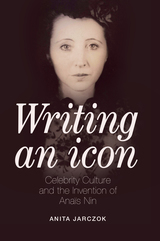 Writing an Icon: Celebrity Culture and the Invention of Anaïs Nin
Anita Jarczok
Ohio University Press, 2017 Anaïs Nin, the diarist, novelist, and provocateur, occupied a singular space in twentieth-century culture, not only as a literary figure and voice of female sexual liberation but as a celebrity and symbol of shifting social mores in postwar America. Before Madonna and her many imitators, there was Nin; yet, until now, there has been no major study of Nin as a celebrity figure. In Writing an Icon, Anita Jarczok reveals how Nin carefully crafted her literary and public personae, which she rewrote and restyled to suit her needs and desires. When the first volume of her diary was published in 1966, Nin became a celebrity, notorious beyond the artistic and literary circles in which she previously had operated. Jarczok examines the ways in which the American media appropriated and deconstructed Nin and analyzes the influence of Nin’s guiding hand in their construction of her public persona. The key to understanding Nin’s celebrity in its shifting forms, Jarczok contends, is the Diary itself, the principal vehicle through which her image has been mediated. Combining the perspectives of narrative and cultural studies, Jarczok traces the trajectory of Nin’s celebrity, the reception of her writings. The result is an innovative investigation of the dynamic relationships of Nin’s writing, identity, public image, and consumer culture.
 Writing and Being
Nadine Gordimer
Harvard University Press, 1995 Whether talking about her own writing, interpreting the works of others, or giving us a window on the world that "we in South Africa are attempting to reconstruct," Nadine Gordimer has much to tell us about the art of fiction and the art of life.
In this deeply resonant book Gordimer examines the tension for a writer between life's experiences and narrative creations. She asks first, where do characters come from--to what extent are they drawn from real life? We are touching on this question whenever we insist on the facts behind the fiction, Gordimer suggests, and here she tries to unravel the mysterious process that breathes "real" life into fiction. Exploring the writings of revolutionaries in South Africa, she shows how their struggle is contrastingly expressed in factual accounts and in lyrical poetry. Gordimer next turns to three writers linked by their search for a life that transcends their own time and place: in distinctive and telling ways, Naguib Mahfouz, Chinua Achebe, and Amos Oz defy accepted norms of loyalty to the mores and politics of their countries. Their search in Egypt, Nigeria, and Israel for a meaningful definition of home testifies to what it must be: the destination of the human spirit beyond national boundaries. Ending on a personal note, Gordimer reveals her own experience of "writing her way out of" the confines of a dying colonialism.
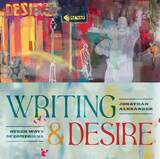 Writing and Desire: Queer Ways of Composing
Jonathan Aexander
University of Pittsburgh Press, 2023 Winner, 2023 CCCC Exemplar Award
Writing and Desire is a sustained, multimovement exploration of how writers, particularly queer writers, think and feel through desire as central to their writing practice. In a time of political, social, global, and ecological unrest, how might we understand desire—the desire for things to be different, the desire for a better world—as a crucial dimension of contemporary human experience? What might such a recentering of desire offer us, personally and politically? And how is writing itself, as one of the primary ways through which we express and explore ourselves, central to the expression and exploration of desire? Drawing on recent theoretical work in queer theory and the new materialism, Jonathan Alexander studies a range of queer and trans writers and artists who center desire in their practice and argues that conceptualizing writing as desire allows us to reexperience both writing and our world as saturated with our dreams and wishes for change. In a book both elegant and unsettling, and by turns personal, analytic, and experimental, Alexander challenges us—and himself—to think about desire and writing as the deepest manifestation of our hopes for the future.
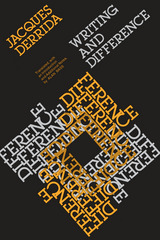 Writing and Difference
Jacques Derrida
University of Chicago Press, 1978 First published in 1967, Writing and Difference, a collection of Jacques Derrida's essays written between 1959 and 1966, has become a landmark of contemporary French thought. In it we find Derrida at work on his systematic deconstruction of Western metaphysics. The book's first half, which includes the celebrated essay on Descartes and Foucault, shows the development of Derrida's method of deconstruction. In these essays, Derrida demonstrates the traditional nature of some purportedly nontraditional currents of modern thought—one of his main targets being the way in which "structuralism" unwittingly repeats metaphysical concepts in its use of linguistic models.
The second half of the book contains some of Derrida's most compelling analyses of why and how metaphysical thinking must exclude writing from its conception of language, finally showing metaphysics to be constituted by this exclusion. These essays on Artaud, Freud, Bataille, Hegel, and Lévi-Strauss have served as introductions to Derrida's notions of writing and différence—the untranslatable formulation of a nonmetaphysical "concept" that does not exclude writing—for almost a generation of students of literature, philosophy, and psychoanalysis.
Writing and Difference reveals the unacknowledged program that makes thought itself possible. In analyzing the contradictions inherent in this program, Derrida foes on to develop new ways of thinking, reading, and writing,—new ways based on the most complete and rigorous understanding of the old ways. Scholars and students from all disciplines will find Writing and Difference an excellent introduction to perhaps the most challenging of contemporary French thinkers—challenging because Derrida questions thought as we know it.
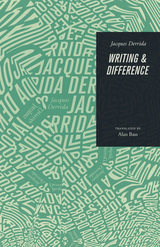 Writing and Difference
Jacques Derrida
University of Chicago Press, 1980 First published in 1967, Writing and Difference, a collection of Jacques Derrida's essays written between 1959 and 1966, has become a landmark of contemporary French thought. In it we find Derrida at work on his systematic deconstruction of Western metaphysics. The book's first half, which includes the celebrated essay on Descartes and Foucault, shows the development of Derrida's method of deconstruction. In these essays, Derrida demonstrates the traditional nature of some purportedly nontraditional currents of modern thought—one of his main targets being the way in which "structuralism" unwittingly repeats metaphysical concepts in its use of linguistic models.
The second half of the book contains some of Derrida's most compelling analyses of why and how metaphysical thinking must exclude writing from its conception of language, finally showing metaphysics to be constituted by this exclusion. These essays on Artaud, Freud, Bataille, Hegel, and Lévi-Strauss have served as introductions to Derrida's notions of writing and différence—the untranslatable formulation of a nonmetaphysical "concept" that does not exclude writing—for almost a generation of students of literature, philosophy, and psychoanalysis.
Writing and Difference reveals the unacknowledged program that makes thought itself possible. In analyzing the contradictions inherent in this program, Derrida foes on to develop new ways of thinking, reading, and writing,—new ways based on the most complete and rigorous understanding of the old ways. Scholars and students from all disciplines will find Writing and Difference an excellent introduction to perhaps the most challenging of contemporary French thinkers—challenging because Derrida questions thought as we know it.
Writing and Literacy in the World of Ancient Israel:Epigraphic Evidence from the Iron Age
Christopher A. Rollston
SBL Press, 2010 Winner of the 2011 Frank Moore Cross Prize as the most substantial volume in the field of Northwest Semitic Epigraphy
Ancient Northwest Semitic inscriptions from Israel, Phoenicia, Syria, Moab, Ammon, Edom, and Philistia enlighten and sharpen our vision of the Old Testament world in various ways. Writing and Literacy in the World of Ancient Israel focuses on this epigraphic evidence in order to broaden our understanding of the techniques and roles of writing, education, and literacy during this biblical period. To that end, the volume systematically covers scribal education; scribal implements; writing media such as stones, potsherds, and plaster; and the religious, administrative, and personal uses of writing. Its “handbook” format makes it easily accessible, including for use as a textbook in courses addressing the cultural context of ancient Israel.
 Writing and Materiality in China: Essays in Honor of Patrick Hanan
Judith T. Zeitlin
Harvard University Press, 2003 Speaking about Chinese writing entails thinking about how writing speaks through various media. In the guises of the written character and its imprints, traces, or ruins, writing is more than textuality. The goal of this volume is to consider the relationship of writing to materiality in China’s literary history and to ponder the physical aspects of the production and circulation of writing. To speak of the thing-ness of writing is to understand it as a thing in constant motion, transported from one place or time to another, one genre or medium to another, one person or public to another.
Thinking about writing as the material product of a culture shifts the emphasis from the author as the creator and ultimate arbiter of a text’s meaning to the editors, publishers, collectors, and readers through whose hands a text is reshaped, disseminated, and given new meanings. By yoking writing and materiality, the contributors to this volume aim to bypass the tendency to oppose form and content, words and things, documents and artifacts, to rethink key issues in the interpretation of Chinese literary and visual culture.
 Writing and Muslim Identity: Representations of Islam in German and English Transcultural Literature, 1990-2006
Frauke Matthes
University of London Press, 2012 Writing and Muslim Identity is a comparative study of Islam in contemporary German- and English-language literature. At a time when the non-Islamic world seems to be defining itself increasingly in contrast to the Islamic world, this literary exploration of Islam-related issues sheds new and valuable light on the cultural interaction between the Muslim world and 'the West'. Writing and Muslim Identity engages with literary representations of different versions of Islam and asks how travel and migration, the transcultural experiences of migrant and post-migrant Muslims, may have shaped the Islams encountered in today's Germany and Britain. With its comparative approach to 'cultural translations' as creative and challenging interactions between cultures that are constantly in flux, the study develops methods of engaging with notions of home and movement, gender and language, all of which may shape a (post-)migrant's transcultural experience. The book also offers a complex understanding of transcultural writing in relation to 'traditional' (Anglophone) as well as 'marginal' (German) postcoloniality. Frauke Matthes is Lecturer in German at the University of Edinburgh.
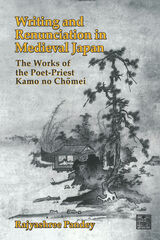 Writing and Renunciation in Medieval Japan: The Works of the Poet-Priest Kamo no Chomei
Rajyashree Pandey
University of Michigan Press, 1998 This is the first monograph-length study in English of Kamo no Chōmei, one of the most important literary figures of medieval Japan. Drawing upon a wide range of writings in a variety of genres from the Heian and Kamakura periods, Pandey focuses on the terms kyōgen kigo (wild words and fancy phrases), shoji soku nehan (samsara is nirvana), hōben (expedient means), and suki (single-minded devotion to an art). She shows how these terms deployed by writers in an attempt to reconcile literary and artistic activities with a commitment to Buddhism. By locating Chōmei within this broad context, the book offers an original reading of his texts, while at the same time casting a light upon intellectual preoccupations that were central to the times. Writing and Renunciation in Medieval Japan is an important contribution to a growing body of work that challenges the rigid distinction between the religious and literary—a distinction that would have made little sense to medieval writers, many of whom were poets as well as priests—and sheds light on the particular ways in which a religio-aesthetic tradition came to be articulated in medieval Japan. Through an examination of records left by Chōmei's contemporaries, the book also traces the life of Chōmei, particularly his activities as a court poet and the circumstances that led to his taking the tonsure.
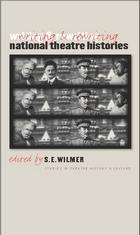 Writing and Rewriting National Theatre Histories
S.E. Wilmer
University of Iowa Press, 2004 Historians of theatre face the same temptations and challenges as other historians: they negotiate assumptions (their own and those of others) about national identity and national character; they decide what events and actors to highlight--or omit--and what framework and perspective to use for telling the story. Personal biases, trends in scholarship, and sociopolitical contexts influence all histories; and theatre histories, too, are often revised to reflect changing times and interests. This significant collection examines the problems and challenges of formulating national theatre histories.The essayists included here--leading theatre scholars from all over the world, many of whom wrote essays specifically for this volume--provide an international context for national theatre histories as well as studies of individual nations. They cover a wide geographical area: Asia, the Middle East, Africa, Europe, and North America. The essays contrast large countries (India, Indonesia) with small (Ireland), newly independent (Slovenia) with established (U.S.A.), developed (Canada) with developing (Mexico, South Africa), capitalist (U.S.A.) with formerly communist (Russia), monolingual (Sweden) with multilingual (Belgium, Canada), and countries with stable historical boundaries (Sweden) with those whose borders have shifted (Germany).The essays also explore such sociopolitical issues as the polarization of language groups, the importance of religion, the invisibility of ethnic minorities, the redrawing of geographical borders, changes in ideology, and the dismantling of colonial legacies. Finally, they examine such common problems of history writing as types of evidence, periodization, canonization, styles of narrative, and definitions of key terms.Writing and Rewriting National Theatre Histories will be of special interest to students and scholars of theatre, cultural studies, and historiography.
Writing and School Reform: Writing Instruction in the Age of Common Core and Standardized Testing
Joanne Addison
University Press of Colorado, 2017 In Writing and School Reform, Joanne Addison and Sharon James McGee respond to a testing and accountability movement that has imposed increasingly stronger measures of control over our classrooms, shifted teaching away from best practices, and eroded teacher and student agency. Drawing on historical and empirical research, Writing and School Reform details the origins of the accountability movement, explores its emerging effects on the teaching of writing, and charts a path forward that reasserts the agency of teachers and researchers in the field.
 Writing and the West German Protest Movements: The Textual Revolution
Mererid Puw Davies
University of London Press, 2016 The 1960s protest movements marked an astonishing moment for West Germany. They developed a political critique, but are above all distinctive for their overwhelming emphasis on culture and the symbolic. In particular, reading and writing had a uniquely prestigious status for West German protesters, who produced an extraordinary textual culture ranging from graffiti and flyers to agit-prop poetry and autobiographical prose. By turns witty, provocative, reflective and offensive, the avantgarde roots of anti-authoritarianism are as palpable in their texts as their debt to high literature. But due to this culture’s (apparently) anti-literary tone, it has often remained illegible to traditional criticism. This volume presents close readings and analyses of emblematic examples of texts, some forgotten, others better known, embedding them in historical, cultural, theoretical and aesthetic context, and illuminating representative moments and preoccupations in anti-authoritarian culture, from the Vietnam War to the Nazi past, to dirt and hygiene. They outline an anti-authoritarian poetics and uncover some of the texts’ latent content, revealing often hidden tensions and contradictions, above all in relation to the German past and questions of authority.
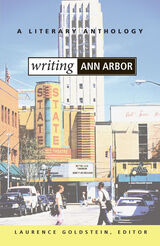 Writing Ann Arbor: A Literary Anthology
Laurence Goldstein, Editor
University of Michigan Press, 2005 Ann Arbor and the University of Michigan have always been natural settings for the writing life, offering perennial inspiration to the many artists, poets, locals, and students who have called the city and the classroom home. Writing Ann Arbor collects fiction, essay, poetry, memoir, and drama by Max Apple, Charles Baxter, Sven Birkerts, Donald Hall, Robert Hayden, Tom Hayden, Jane Kenyon, Thomas Lynch, Ross Macdonald, Frank O'Hara, Marge Piercy, Dudley Randall, Ruth Reichl, Elwood Reid, Bob Ufer, Wendy Wasserstein, and Nancy Willard, among many others.
The anthology is eclectic and engaging, with many wonderful surprises: an essay on the Underground Railroad in Ann Arbor; one on basketball legend Cazzie Russell; an essay by Arthur Miller; an excerpt from Joyce Carol Oates's All the Good People I've Left Behind; a selection from Tender at the Bone: Growing Up at the Table by food writer and Gourmet magazine editor Ruth Reichl; and much more.
This is more than a series of portraits of Ann Arbor and the University of Michigan; it is a miniature time capsule, a look into the shifting cultural currents of the last two centuries from some of the greatest thinkers and writers of those times.
Poet and literary scholar Laurence Goldstein is Professor of English at the University of Michigan and Editor of the Michigan Quarterly. He is the author of three books of poetry and several books of literary criticism, including The American Poet at the Movies.
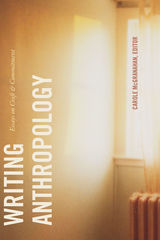 Writing Anthropology: Essays on Craft and Commitment
Carole McGranahan, editor
Duke University Press, 2020 In Writing Anthropology, fifty-two anthropologists reflect on scholarly writing as both craft and commitment. These short essays cover a wide range of territory, from ethnography, genre, and the politics of writing to affect, storytelling, authorship, and scholarly responsibility. Anthropological writing is more than just communicating findings: anthropologists write to tell stories that matter, to be accountable to the communities in which they do their research, and to share new insights about the world in ways that might change it for the better. The contributors offer insights into the beauty and the function of language and the joys and pains of writing while giving encouragement to stay at it—to keep writing as the most important way to not only improve one’s writing but to also honor the stories and lessons learned through research. Throughout, they share new thoughts, prompts, and agitations for writing that will stimulate conversations that cut across the humanities.
Contributors. Whitney Battle-Baptiste, Jane Eva Baxter, Ruth Behar, Adia Benton, Lauren Berlant, Robin M. Bernstein, Sarah Besky, Catherine Besteman, Yarimar Bonilla, Kevin Carrico, C. Anne Claus, Sienna R. Craig, Zoë Crossland, Lara Deeb, K. Drybread, Jessica Marie Falcone, Kim Fortun, Kristen R. Ghodsee, Daniel M. Goldstein, Donna M. Goldstein, Sara L. Gonzalez, Ghassan Hage, Carla Jones, Ieva Jusionyte, Alan Kaiser, Barak Kalir, Michael Lambek, Carole McGranahan, Stuart McLean, Lisa Sang Mi Min, Mary Murrell, Kirin Narayan, Chelsi West Ohueri, Anand Pandian, Uzma Z. Rizvi, Noel B. Salazar, Bhrigupati Singh, Matt Sponheimer, Kathleen Stewart, Ann Laura Stoler, Paul Stoller, Nomi Stone, Paul Tapsell, Katerina Teaiwa, Marnie Jane Thomson, Gina Athena Ulysse, Roxanne Varzi, Sita Venkateswar, Maria D. Vesperi, Sasha Su-Ling Welland, Bianca C. Williams, Jessica Winegar
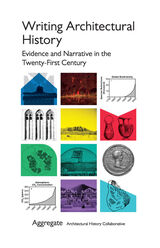 Writing Architectural History: Evidence and Narrative in the Twenty-First Century
Aggregate Architectural History Collective
University of Pittsburgh Press, 2021 Over the past two decades, scholarship in architectural history has transformed, moving away from design studio pedagogy and postmodern historicism to draw instead from trends in critical theory focusing on gender, race, the environment, and more recently global history, connecting to revisionist trends in other fields. With examples across space and time—from medieval European coin trials and eighteenth-century Haitian revolutionary buildings to Weimar German construction firms and present-day African refugee camps—Writing Architectural History considers the impact of these shifting institutional landscapes and disciplinary positionings for architectural history. Contributors reveal how new methodological approaches have developed interdisciplinary research beyond the traditional boundaries of art history departments and architecture schools, and explore the challenges and opportunities presented by conventional and unorthodox forms of evidence and narrative, the tools used to write history.
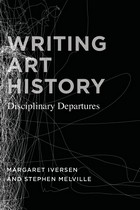 Writing Art History: Disciplinary Departures
Margaret Iversen and Stephen Melville
University of Chicago Press, 2010 Faced with an increasingly media-saturated, globalized culture, art historians have begun to ask themselves challenging and provocative questions about the nature of their discipline. Why did the history of art come into being? Is it now in danger of slipping into obsolescence? And, if so, should we care? In Writing Art History, Margaret Iversen and Stephen Melville address these questions by exploring some assumptions at the discipline’s foundation. Their project is to excavate the lost continuities between philosophical aesthetics, contemporary theory, and art history through close readings of figures as various as Michael Baxandall, Martin Heidegger, Jacques Lacan, and Alois Riegl. Ultimately, the authors propose that we might reframe the questions concerning art history by asking what kind of writing might help the discipline to better imagine its actual practices—and its potential futures.
Writing as a Human Activity: Implications and Applications of the Work of Charles Bazerman
Paul M. Rogers
University Press of Colorado, 2023 Writing As a Human Activity offers a collection of original essays that attempt to account for Charles Bazerman’s shaping influence on the field of writing studies. Through scholarly engagement with his ideas, the 16 chapters—written by authors from Asia, Europe, North America, and South America—address Bazerman’s foundational scholarship on academic and scientific writing, genre theory, activity theory, writing research, writing across the curriculum, writing pedagogy, the sociology of knowledge, new media and technology, and international aspects of writing. Collectively, the authors use Bazerman’s work as a touchstone to consider contemporary contexts of writing as a human activity.
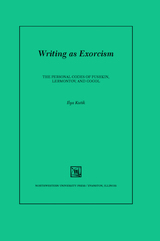 Writing as Exorcism: The Personal Codes of Pushkin, Lermontov, and Gogol
Ilya Kutik
Northwestern University Press, 2005 "Sometimes it takes a poet to read a poet. In this inspired, idiosyncratic study, Ilya Kutik offers exemplary interpretations of three Russian writers, of the lessons of fatalism, and of the complexities of reading." —from the Introduction
A remarkable literary performance in its own right, this interpretive essay brings a highly original poetic sensibility to bear on the lives and works of three major Russian writers. It is Ilya Kutik's contention that many writers are tormented by secret fears and desires that only writing—in particular, the use of certain words and images—can exorcise. Making this biographical approach peculiarly his own—and susceptible to the nuances of comedy, tragedy, and critical equanimity—Kutik reads works of Alexander Pushkin, Mikhail Lermontov, and Nikolai Gogol, three Russian writers who were demonstrably subject to the whims, superstitions, and talismans that Kutik identifies. Exposing the conjunction of literary effort and private act in writings such as "The Queen of Spades," Dead Souls, and A Hero of Our Time, Kutik's work gives us a new way of understanding these masterpieces of Russian literature and their authors, and a new way of reading the mysteries of life and literature as mutually enriching.
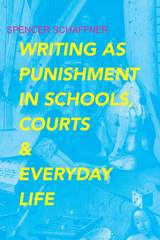 Writing as Punishment in Schools, Courts, and Everyday Life
Spencer Schaffner
University of Alabama Press, 2019 A probing and prescient consideration of writing as an instrument of punishment
Writing tends to be characterized as a positive aspect of literacy that helps us to express our thoughts, to foster interpersonal communication, and to archive ideas. However, there is a vast array of evidence that emphasizes the counterbelief that writing has the power to punish, shame, humiliate, control, dehumanize, fetishize, and transform those who are subjected to it. In Writing as Punishment in Schools, Courts, and Everyday Life, Spencer Schaffner looks at many instances of writing as punishment, including forced tattooing, drunk shaming, court-ordered letters of apology, and social media shaming, with the aim of bringing understanding and recognition to the coupling of literacy and subjection.
Writing as Punishment in Schools, Courts, and Everyday Life is a fascinating inquiry into how sinister writing can truly be and directly questions the educational ideal that powerful writing is invariably a public good. While Schaffner does look at the darker side of writing, he neither vilifies nor supports the practice of writing as punishment. Rather, he investigates the question with humanistic inquiry and focuses on what can be learned from understanding the many strange ways that writing as punishment is used to accomplish fundamental objectives in everyday life.
Through five succinct case studies, we meet teachers, judges, parents, sex traffickers, and drunken partiers who have turned to writing because of its presumed power over writers and readers. Schaffner provides careful analysis of familiar punishments, such as schoolchildren copying lines, and more bizarre public rituals that result in ink-covered bodies and individuals forced to hold signs in public.
Schaffner argues that writing-based punishment should not be dismissed as benign or condemned as a misguided perversion of writing, but instead should be understood as an instrument capable of furthering both the aims of justice and degradation.
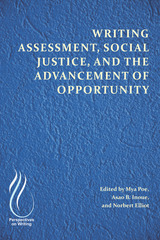 Writing Assessment, Social Justice, and the Advancement of Opportunity
Mya Poe
University Press of Colorado, 2018 This edited collection provides the first principled examination of social justice and the advancement of opportunity as the aim and consequence of writing assessment. Contributors to the volume offer interventions in historiographic studies, justice-focused applications in admission and placement assessment, innovative frameworks for outcomes design, and new directions for teacher research and professional development. Drawing from contributors' research, the collection constructs a social justice canvas—an innovative technique that suggests ways that principles of social justice can be integrated into teaching and assessing writing. The volume concludes with 18 assertions on writing assessment designed to guide future research in the field. Written with the intention of making a restorative milestone in the history of writing assessment, Writing Assessment, Social Justice, and the Advancement of Opportunity generates new directions for the field of writing studies. This volume will be of interest to all stakeholders interested in the assessment of written communication and the role of literacy in society, including advisory boards, administrators, faculty, professional organizations, students, and the public.
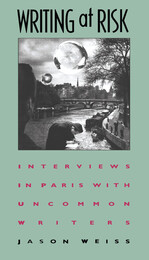 Writing At Risk: Interviews Uncommon Writers
Jason Weiss
University of Iowa Press, 1991 Much has been made of the image of writers in Paris—romanticized and idealized in fiction and on screen, these émigré artists in sidewalk cafés spark our imagination with unusual force. But rarely do the real-life figures speak to us directly to comment on their work, their lives, and their reasons for choosing to live and work in Paris. In these striking interviews, E. M. Cioran, Julio Cortázar, Brion Gysin, Eugène Ionesco, Carlos Fuentes, Jean-Claude Carrière, Milan Kundera, Nathalie Sarraute, and Edmund Jabès do just this as they speak out on the risks they've taken, on their struggles and discoveries, on tradition, challenge, and their near-unanimous status as émigrés. A consummate interviewer, Jason Weiss spoke in depth with these pathbreaking artists regarding their lives, their craft, and their very special relationship to Paris. Their writings were naturally the main focus of investigation, but Weiss' concern was always to build on previous interviews, to deepen certain lines of inquiry and open new ones, to contribute fresh material to the ongoing record. The result is a series of invigorating, detailed portraits that go beyond personality, habits, and pleasures to examine some of the causes and effects in the unique relationship of place and temperament. Writing at Risk suggests that there is more than we suspect binding writers of such disparate cultures and genres…perhaps their attitudes toward writing, perhaps their common attraction to risk. Readers will relish the immediacy of these interviews and will want to (re)discover the work of these exceptional artists.
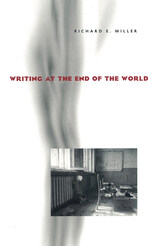 Writing at the End of the World
Richard E. Miller
University of Pittsburgh Press, 2005 What do the humanities have to offer in the twenty-first century? Are there compelling reasons to go on teaching the literate arts when the schools themselves have become battlefields? Does it make sense to go on writing when the world itself is overrun with books that no one reads? In these simultaneously personal and erudite reflections on the future of higher education, Richard E. Miller moves from the headlines to the classroom, focusing in on how teachers and students alike confront the existential challenge of making life meaningful. In meditating on the violent events that now dominate our daily lives—school shootings, suicide bombings, terrorist attacks, contemporary warfare—Miller prompts a reconsideration of the role that institutions of higher education play in shaping our daily experiences, and asks us to reimagine the humanities as centrally important to the maintenance of a compassionate, secular society. By concentrating on those moments when individuals and institutions meet and violence results, Writing at the End of the World provides the framework that students and teachers require to engage in the work of building a better future.
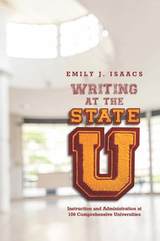 Writing at the State U: Instruction and Administration at 106 Comprehensive Universities
Emily Isaacs
Utah State University Press, 2017 Writing at the State U presents a comprehensive, empirical examination of writing programs at 106 universities. Rather than using open survey calls and self-reporting, Emily Isaacs uses statistical analysis to show the extent to which established principles of writing instruction and administration have been implemented at state comprehensive universities, the ways in which writing at those institutions has differed from writing at other institutions over time, and how state institutions have responded to major scholarly debates concerning first-year composition and writing program administration. Isaacs’s findings are surprising: state university writing programs give lip service to important principles of writing research, but many still emphasize grammar instruction and a skills-based approach, classes continue to be outsized, faculty development is optional, and orientation toward basic writing is generally remedial. As such, she considers where a closer match between writing research and writing instruction might help to expose and remedy these difficulties and identifies strategies and areas where faculty or writing program administrators are empowered to enact change. Unique in its wide scope and methodology, Writing at the State U sheds much-needed light on the true state of the writing discipline at state universities and demonstrates the advantages of more frequent and rigorous quantitative studies of the field.
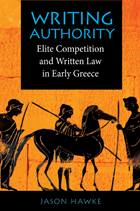 Writing Authority: Elite Competition and Written Law in Early Greece
Jason Hawke
Northern Illinois University Press, 2011
In Writing Authority, Hawke argues that the rapidly changing political and economic landscape of early Greece prompted elites to begin committing laws to written form. The emergence of the polis and its institutions, the demographic growth of Greece, the development of market forces and the commoditization of wealth, all presented new challenges and difficulties for the Greeks of the eighth and seventh centuries B.C.E. Hawke contends that no one felt the attendant anxieties of these changes more acutely than the leading members of early Greek communities—they confronted regulating their intense competition for status and power in an environment where traditional sources of authority, such as Homeric epic, offered no ready solutions for problems arising from the transformation of Greek society. Greek elites enshrined in writing rules aimed at stabilizing their relationships with one another and, by extension, their communities.
Challenging both established and emerging orthodoxies about the appearance of written law in ancient Greece, Writing Authority questions the importance of a popular or communal role in the earliest Greek legislation. Approaches from anthropology, legal studies, and sociology are used to situate the emergence of Greek law in the broader context of Greek legal culture in the eighth through early sixth centuries B.C.E. as Hawke describes in rich detail the legal culture of Homer’s world, considers the impact of literacy on Greek attitudes about law and authority and its practical consequences for the governing of the Greek polis, and examines the effects of the tumultuous changes in Archaic Greece on the leading members of Greek communities. The result is a compelling monograph that provides an exhaustive and nuanced history of earliest Greek law and the motivations of the elites that brought it into being. It will be of interest to scholars of Greek history, classicists, and early legal historians.
 Writing Beat and Other Occasions of Literary Mayhem
John Tytell
Vanderbilt University Press, 2014 The story and history of the Beats couldn't be found in the traditional libraries or archives of academic research. For preeminent historian of Beat culture John Tytell, it had to be found in the bars, towns, roads, and hangouts of these writers and figures. And as Writing Beat demonstrates, the same techniques apply to new and future writers.
Approaching the history of post-war twentieth century American literature, and in particular the Beat literary movement of Kerouac, Ginsberg, Burroughs, and others, Tytell finds himself uniquely positioned as an eyewitness to many of these stories. In this book, he shares his insight with the reader. As he interviewed, drank, traveled, and survived countless moments with some of these literary legends, Tytell discovered much about the craft of nonfiction, biography, and the nature of history. Writing Beat demonstrates, through Tytell's growth as a professor and historian of the Beats, lessons learned and hazards encountered for those aspiring to become writers themselves.
As we approach the sixtieth anniversary of Allen Ginsberg's Howl, Writing Beat reminds us writers do not spring to life fully formed, and the struggle to get to literature can be a blast.
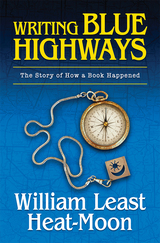 Writing BLUE HIGHWAYS: The Story of How a Book Happened
Willliam Least Heat-Moon
University of Missouri Press, 2023 Winner, Distinguished Literary Achievement, Missouri Humanities Council, 2015
The story behind the writing of the best-selling Blue Highways is as fascinating as the epic trip itself. More than thirty years after his 14,000-mile, 38-state journey, William Least Heat-Moon reflects on the four years he spent capturing the lessons of the road trip on paper—the stops and starts in his composition process, the numerous drafts and painstaking revisions, the depressing string of rejections by publishers, the strains on his personal relationships, and many other aspects of the toil that went into writing his first book. Along the way, he traces the hard lessons learned and offers guidance to aspiring and experienced writers alike. Far from being a technical manual, Writing Blue Highways: The Story of How a Book Happenedis an adventure story of its own, a journey of “exploration into the myriad routes of heart and mind that led to the making of a book from the first sorry and now vanished paragraph to the last words that came not from a graphite pencil but from a letterpress in Tennessee.” Readers will not find a collection of abstract formulations and rules for writing; rather, this book gracefully incorporates examples from Heat-Moon’s own experience. As he explains, “This story might be termed an inadvertent autobiography written not by the traveler who took Ghost Dancing in 1978 over the byroads of America but by a man only listening to him. That blue-roadman hasn’t been seen in more than a third of a century, and over the last many weeks as I sketched in these pages, I’ve regretted his inevitable departure.” Filtered as the struggles of the “blue-roadman” are through the awareness of someone more than thirty years older with a half dozen subsequent books to his credit, the story of how his first book “happened” is all the more resonant for readers who may not themselves be writers but who are interested in the tricky balance of intuitive creation and self-discipline required for any artistic endeavor.
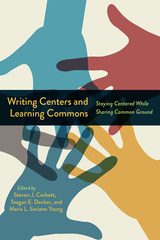 Writing Centers and Learning Commons: Staying Centered While Sharing Common Ground
Steven J. Corbett
Utah State University Press, 2022 Writing Centers and Learning Commons presents program administrators, directors, staff, and tutors with theoretical rationales, experiential journeys, and go-to practical designs and strategies for the many questions involved when writing centers find themselves operating in shared environments.
The chapters comprehensively examine the ways writing centers make the most of sharing common ground. Directors, coordinators, administrators, and stakeholders draw on past and present attention to writing center studies to help shape the future of the learning commons and narrate their substantial collective experience with collaborative efforts to stay centered while empowering colleagues and student writers at their institutions. The contributors explore what is gained and lost by affiliating writing centers with learning commons, how to create sound pedagogical foundations that include writing center philosophies, how writing center practices evolved or have been altered by learning center affiliations, and more.
Writing Centers and Learning Commons is for all stakeholders of writing in and across campuses collaborating on (by choice or edict), or wishing to explore the possibilities of, a learning commons enterprise.
Contributors: Alice Batt, Cassandra Book, Charles A. Braman, Elizabeth Busekrus Blackmon, Virginia Crank, Celeste Del Russo, Patricia Egbert, Christopher Giroux, Alexis Hart, Suzanne Julian, Kristen Miller, Robby Nadler, Michele Ostrow, Helen Raica-Klotz, Kathleen Richards, Robyn Rohde, Nathalie Singh-Corcoran, David Stock
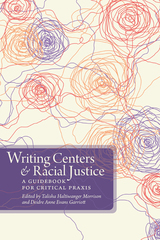 Writing Centers and Racial Justice: A Guidebook for Critical Praxis
Talisha Haltiwanger Morrison
Utah State University Press, 2023 Writing Centers and Racial Justice responds to renewed and invigorated interest in racial justice and antiracism across writing centers and in writing studies, providing practical ways to enact racial justice in and through the writing center. The collection builds on decades of largely theoretical work on race and racism to move everyday writing center administrators toward action.
In five thematically organized sections—Countering Racism and Colonialism in Higher Education; Recruitment, Hiring, and Retention; Tutor Education and Professional Development; Engaging with Campus and Community; and Holding Our Professional Organizations Accountable—scholars from a variety of institutions, both large and small, public and private, present critical reflection and concrete guidance on anti-racist writing center administrative policies and practices. Several chapters include sample materials, such as course syllabi, consultant education activities, and recruitment materials, to help current and aspiring writing center administrators implement changes in their own contexts.
Writing Centers and Racial Justice is the first book to offer clear and actionable advice on how writing centers and their staff can take up racial or social justice work that will result in real sustainable change. Writing center directors, professionals, and tutors, as well as administrators and decision makers at the institutional level, will benefit from this thoughtful and effective text.
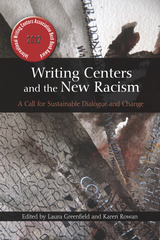 Writing Centers and the New Racism: A Call for Sustainable Dialogue and Change
Laura Greenfield and Karen Rowan
Utah State University Press, 2011 Laura Greenfield and Karen Rowan have created a rich resource for writing center tutors, administrators, and scholars. Motivated by a scholarly interest in race, literacy, and pedagogy, and by an ethical commitment to antiracism work, contributors address a series of related questions: How does institutionalized racism in American education shape the culture of literacy and language education in the writing center? How does racism operate in the discourses of writing center scholarship and lore, and in what ways are writing centers unwittingly complicit in racist practices? How can they meaningfully operationalize antiracist work? How do they persevere through the difficulty and messiness of negotiating race and racism in their daily practice? The conscientious, nuanced attention to race in Writing Centers and the New Racism is meant to model what it means to be bold in engagement with these hard questions and to spur the kind of sustained, productive, multivocal, and challenging dialogue that, with a few important exceptions, has been absent from the field.
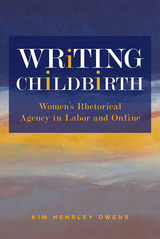 Writing Childbirth: Women’s Rhetorical Agency in Labor and Online
Kim Hensley Owens
Southern Illinois University Press, 2015 Women seeking to express concerns about childbirth or to challenge institutionalized medicine by writing online birth plans or birth stories exercise rhetorical agency in undeniably feminist ways. In Writing Childbirth: Women’s Rhetorical Agency in Labor and Online, author Kim Hensley Owens explores how women create and use everyday rhetorics in planning for, experiencing, and writing about childbirth. Drawing on medical texts, popular advice books, and online birth plans and birth stories, as well as the results of a childbirth writing survey, Owens considers how women’s agency in childbirth is sanctioned, and how it is not. She examines how women’s rhetorical choices in writing interact with institutionalized medicine and societal norms. Writing Childbirth reveals the contradictory messages women receive about childbirth, their conflicting expectations about it, and how writing and technology contribute to and reconcile these messages and expectations. Demonstrating the value of extending rhetorical investigations of health and medicine beyond patient-physician interactions and the discourse of physicians, Writing Childbirth offers fresh insight into feminist rhetorical agency and technology and expands our understanding of the rhetorics of health and medicine.
 Writing Cities: Exploring Early Modern Urban Discourse
James S. Amelang
Central European University Press, 2020 Only one out of ten early modern Europeans lived in cities. Yet cities were crucial nodes, joining together producers and consumers, rulers and ruled, and believers in diverse faiths and futures. They also generated an enormous amount of writing, much of which focused on civic life itself. But despite its obvious importance, historians have paid surprisingly little attention to urban discourse; its forms, themes, emphases and silences all invite further study. This book explores three dimensions of early modern citizens’ writing about their cities: the diverse social backgrounds of the men and women who contributed to urban discourse; their notions of what made for a beautiful city; and their use of dialogue as a literary vehicle particularly apt for expressing city life and culture. Amelang concludes that early modern urban discourse increasingly moves from oral discussion to take the form of writing. And while the dominant tone of those who wrote about cities continued to be one of celebration and glorification, over time a more detached and less judgmental mode developed. More and more they came to see their fundamental task as presenting a description that was objective.
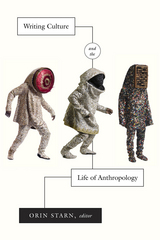 Writing Culture and the Life of Anthropology
Orin Starn
Duke University Press, 2015 Using the influential and field-changing Writing Culture as a point of departure, the thirteen essays in Writing Culture and the Life of Anthropology address anthropology's past, present, and future. The contributors, all leading figures in anthropology today, reflect back on the "writing culture" movement of the 1980s, consider its influences on ethnographic research and writing, and debate what counts as ethnography in a post-Writing Culture era. They address questions of ethnographic method, new forms the presentation of research might take, and the anthropologist's role. Exploring themes such as late industrialism, precarity, violence, science and technology, globalization, and the non-human world, this book is essential reading for those looking to understand the current state of anthropology and its possibilities going forward.
Contributors. Anne Allison, James Clifford, Michael M.J. Fischer, Kim Fortun, Richard Handler, John L. Jackson, Jr., George E. Marcus, Charles Piot, Hugh Raffles, Danilyn Rutherford, Orin Starn, Kathleen Stewart, Michael Taussig, Kamala Visweswaran
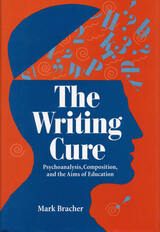 The Writing Cure: Psychoanalysis, Composition, and the Aims of Education
Mark Bracher
Southern Illinois University Press, 1999 Psychoanalysis and writing instruction have much to offer each other, asserts Mark Bracher. In this book, Bracher examines the intersection between these two fields and proposes pedagogical uses of psychoanalytic technique for writing instruction. Psychoanalysis reveals that the writing process is profoundly affected by factors that current theories have largely neglected—forces such as enjoyment, desire, fantasy, and anxiety, which, moreover, are often unconscious. Articulating an approach based on the work of Jacques Lacan, Bracher shows how a psychoanalytic perspective can offer useful insights into the nature of the writing process, the sources of writing problems, and the dynamics of writing instruction. He further demonstrates that writing instruction constitutes the most favorable venue outside of individual psychoanalytic treatment for pursuing psychoanalytic research and practice. Like psychoanalytic treatment proper, writing instruction can function as a way of reducing psychological conflict and as a means of pursuing psychoanalytic research into the workings of the mind. Empirical studies and personal testimonies have demonstrated the psychological (and even the physical) benefits of writing about personal conflict in an academic setting; such benefits promise to be enhanced and consolidated through the application of psychoanalytic principles to the teaching of writing.
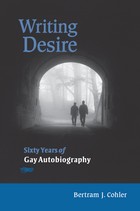 Writing Desire: Sixty Years of Gay Autobiography
Bertram J. Cohler
University of Wisconsin Press, 2007 Exploring nearly sixty years of memoir and autobiography, Writing Desire examines the changing identity of gay men writing within a historical context. Distinguished scholar and psychoanalyst Bertram J. Cohler has carefully selected a diverse group of ten men, including historians, activists, journalists, poets, performance artists, and bloggers, whose life writing evokes the evolution of gay life in twentieth-century America.
By contrasting the personal experience of these disparate writers, Cohler illustrates the social transformations that these men helped shape. Among Cohler's diverse subjects is Alan Helms, whose journey from Indiana to New York's gay society represents the passage of men who came of age in the 1950s and 1960s, when homosexuality was considered a hidden "disease." The liberating effects of Stonewall's aftermath are chronicled in the life of Arnie Kantrowitz, the prototypical activist for gay rights in the 1970s and the founder the Gay and Lesbian Alliance against Defamation. The artistic works of Tim Miller and Mark Doty evoke loss and shock during of the early stages of the AIDS epidemic in the 1980s. Cohler rounds out this collective group portrait by looking at the newest generation of writers in the Internet age via the blog of BrYaN, who did the previously unthinkable: he "outed" himself to millions of people.
A compelling mix of social history and personal biography, Writing Desire distills the experience of three generations of gay America.
Finalist, LGBT Studies, Lambda Literary Foundation
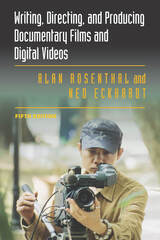 Writing, Directing, and Producing Documentary Films and Digital Videos
Alan Rosenthal and Ned Eckhardt
Southern Illinois University Press, 2016 In a new edition of this popular guidebook, filmmakers Alan Rosenthal and Ned Eckhardt show readers how to utilize the latest innovations in equipment, technologies, and production techniques for success in the digital, web-based world of documentary film.
All twenty-four chapters of the volume have been revised to reflect the latest advances in documentary filmmaking. Rosenthal and Eckhardt discuss the myriad ways in which technological changes have impacted the creation process of documentary films, including how these evolving technologies both complicate and enrich filmmaking today. The book provides crucial insights for the filmmaker from the film’s conception to distribution of the finished film. Topics include creating dynamic proposals, writing narration, and navigating the murky world of contracts. Also included are many practical tips for first-time filmmakers. To provide context and to illustrate techniques, Rosenthal and Eckhardt reference more than one hundred documentaries in detail.
A new appendix, “Using the Web and Social Media to Prepare for Your Career,” guides filmmakers through the process of leveraging social media and crowdsourcing for success in filmmaking, fund-raising, and promotion. A day-to-day field manual packed with invaluable lessons, this volume is essential reading for both novice and experienced documentary filmmakers.
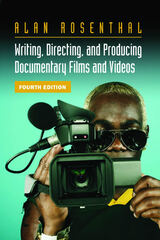 Writing, Directing, and Producing Documentary Films and Videos, Fourth Edition
Alan Rosenthal
Southern Illinois University Press, 2007
As Alan Rosenthal states in the preface to this new edition of his acclaimed resource for filmmakers, Writing, Directing, and Producing Documentary Films and Videos is “a book about storytelling—how to tell great and moving stories about fascinating people, whether they be villains or heroes.”
In response to technological advances and the growth of the documentary hybrid in the past five years, Rosenthal reconsiders how one approaches documentary filmmaking in the twenty-first century. Simply and clearly, he explains how to tackle day-to-day problems, from initial concept through distribution. He demonstrates his ideas throughout the book with examples from key filmmakers’ work.
New aspects of this fourth edition include a vital new chapter titled "Making Your First Film," and a considerable enlargement of the section for producers, "Staying Alive," which includes an extensive discussion of financing, marketing, festivals, and distribution. This new edition offers a revised chapter on nonlinear editing, more examples of precise and exacting proposals, and the addition of a complex budget example with explanation of the budgeting process. Discussion of documentary hybrids, with suggestions for mastering changes and challenges, has also been expanded, while the “Family Films” chapter includes updated information that addresses rapid expansion in this genre.
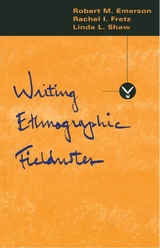 Writing Ethnographic Fieldnotes
Robert M. Emerson, Rachel I. Fretz, and Linda L. Shaw
University of Chicago Press, 1995 In this companion volume John van Maanen's Tales of the Field, three scholars reveal how the ethnographer turns direct experience and observation into written fieldnotes upon which an ethnography is based.
Drawing on years of teaching and field research experience, the authors develop a series of guidelines, suggestions, and practical advice about how to write useful fieldnotes in a variety of settings, both cultural and institutional. Using actual unfinished, "working" notes as examples, they illustrate options for composing, reviewing, and working fieldnotes into finished texts. They discuss different organizational and descriptive strategies, including evocation of sensory detail, synthesis of complete scenes, the value of partial versus omniscient perspectives, and of first person versus third person accounts. Of particular interest is the author's discussion of notetaking as a mindset. They show how transforming direct observations into vivid descriptions results not simply from good memory but more crucially from learning to envision scenes as written. A good ethnographer, they demonstrate, must learn to remember dialogue and movement like an actor, to see colors and shapes like a painter, and to sense moods and rhythms like a poet.
The authors also emphasize the ethnographer's core interest in presenting the perceptions and meanings which the people studied attach to their own actions. They demonstrate the subtle ways that writers can make the voices of people heard in the texts they produce. Finally, they analyze the "processing" of fieldnotes—the practice of coding notes to identify themes and methods for selecting and weaving together fieldnote excerpts to write a polished ethnography.
This book, however, is more than a "how-to" manual. The authors examine writing fieldnotes as an interactive and interpretive process in which the researcher's own commitments and relationships with those in the field inevitably shape the character and content of those fieldnotes. They explore the conscious and unconscious writing choices that produce fieldnote accounts. And they show how the character and content of these fieldnotes inevitably influence the arguments and analyses the ethnographer can make in the final ethnographic tale.
This book shows that note-taking is a craft that can be taught. Along with Tales of the Field and George Marcus and Michael Fisher's Anthropology as Cultural Criticism, Writing Ethnographic Fieldnotes is an essential tool for students and social scientists alike.
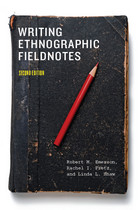 Writing Ethnographic Fieldnotes, Second Edition
Robert M. Emerson, Rachel I. Fretz, and Linda L. Shaw
University of Chicago Press, 2011 In Writing Ethnographic Fieldnotes, Robert M. Emerson, Rachel I. Fretz, and Linda L. Shaw present a series of guidelines, suggestions, and practical advice for creating useful fieldnotes in a variety of settings, demystifying a process that is often assumed to be intuitive and impossible to teach. Using actual unfinished notes as examples, the authors illustrate options for composing, reviewing, and working fieldnotes into finished texts. They discuss different organizational and descriptive strategies and show how transforming direct observations into vivid descriptions results not simply from good memory but from learning to envision scenes as written. A good ethnographer, they demonstrate, must learn to remember dialogue and movement like an actor, to see colors and shapes like a painter, and to sense moods and rhythms like a poet. This new edition reflects the extensive feedback the authors have received from students and instructors since the first edition was published in 1995. As a result, they have updated the race, class, and gender section, created new sections on coding programs and revising first drafts, and provided new examples of working notes. An essential tool for budding social scientists, the second edition of Writing Ethnographic Fieldnotes will be invaluable for a new generation of researchers entering the field.
Writing Europe: What is European about the Literatures of Europe? Essays from 33 European Countries
Ursula Keller
Central European University Press, 2004 What do we mean by Europe? Thirty-three renowned authors from 33 European countries attempt an answer-in serious, ironic, skeptical, or optimistic tones. Their essays, written for the symposium held at the Literaturhaus Hamburg in 2003, reflect the astonishing diversity of European cultures. Not only are the style and experience of the individual authors remarkable for their distinctiveness, but their perspectives and views also appear to have little in common-at first glance. The editors have created a unique literary project, a milestone in the vitally necessary cultural discourse about Europe.
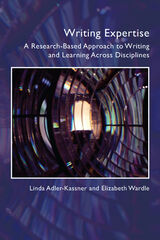 Writing Expertise: A Research-Based Approach to Writing and Learning Across Disciplines
Linda Adler-Kassner
University Press of Colorado, 2023 In Writing Expertise, Linda Adler-Kassner and Elizabeth Wardle address the question, “How can instructors across disciplines best help students write well?” Drawing on research about how disciplines use writing to engage in shared ways of thinking, practicing, and demonstrating knowledge, the authors offer an approach that helps faculty across the disciplines invite students to bring new ideas and identities to their work. Throughout the book, Adler-Kassner and Wardle help instructors explore what it means to write well in their courses, fields, or disciplines and offer strategies and activities that can help them improve their assignments by infusing research-based writing activities into their courses. Writing Expertise provides an innovative, equity- and research-based approach to writing in the disciplines that will enrich instructor and student thinking. Thoughtful discussions and well-designed activities provide the support needed to help instructors put disciplinary thinking into written form, develop systematic aways of learning about the students who write in their courses, and ultimately develop more effective, inclusive courses.
 Writing Faith: Text, Sign, and History in the Miracles of Sainte Foy
Kathleen Ashley and Pamela Sheingorn
University of Chicago Press, 1999 A trickster saint whose miracles reportedly included the healing of an inguinal hernia via a hammer and anvil, Sainte Foy inspired one of the most important collections of miracle stories of the central middle ages. Kathleen Ashley and Pamela Sheingorn explore the act of "writing faith" as performed both by the authors of these stories and by the scholars who have used them as sources for the study of medieval religion and society.
As Ashley and Sheingorn show, differing agendas shaped the miracle stories over time. The first author, Bernard of Angers, used his narratives to critique popular religion and to establish his own literary reputation, while the monks who continued the collection tried to enhance their monastery's prestige. Because these stories were rhetorical constructions, Ashley and Sheingorn argue, we cannot use them directly as sources of historical data. Instead, they demonstrate how analyzing representations common to groups of miracle stories—such as negative portrayals of Muslims on the eve of the Crusades—can reveal the traces of history.
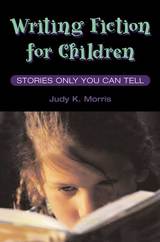 Writing Fiction for Children: STORIES ONLY YOU CAN TELL
Judy K. Morris
University of Illinois Press, 2001 Whether you're nurturing your first idea for a children's book or have a published book or two under your belt, Judy K. Morris will delight you, guide and inspire you, challenge and encourage you, and improve your chances of reaching the ultimate goal of every children's book author: your reader inside your story and your story inside your reader.
A published author of both fiction and nonfiction for children, Morris draws on extensive experience teaching children how to write and teaching adults how to write for children. Here she combines concrete methods and step-by-step techniques with succinct rules of thumb: work at making your novel whole from the start; never underestimate the power of the plain truth; personality quirks are no substitute for character; doing a good job of writing usually means doing a good job of rewriting.
Using judiciously chosen examples from successful children's literature, Writing Fiction for Children covers the building blocks of plot, characters, and setting and addresses common problems such as awkward plotting, oversimplifying, and taking a preachy or self-conscious tone. Pragmatic exercises stimulate writers to scour their experiences, sharpen their powers of observation, and capture the details, voice, and narrative energy that can bring stories vividly to life and keep readers submerged in make-believe. Loaded with practical advice and helpful exercises, Writing Fiction for Children is especially useful for anyone who aspires to write for children in the "middle ages" of eight to twelve.
Children's books should be hopeful, thrilling, funny, interesting, touching, and a pleasure to read, Morris says. Above all, they must have something at stake that matters. While conceding that only the author can provide the spark of a story to tell, Morris offers invaluable guidance on the daily work of crafting, shaping, refining, revising, and publishing a children's novel.
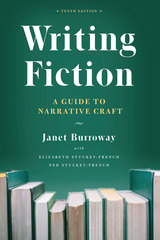 Writing Fiction, Tenth Edition: A Guide to Narrative Craft
Janet Burroway, with Elizabeth Stuckey-French, and Ned Stuckey-French
University of Chicago Press, 2019 More than 250,000 copies sold!
A creative writer’s shelf should hold at least three essential books: a dictionary, a style guide, and Writing Fiction. Janet Burroway’s best-selling classic is the most widely used creative writing text in America, and for more than three decades it has helped hundreds of thousands of students learn the craft. Now in its tenth edition, Writing Fiction is more accessible than ever for writers of all levels—inside or outside the classroom.
This new edition continues to provide advice that is practical, comprehensive, and flexible. Burroway’s tone is personal and nonprescriptive, welcoming learning writers into the community of practiced storytellers. Moving from freewriting to final revision, the book addresses “showing not telling,” characterization, dialogue, atmosphere, plot, imagery, and point of view. It includes new topics and writing prompts, and each chapter now ends with a list of recommended readings that exemplify the craft elements discussed, allowing for further study. And the examples and quotations throughout the book feature a wide and diverse range of today’s best and best-known creators of both novels and short stories.
This book is a master class in creative writing that also calls on us to renew our love of storytelling and celebrate the skill of writing well. There is a very good chance that one of your favorite authors learned the craft with Writing Fiction. And who knows what future favorite will get her start reading this edition?
 Writing for an Endangered World: Literature, Culture, and Environment in the U.S. and Beyond
Lawrence Buell
Harvard University Press, 2003 The environmental imagination does not stop short at the edge of the woods. Nor should our understanding of it, as Lawrence Buell makes powerfully clear in his new book that aims to reshape the field of literature and environmental studies. Emphasizing the influence of the physical environment on individual and collective perception, his book thus provides the theoretical underpinnings for an ecocriticism now reaching full power, and does so in remarkably clear and concrete ways.
Writing for an Endangered World offers a conception of the physical environment--whether built or natural--as simultaneously found and constructed, and treats imaginative representations of it as acts of both discovery and invention. A number of the chapters develop this idea through parallel studies of figures identified with either "natural" or urban settings: John Muir and Jane Addams; Aldo Leopold and William Faulkner; Robinson Jeffers and Theodore Dreiser; Wendell Berry and Gwendolyn Brooks. Focusing on nineteenth- and twentieth-century writers, but ranging freely across national borders, his book reimagines city and country as a single complex landscape.
 Writing for Dark Times: A Literary History of Human Rights
Hadji Bakara
University of Chicago Press A history of human rights that places writers and their ideas at its center.
At Amnesty International’s headquarters in London hangs a large copy of Seamus Heaney’s “From the Republic of Conscience,” a poem that touches on neither imprisonment nor torture but instead suggests that acts of literary creation are themselves a form of human rights work, important for bringing new things into the world rather than removing evil from it. Why does a poem about the power of creation stand at the center of an organization known for publicizing atrocity? What can it tell us about human rights?
Hadji Bakara’s Writing for Dark Times tells the story of the writer’s distinct place in the history of human rights. It argues that the relationship between the creative work of writing and the pursuit of universal rights is an important but misunderstood dimension of both literary and human rights history over the past century. Following a diverse cast of characters from the First World War through the end of the Cold War, including Bertolt Brecht, H.G. Wells, Archibald MacLeish, Albert Camus, Czeslaw Milosz, Ngũgĩ wa Thiong’O, Muriel Rukeyser, Nadine Gordimer, and J.M. Coetzee, Bakara shows how many writers took up questions about human rights, from refugees in the early century to a poet-statesman who helped draft the United Nations declarations of human rights to imprisoned writers and writer-activists who became integral parts of the global human rights movement. But the book also shows that these writers’ efforts to theorize and support human rights were bound up with changing ideas about the place of their own work in the world––the work of writing.
For those who study human rights, Writing for Dark Times offers both an archive and a method for better understanding the influence of writers on the historical development of the concept. For those in literary studies, the book provides a new account of how human rights shaped the politics of twentieth-century literature. Few books have made as vivid a case for literature’s relevance to our most exalted ideals and institutions.
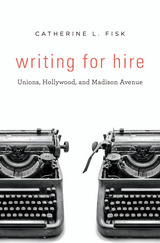 Writing for Hire: Unions, Hollywood, and Madison Avenue
Catherine L. Fisk
Harvard University Press, 2016 Required to sign away their legal rights as authors as a condition of employment, professional writers may earn a tidy living for their work, but they seldom own their writing. Writing for Hire traces the history of labor relations that defined authorship in film, TV, and advertising in the mid-twentieth century. Catherine L. Fisk examines why strikingly different norms of attribution emerged in these overlapping industries, and she shows how unionizing enabled Hollywood writers to win many authorial rights, while Madison Avenue writers achieved no equivalent recognition.
In the 1930s, the practice of employing teams of writers to create copyrighted works became widespread in film studios, radio networks, and ad agencies. Sometimes Hollywood and Madison Avenue employed the same people. Yet the two industries diverged in a crucial way in the 1930s, when screenwriters formed the Writers Guild to represent them in collective negotiations with media companies. Writers Guild members believed they shared the same status as literary authors and fought to have their names attached to their work. They gained binding legal norms relating to ownership and public recognition—norms that eventually carried over into the professional culture of TV production.
In advertising, by contrast, no formal norms of public attribution developed. Although some ad writers chafed at their anonymity, their nonunion workplace provided no institutional framework to channel their demands for change. Instead, many rationalized their invisibility as creative workers by embracing a self-conception as well-compensated professionals devoted to the interests of clients.
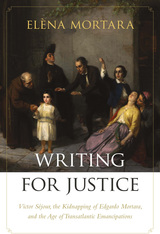 Writing for Justice: Victor Séjour, the Kidnapping of Edgardo Mortara, and the Age of Transatlantic Emancipations
Elèna Mortara
Dartmouth College Press, 2015 In Writing for Justice, Elèna Mortara presents a richly layered study of the cultural and intellectual atmosphere of mid-nineteenth-century Europe and the United States, through close readings of the life and work of Victor Séjour, an expat American Creole from New Orleans living in Paris. In addition to writing The Mulatto, an early story on slavery in Saint-Domingue, Séjour penned La Tireuse de cartes (The Fortune-Teller, 1859), a popular play based on the famed Mortara case. In this historical incident, Pope Pius IX kidnapped Edgardo Mortara, the child of a Jewish family living in the Papal States. The details of the play’s production—and its reception on both sides of the Atlantic—are intertwined with the events of the Italian Risorgimento and of pre–Civil War America. Writing for Justice is full of surprising encounters with French and American writers and historical figures, including Hugo, Hawthorne, Twain, Napoleon III, Garibaldi, and Lincoln. As Elèna Mortara passionately argues, the enormous amount of public attention received by the case reveals an era of underappreciated transatlantic intellectual exchange, in which an African American writer used notions of emancipation in religious as well as racial terms, linking the plight of blacks in America to that of Jews in Europe, and to the larger battles for freedom and nationhood advancing across the continent. This book will appeal both to general readers and to scholars, including historians, literary critics, and specialists in African American studies, Jewish, Catholic, or religious studies, multilingual American literature, francophone literature, theatrical life, nineteenth-century European politics, and cross-cultural encounters.
Writing for Love and Money: A Novel
Kathrin Perutz
University of Arkansas Press, 1991 Partly a roman à clef, partly a paradic "novel-within-a-novel," Writing for Love and Money is perhaps best described as a comic odyssey into the world of the bestseller, a tour guide for writing a blockbuster. Playfully weaving literary puns and allusions into an enthralling narrative, Perutz allows Kate, assisted by a host of "real" and fictional authors, to learn page by page the ingredients of popular fiction. While some critics may argue about the genre—is the book a novel? a memoir? an expose?—Perutz's readers will agree that Writing for Love and Money is one of the funniest nonnovels, nonmemoirs, nonexposes they've read.
 Writing for Print: Publishing and the Making of Textual Authority in Late Imperial China
Suyoung Son
Harvard University Press, 2018 This book examines the widespread practice of self-publishing by writers in late imperial China, focusing on the relationships between manuscript tradition and print convention, peer patronage and popular fame, and gift exchange and commercial transactions in textual production and circulation.
Combining approaches from various disciplines, such as history of the book, literary criticism, and bibliographical and textual studies, Suyoung Son reconstructs the publishing practices of two seventeenth-century literati-cum-publishers, Zhang Chao in Yangzhou and Wang Zhuo in Hangzhou, and explores the ramifications of these practices on eighteenth-century censorship campaigns in Qing China and Chosŏn Korea. By giving due weight to the writers as active agents in increasing the influence of print, this book underscores the contingent nature of print’s effect and its role in establishing the textual authority that the literati community, commercial book market, and imperial authorities competed to claim in late imperial China.
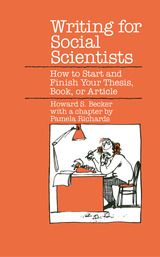 Writing for Social Scientists: How to Start and Finish Your Thesis, Book, or Article
Howard S. Becker
University of Chicago Press, 1986 Social scientists, whether earnest graduate students or tenured faculty members, clearly know the rules that govern good writing. But for some reason they choose to ignore those guidelines and churn out turgid, pompous, and obscure prose. Distinguished sociologist Howard S. Becker, true to his calling, looks for an explanation for this bizarre behavior not in the psyches of his colleagues but in the structure of his profession. In this highly personal and inspirational volume he considers academic writing as a social activity.
Both the means and the reasons for writing a thesis or article or book are socially structured by the organization of graduate study, the requirements for publication, and the conditions for promotion, and the pressures arising from these situations create the writing style so often lampooned and lamented. Drawing on his thirty-five years' experience as a researcher, writer, and teacher, Becker exposes the foibles of the academic profession to the light of sociological analysis and gentle humor. He also offers eminently useful suggestions for ways to make social scientists better and more productive writers. Among the topics discussed are how to overcome the paralyzing fears of chaos and ridicule that lead to writer's block; how to rewrite and revise, again and again; how to adopt a persona compatible with lucid prose; how to deal with that academic bugaboo, "the literature." There is also a chapter by Pamela Richards on the personal and professional risks involved in scholarly writing.
In recounting his own trials and errors Becker offers his readers not a model to be slavishly imitated but an example to inspire. Throughout, his focus is on the elusive work habits that contribute to good writing, not the more easily learned rules of grammar and punctuation. Although his examples are drawn from sociological literature, his conclusions apply to all fields of social science, and indeed to all areas of scholarly endeavor. The message is clear: you don't have to write like a social scientist to be one.
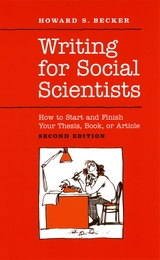 Writing for Social Scientists: How to Start and Finish Your Thesis, Book, or Article: Second Edition
Howard S. Becker
University of Chicago Press, 2007
Students and researchers all write under pressure, and those pressures—most lamentably, the desire to impress your audience rather than to communicate with them—often lead to pretentious prose, academic posturing, and, not infrequently, writer’s block.
Sociologist Howard S. Becker has written the classic book on how to conquer these pressures and simply write. First published nearly twenty years ago, Writing for Social Scientists has become a lifesaver for writers in all fields, from beginning students to published authors. Becker’s message is clear: in order to learn how to write, take a deep breath and then begin writing. Revise. Repeat.
It is not always an easy process, as Becker wryly relates. Decades of teaching, researching, and writing have given him plenty of material, and Becker neatly exposes the foibles of academia and its “publish or perish” atmosphere. Wordiness, the passive voice, inserting a “the way in which” when a simple “how” will do—all these mechanisms are a part of the social structure of academic writing. By shrugging off such impediments—or at the very least, putting them aside for a few hours—we can reform our work habits and start writing lucidly without worrying about grades, peer approval, or the “literature.”
In this new edition, Becker takes account of major changes in the computer tools available to writers today, and also substantially expands his analysis of how academic institutions create problems for them. As competition in academia grows increasingly heated, Writing for Social Scientists will provide solace to a new generation of frazzled, would-be writers.
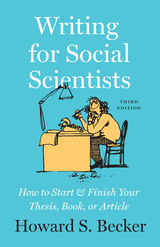 Writing for Social Scientists, Third Edition: How to Start and Finish Your Thesis, Book, or Article
Howard S. Becker
University of Chicago Press, 2020 For more than thirty years, Writing for Social Scientists has been a lifeboat for writers in all fields, from beginning students to published authors. It starts with a powerful reassurance: Academic writing is stressful, and even accomplished scholars like sociologist Howard S. Becker struggle with it. And it provides a clear solution: In order to learn how to write, take a deep breath and then begin writing. Revise. Repeat.
This is not a book about sociological writing. Instead, Becker applies his sociologist’s eye to some of the common problems all academic writers face, including trying to get it right the first time, failing, and therefore not writing at all; getting caught up in the trappings of “proper” academic writing; writing to impress rather than communicate with readers; and struggling with the when and how of citations. He then offers concrete advice, based on his own experiences and those of his students and colleagues, for overcoming these obstacles and gaining confidence as a writer.
While the underlying challenges of writing have remained the same since the book first appeared, the context in which academic writers work has changed dramatically, thanks to rapid changes in technology and ever greater institutional pressures. This new edition has been updated throughout to reflect these changes, offering a new generation of scholars and students encouragement to write about society or any other scholarly topic clearly and persuasively.
As Becker writes in the new preface, “Nothing prepared me for the steady stream of mail from readers who found the book helpful. Not just helpful. Several told me the book had saved their lives; less a testimony to the book as therapy than a reflection of the seriousness of the trouble writing failure could get people into.” As academics are being called on to write more often, in more formats, the experienced, rational advice in Writing for Social Scientists will be an important resource for any writer’s shelf.
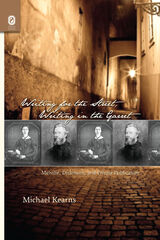 Writing for the Street, Writing in the Garret: Melville, Dickinson, and Private Publication
Michael Kearns
Ohio State University Press, 2010 Although Herman Melville and Emily Dickinson differed dramatically in terms of their lives and writing careers, they shared not only a distaste for writing “for the street” (mass readership) but a preference for the intimate writer–reader relationship created by private publication, especially in the form of manuscripts. In Writing for the Street, Writing in the Garret: Melville, Dickinson, and Private Publication, Michael Kearns shows that this distaste and preference were influenced by American copyright law, by a growing tendency in America to treat not only publications but their authors as commodities, and by the romantic stereotype of the artist (usually suffering in a garret) living only for her or his own work. For both Melville and Dickinson, private publication could generate the prestige accorded to authors while preserving ownership of both works and self. That they desired such prestige Kearns demonstrates by a close reading of biographical details, publication histories, and specific comments on authorship and fame. This information also reveals that Melville and Dickinson regarded their manuscripts as physical extensions of themselves while creating personae to protect the privacy of those selves. Much modern discourse about both writers has accepted as biographical fact certain elements of those personae, especially that they were misunderstood artists metaphorically confined to garrets.
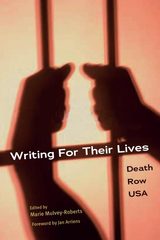 Writing for Their Lives: Death Row USA
Edited by Marie Mulvey-Roberts. Foreword by Jan Arriens
University of Illinois Press, 2007 Going well beyond graphic descriptions of death row's madness and suicide-inducing realities, Writing for Their Lives offers powerful, compassionate, and harrowing accounts of prisoners rediscovering the value of life from within the brutality and boredom of the row. Editor Marie Mulvey-Roberts brings together the writings of prisoners (many of whom are also prize-winning authors) and the words of those who work in the field of capital punishment, whose roles have included defense attorney, prison psychiatrist, chaplain and warden, spiritual advisor, abolitionist and executioner, as well as a Nobel Prize nominee and a murder victim family member. The material is presented through articles, journal extracts, letters, short stories, and poems. Exposing little-known facts about the five modes of execution practiced in the United States today, Writing for Their Lives documents the progress of life on death row from a capital trial to execution and beyond, through the testimony of the prisoners themselves as well as those who watch, listen, and write to them. What emerges are stories of the survival of the human spirit under even the most unimaginable circumstances, and the ways in which some prisoners find penitence and peace in the most unlikely surroundings. In spite of the uniformity of their prison life and its nearly inevitable conclusion, prisoners able to read and write letters are shown to retain and develop their individuality and humanity as their letters become poems and stories. Writing for Their Lives serves ultimately as an affirmation of the value of life and provides bountiful evidence that when a state executes a prisoner, it takes a life that still had something to give. This edition features an introduction by the editor as well as a foreword by Jan Arriens. Dr. Mulvey-Roberts will be donating her profits from the sale of this volume to the legal charity Amicus, which assists in capital defense in the United States."
 Writing French Colonial Histories, Volume 27
Alice L. Conklin and Julia Clancy-Smith, eds.
Duke University Press Spanning four centuries—from seventeenth-century New France to current debates over the direction of France's Musée National des Arts et Traditions Populaires—this special issue of French Historical Studies focuses on colonialism in French history and explores the questions, problems, and approaches now under consideration by French colonial historians. Until recently, historians of France have fixed their attention on the nation-state, while scholars in colonial studies whose training focused on the peoples and cultures colonized by France were thought to have little to say about the metropole, or even about European colonials residing in the empire. Guest editors Alice L. Conklin and Julia Clancy-Smith, together with the six contributors to this innovative collection, demonstrate unsuspected convergences between the parallel narratives of these hitherto autonomous scholarly terrains and, in so doing, respond in powerfully suggestive ways to the rising scholarly interest in alternative, global perspectives on the past. Contributors. Saliha Belmessous, Julia Clancy-Smith, Alice L. Conklin, Eric Jennings, Erica J. Peters, Clifford Rosenberg, Daniel J. Sherman, Owen White
 Writing from the Edge of the World: The Memoirs of Darien, 1514-1527
Gonzalo Fernandez de Oviedo
University of Alabama Press, 2006 A stirring account of Spain’s incursion into the New World Gonzalo Fernández de Oviedo is the 16th-century author of Historia general y natural de las Indias, a general and natural history of the peoples and places he encountered in his travels to Spanish America. Oviedo was educated at the court of King Ferdinand and Queen Isabella and held several early appointments to the royal household, first as page to their son, John. In 1513, he accepted the appointment as warden of the gold mines of Castilla de Oro on the Isthmus of Panama in Darién, the first viable Spanish settlement on the American mainland. His first year at the very edge of the known world converted Oviedo into a lifelong resident of America and, more importantly, marked the beginning of his campaign to appropriate the topic of the Indies and become its interpreter to Europe. As G. F. Dille points out in his introduction, this work earned Oviedo the title of many firsts—first historian, first enthographer, first naturalist, first anthropologist, and first sociologist of the New World. Dille adds to that list first autobiographer and first novelist of the Americas. This annotated translation contains the section of Oviedo’s work that recounts his experience in the New World during his service in Panama. Dille includes a brief introduction to Oviedo and provides general information on the political background of Spain and on the Spanish colonial system, the printing history of the text, a description of the reception of Oviedo’s work, and notes on the translation.
Writing From The Heart: Young People Share Their Wisdom
Peggy Veljkovic
Templeton Press, 2000 Writing from the Heart offers us a unique window into what young people have learned about life. This collection of essays captures the values that matter most to teens—values such as love, perseverance, family, and helping others—in their own words. As the young writers reflect on their own experience, readers of all ages will be inspired by their wisdom and hope. From Chattanooga to China, these essays are all extraordinary. They not only celebrate the accomplishments of the young writers, but also offer an opportunity to peer into the hearts and minds of young people around the world. Readers may be amazed at some of the hardships that these teens have faced, but will have a deep sense of optimism for our future. In addition, they inspire us to make the most of our lives as well.
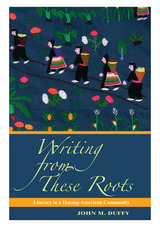 Writing from These Roots: Literacy in a Hmong-American Community
John M. Duffy
University of Hawaii Press, 2007 Writing from These Roots documents the historical development of literacy in a Midwestern American community of Laotian Hmong, a people who came to the United States as refugees from the Vietnam War and whose language had no widely accepted written form until one created by missionary-linguists was adopted in the late twentieth century by Hmong in Laos and, later, the U.S. and other Western nations. As such, the Hmong have often been described as "preliterates," "nonliterates," or members of an "oral culture." Although such terms are problematic, it is nevertheless true that the majority of Hmong did not read or write in any language when they arrived in the U.S. For this reason, the Hmong provide a unique opportunity to study the forces that influence the development of reading and writing abilities in cultures in which writing is not widespread and to do so within the context of the political, economic, religious, military, and migratory upheavals classified broadly as "globalization."
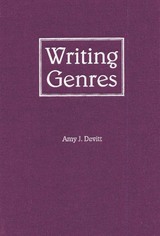 Writing Genres
Amy J. Devitt
Southern Illinois University Press, 2008 In Writing Genres, Amy J. Devitt examines genre from rhetorical, social, linguistic, professional, and historical perspectives and explores genre's educational uses, making this volume the most comprehensive view of genre theory today. Writing Genres does not limit itself to literary genres or to ideas of genres as formal conventions but additionally provides a theoretical definition of genre as rhetorical, dynamic, and flexible, which allows scholars to examine the role of genres in academic, professional, and social communities. Writing Genres demonstrates how genres function within their communities rhetorically and socially, how they develop out of their contexts historically, how genres relate to other types of norms and standards in language, and how genres nonetheless enable creativity. Devitt also advocates a critical genre pedagogy based on these ideas and provides a rationale for first-year writing classes grounded in teaching antecedent genres.
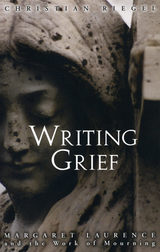 Writing Grief: Margaret Laurence and the Work of Mourning
Christian Riegel
University of Manitoba Press, 2003 Margaret Laurence's much admired Manawaka fiction - The Stone Angel, A Jest of God, The Fire-Dwellers, A Bird in the House, and The Diviners – has achieved remarkable recognition for its compassionate portrayal of the attempt to find meaning and peace in ordinary life. In Writing Grief, Christian Riegel argues that the protagonists in these books achieve resolution through acts of mourning, placing this fiction within the larger tradition of writing that explores the nuances and strategies of mourning.
Riegel's analysis alludes to sociological and literary antecedants of the study of mourning, including the tradition of elegy, from Derrida and Lacan to Freud, van Gennep, and Milton. The "work" of mourning is necessary to move from a state of emotional paralysis to one of acceptance and active engagement. Laurence's characters "perform the work of mourning ... returning over and over again to the key issues relating to loss," and, as Riegel's close examination of the texts suggests, are changed thereafter fundamentally and significantly.
As an important study of one aspect of Laurence's oeuvre, Writing Grief not only illustrates how Laurence's own preoccupations with mourning are figured, but also how different ways of working through grief result in renewed potential for consolation and connection, and "a renewed definition of self."
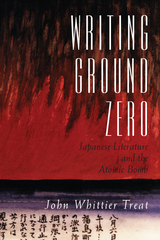 Writing Ground Zero: Japanese Literature and the Atomic Bomb
John Whittier Treat
University of Chicago Press, 1994 From Einstein and Truman to Sartre and Derrida, many have declared the atomic bombing of Hiroshima and Nagasaki to be decisive events in human history. None, however, have more acutely understood or perceptively critiqued the consequences of nuclear war than Japanese writers. In this first complete study of the nuclear theme in Japanese intellectual and artistic life, John Whittier Treat shows how much we have to learn from Japanese writers and artists about the substance and meaning of the nuclear age.
Treat recounts the controversial history of Japanese public discourse around Hiroshima and Nagasaki—a discourse alternatively celebrated and censored—from August 6, 1945, to the present day. He includes works from the earliest survivor writers, including Hara Tamiki and Ota Yoko, to such important Japanese intellectuals today as Oe Kenzaburo and Oda Makoto. Treat argues that the insights of Japanese writers into the lessons of modern atrocity share much in common with those of Holocaust writers in Europe and the practitioners of recent poststructuralist nuclear criticism in America. In chapters that take up writers as diverse as Hiroshima poets, Tokyo critics, and Nagasaki women novelists, he explores the implications of these works for critical, literary, and cultural theory.
Treat summarizes the Japanese contribution to such ongoing international debates as the crisis of modern ethics, the relationship of experience to memory, and the possibility of writing history. This Japanese perspective, Treat shows, both confirms and amends many of the assertions made in the West on the shift that the death camps and nuclear weapons have jointly signaled for the modern world and for the future.
Writing Ground Zero will be read not only by students of Japan, but by all readers concerned with the fate of culture after the fact of nuclear war in our time.
Writing Groups: History, Theory, and Implications
Anne Ruggles Gere
Southern Illinois University Press, 1987 Drawing upon previously unpublished archival materials as well as historical accounts, Gere traces the history of writing groups in America, from their origins over a century ago to their recent reappearance in the works of Macrorie, Elbow, Murray, and others. From this historical perspective Gere examines the theoretical foundations of writing groups, challenging the traditional concept of writing as an individual performance. She offers instead a broader view of authorship that includes both individual and social dimensions, with implications not only for the teaching of composition but also for theories of rhetoric and literacy.
 Writing Groups in the Writing Center: Negotiating Authority and Expertise in Collaborative Learning
Sara Wilder
Utah State University Press, 2025 Writing Groups in the Writing Center presents an empirical, qualitative study that examines collaborative practices in multidisciplinary writing groups, arguing that these collaborations offer rich expansions of writing center praxis. Using three case studies—undergraduate grant proposal writers, undergraduate thesis writers, and doctoral dissertation writers—the book explores how participants negotiate authority, navigate disciplinary boundaries, perform emotional labor, and develop expertise within writing center communities of practice.
As many higher education institutions strive to create spaces and systems that increase equity, accessibility, and diversity, they recognize the need for improved mentorship across academic levels. This book analyzes the significant benefits as well as the challenges faced by writing groups in providing such support. Wilder presents a nuanced account of how facilitators scaffold group practice, how members use and build genre knowledge across disciplines, and how institutional contexts shape emotional labor requirements.
For educators and tutors, the book provides an in-depth examination of the facilitator role, describing essential logistical, emotional, and intellectual practices, and addresses common conflicts and challenges. Administrators can find valuable material for training tutor-facilitators and frameworks for conceptualizing writing group functions on campus. For researchers, the book extends scholarship on writing groups, writing transfer, and collaborative learning, bridging writing center and broader writing studies research.
In an era of concern about generative AI’s role in writing education, Writing Groups in the Writing Center extends research on group facilitation, collaborative learning, and authority negotiation in writing center communities of practice and emphasizes the human connections that make collaborative writing meaningful and valuable for student writers.
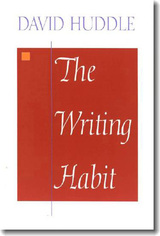 The Writing Habit
David Huddle
Brandeis University Press, 1994 Facing the blank page of the empty computer screen requires an unswerving belief in possibility, a steadfast assurance that something can and will come out of nothing. In The Writing Habit, David Huddle demystifies the writing task and shows that what may seem like alchemy is in reality a habit: the work itself, not magic, unlocks the writer’s potential. “A real writing life is not something you do merely for a day or a month or a year,” Huddle asserts. “For a writer, the one truly valuable possession is the ongoing work--the writing habit, which may take some getting used to, but which soon becomes so natural as to be almost inevitable.” Drawing from his own experience as a teacher and writer of poetry, fiction, and essays, Huddle explores the questions all writers--from novice to professional--face: Why write in the first place? How can writers fashion their lives to accommodate that all-important habit? What are some ways to deal with failure? What roles do memory, reality, and inspiration play in the creative process? How can prose best be crafted, characters brought alive, universal truths revealed from the bits and pieces of everyday life?
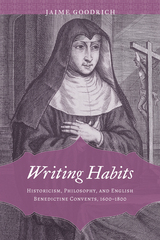 Writing Habits: Historicism, Philosophy, and English Benedictine Convents, 1600–1800
Jaime Goodrich
University of Alabama Press, 2021 The first in-depth examination of the texts produced in English Benedictine convents between 1600 and 1800
After Catholicism became illegal in England during the sixteenth century, Englishwomen established more than twenty convents on the Continent that attracted thousands of nuns and served as vital centers of Catholic piety until the French Revolution. Today more than 1,000 manuscripts and books produced by, and for, the Benedictine convents are extant in European archives. Writing Habits: Historicism, Philosophy, and English Benedictine Convents, 1600–1800 provides the first substantive analysis of these works in order to examine how members of one religious order used textual production to address a major dilemma experienced by every English convent on the Continent: How could English nuns cultivate a cloistered identity when the Protestant Reformation had swept away nearly all vestiges of English monasticism?
Drawing on an innovative blend of methodologies, Jaime Goodrich contends that the Benedictines instilled a collective sense of spirituality through writings that created multiple overlapping communities, ranging from the earthly society of the convent to the transhistorical network of the Catholic Church. Because God resides at the heart of these communities, Goodrich draws on the works of Martin Buber, a twentieth-century Jewish philosopher who theorized that human community forms a circle, with each member acting as a radius leading toward the common center of God. Buber’s thought, especially his conception of the I-You framework for personal and spiritual relationships, illuminates a fourfold set of affiliations central to Benedictine textual production: between the nuns themselves, between the individual nun and God, between the convent and God, and between the convent and the Catholic public sphere. By evoking these relationships, the major genres of convent writing—administrative texts, spiritual works, history and life writing, and controversial tracts—functioned as tools for creating community and approaching God.
Through this Buberian reading of the cloister, Writing Habits recovers the works of Benedictine nuns and establishes their broader relevance to literary history and critical theory.
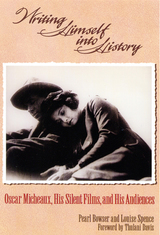 Writing Himself Into History: Oscar Micheaux, His Silent Films, and His Audiences
Bowser, Pearl
Rutgers University Press, 2000 Winner of the 2001 Kraszna-Krausz Moving Image Book Awards | Winner of the Theatre Library Association Award
Writing Himself Into History is an eagerly anticipated analysis of the career and artistry surrounding the legendary Black filmmaker Oscar Micheaux. With the exception of Spike Lee, Micheaux is the most famous—and prolific—African American film director. Between 1918 and 1948 he made more than 40 “race pictures,” movies made for and about African Americans. A man of immense creativity, he also wrote seven novels.
Pearl Bowser and Louise Spence concentrate here on the first decade of Micheaux’s career, when Micheaux produced and directed more than twenty silent features and built a reputation as a controversial and maverick entrepreneur. Placing his work firmly within his social and cultural milieu, they also examine Micheaeux’s family and life. The authors provide a close textual analysis of his surviving films (including The Symbol of the Unconquered, Within Our Gates, and Body and Soul), and highlight the rivalry between studios, dilemmas of assimilation versus separatism, gender issues, and class. In Search of Oscar Micheaux also analyzes Micheaux’s career as a novelist in relation to his work as a filmmaker.
This is a much-awaited book that is especially timely as interest in Micheaux’s work increases.
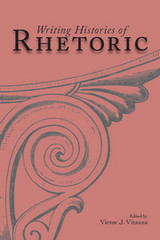 Writing Histories of Rhetoric
Edited by Victor J. Vitanza
Southern Illinois University Press, 1994 This collection of essays, edited by Victor J. Vitanza, is a historiography of rhetoric, summarizing what has recently been accomplished in the revision of traditional histories of rhetoric and discussing what might be accomplished in the future. Featuring a variety of approaches—classical, revisionary, and avant-garde—it includes articles by Janet M. Atwill, James A. Berlin, William A. Covino, Sharon Crowley, Hans Kellner, John Poulakos, Takis Poulakos, John Schilb, Jane Sutton, Kathleen Ethel Welch, Lynn Worsham, and Victor J. Vitanza. In the first essay, Sharon Crowley identifies the major players and primary issues in a chronological narrative of the debate about the writing of the history of rhetoric that has arisen between traditionalists / essentialists and revisionists/constructionists. In recent years, traditionalists have demanded a more complete and accurate history, while revisionists have sought a critical understanding of the various epistemological-ideological grounds upon which a history of rhetoric had been and could be constructed. Revisionists, in their search for multiple, contestatory histories, have begun to critique one another, breaking into two general groups: one favoring a political-social program, the other resisting and disrupting such an approach. Vitanza echoes Crowley’s review of this ongoing debate by asking a crucial question: What exactly does it mean to be a revisionist historian? By combining the disintegration of various revisionist and subversive positions into a communal "we," he asks an additional question: Who is the "we" writing histories of rhetoric? The essays that follow give a rich answer to Vitanza’s questions. They bring the writing of histories of rhetoric into the larger area of postmodern theory, raising neglected issues of race, gender, and class. Written with a variety of intentions, some of the essays are expository and highly argumentative while others are manifestos, innovative and far-reaching in tone. Still others are summaries and background studies, providing useful information to both the novice student and the experienced scholar. This book, situated at a juncture between two disciplines, composition studies and speech, will be a landmark collection for many years.
Writing History!: A Companion for Historians
Jeanette Kamp, Susan Legêne, Matthias van Rossum and Sebas Rümke
Amsterdam University Press, 2018 Historians not only have knowledge of history, but by writing about it and engaging with other historians from the past and present, they make history themselves. This companion offers young historians clear guidelines for the different phases of historical research; how do you get a good historical question? How do you engage with the literature? How do you work with sources from the past, from archives to imagery and objects, art, or landscapes? What is the influence of digitalisation of the historical craft? Broad in scope, Writing History! also addresses historians’ traditional support of policy makers and their activity in fields of public history, such as museums, the media, and the leisure sector, and offers support for developing the necessary skills for this wide range of professions.
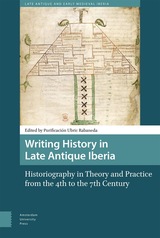 Writing History in Late Antique Iberia: Historiography in Theory and Practice from the 4th to the 7th Century
Purificación Ubric Rabaneda
Amsterdam University Press, 2023 This volume reflects on the motivations underpinning the writing of history in Late Antique Iberia, emphasising its theoretical and practical aspects and outlining the social, political and ideological implications of the constructions and narrations of the past. The volume includes general topics related to the writing of history, such as the historiographical debates on writing history, the praxis of history writing and the role of central and local powers in the construction of the past, the legitimacy of history, the exaltation of Christian history to the detriment of other religious beliefs, and the perception of time in hagiographical texts. Further points of interest in the volume are the specific studies on the historiographical culture. All these issues are analysed from an innovative perspective, which combines traditional subjects with new historiographical topics, such as the configuration of historical discourse through another type of documentation like councils, hagiography or legislation.
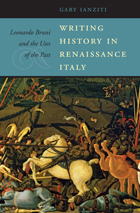 Writing History in Renaissance Italy: Leonardo Bruni and the Uses of the Past
Gary Ianziti
Harvard University Press, 2012 Leonardo Bruni (1370–1444) is widely recognized as the most important humanist historian of the early Renaissance. But why this recognition came about—and what it has meant for the field of historiography—has long been a matter of confusion and controversy. Writing History in Renaissance Italy offers a fresh approach to the subject by undertaking a systematic, work-by-work investigation that encompasses for the first time the full range of Bruni’s output in history and biography.
The study is the first to assess in detail the impact of the classical Greek historians on the development of humanist methods of historical writing. It highlights in particular the importance of Thucydides and Polybius—authors Bruni was among the first in the West to read, and whose analytical approach to politics led him in new directions. Yet the revolution in history that unfolds across the four decades covered in this study is no mere revival of classical models: Ianziti constantly monitors Bruni’s position within the shifting hierarchies of power in Florence, drawing connections between his various historical works and the political uses they were meant to serve.
The result is a clearer picture of what Bruni hoped to achieve, and a more precise analysis of the dynamics driving his new approach to the past. Bruni himself emerges as a protagonist of the first order, a figure whose location at the center of power was a decisive factor shaping his innovations in historical writing.
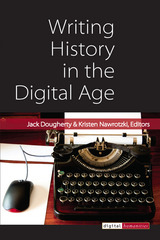 Writing History in the Digital Age
Jack Dougherty and Kristen Nawrotzki, editors
University of Michigan Press, 2013 Writing History in the Digital Age began as a “what-if” experiment by posing a question: How have Internet technologies influenced how historians think, teach, author, and publish? To illustrate their answer, the contributors agreed to share the stages of their book-in-progress as it was constructed on the public web. To facilitate this innovative volume, editors Jack Dougherty and Kristen Nawrotzki designed a born-digital, open-access, and open peer review process to capture commentary from appointed experts and general readers. A customized WordPress plug-in allowed audiences to add page- and paragraph-level comments to the manuscript, transforming it into a socially networked text. The initial six-week proposal phase generated over 250 comments, and the subsequent eight-week public review of full drafts drew 942 additional comments from readers across different parts of the globe. The finished product now presents 20 essays from a wide array of notable scholars, each examining (and then breaking apart and reexamining) if and how digital and emergent technologies have changed the historical profession.
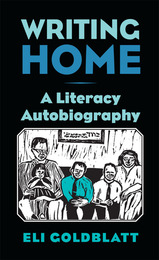 Writing Home: A Literacy Autobiography
Eli Goldblatt
Southern Illinois University Press, 2012 In this engrossing memoir, poet and literacy scholar Eli Goldblatt shares the intimate ways reading and writing influenced the first thirty years of his life—in the classroom but mostly outside it. Writing Home: A Literacy Autobiography traces Goldblatt’s search for home and his growing recognition that only through his writing life can he fully contextualize the world he inhabits. Goldblatt connects his educational journey as a poet and a teacher to his conception of literacy, and assesses his intellectual, emotional, and political development through undergraduate and postgraduate experiences alongside the social imperatives of the era. He explores his decision to leave medical school after he realized that he could not compartmentalize work and creative life or follow in his surgeon father’s footsteps. A brief first marriage rearranged his understanding of gender and sexuality, and a job teaching in an innercity school initiated him into racial politics. Literacy became a dramatic social reality when he witnessed the start of the national literacy campaign in postrevolutionary Nicaragua and spent two months finding his bearings while writing poetry in Mexico City. Goldblatt presents a thoughtful and exquisitely crafted narrative of his life to illustrate that literacy exists at the intersection of individual and social life and is practiced in relationship to others. While the concept of literacy autobiography is a common assignment in undergraduate and graduate writing courses, few books model the exercise. Writing Home helps fill that void and, with Goldblatt’s emphasis on “out of school” literacy, fosters an understanding of literacy as a social practice.
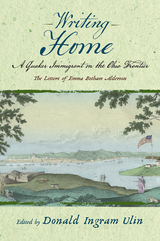 Writing Home: A Quaker Immigrant on the Ohio Frontier; the Letters of Emma Botham Alderson
Donald Ingram Ulin
Bucknell University Press, 2020 Writing Home offers readers a firsthand account of the life of Emma Alderson, an otherwise unexceptional English immigrant on the Ohio frontier in mid-nineteenth-century America, who documented the five years preceding her death with astonishing detail and insight. Her convictions as a Quaker offer unique perspectives on racism, slavery, and abolition; the impending war with Mexico; presidential elections; various religious and utopian movements; and the practices of everyday life in a young country.
Introductions and notes situate the letters in relation to their critical, biographical, literary, and historical contexts. Editor Donald Ulin discusses the relationship between Alderson’s letters and her sister Mary Howitt’s Our Cousins in Ohio (1849), a remarkable instance of transatlantic literary collaboration.
Writing Home offers an unparalleled opportunity for studying immigrant correspondence due to Alderson’s unusually well-documented literary and religious affiliations. The notes and introductions provide background on nearly all the places, individuals, and events mentioned in the letters.
Published by Bucknell University Press. Distributed worldwide by Rutgers University Press.
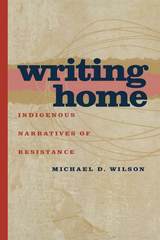 Writing Home: Indigenous Narratives of Resistance
Michael D. Wilson
Michigan State University Press, 2008 In Writing Home, Michael Wilson demonstrates that the use of acceptable Western literary forms by indigenous peoples, while sometimes effective, has frequently distorted essential truths about their cultures. Sermons, for instance, have provided some indigenous authors with a means to criticize colonialism; but ultimately this institutional form, by its very nature, expresses a hierarchical relationship between Christian religions and indigenous beliefs and practices. Similarly, autobiographies are useful vehicles for explaining the cultural practices of a particular tribal group—or personalizing the destructive forces of colonialism—yet the autobiographical form itself suggests an ethos of individualism entirely contrary to a vision of communal identity central to many indigenous groups. Short fiction and novels are often built around conflict. Although indigenous writers have used this thematic approach with considerable artistry to express the clash between indigenous societies and the forces of colonialism, for many indigenous people the idea of conflict as the basis of cultural expression may be antithetical to a relational, perhaps familial, attitude toward the world and other people. Writing Home explores the ways that indigenous writers use ideas and structures from primarily oral traditions to resist, for example, colonial metanarratives that legitimize and even demand the disappearance of indigenous peoples—Manifest Destiny, Social Darwinism, and the inevitable plight of the tragic "mixed blood." To this end, Wilson examines selected works by Mourning Dove (Humishuma), Leslie Marmon Silko, Gerald Vizenor, Louise Erdrich, and Ray Young Bear. In the effort to create a mimetic form of representation that is appropriate to their cultures, these writers, Wilson finds, confront issues of authenticity, identity, and society. Ultimately, Wilson’s investigation reminds us of the difficulty and ingenuity required to rescue an authentic written representation of a culture from the distortions caused by the colonialist’s "accepted" representational structures.
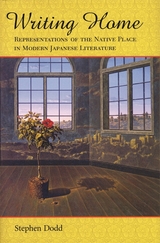 Writing Home: Representations of the Native Place in Modern Japanese Literature
Stephen Dodd
Harvard University Press, 2004 This book examines the development of Japanese literature depicting the native place (furusato) from the mid-Meiji period through the late 1930s as a way of articulating the uprootedness and sense of loss many experienced as Japan modernized. The 1890s witnessed the appearance of fictional works describing a city dweller who returns to his native place, where he reflects on the evils of urban life and the idyllic past of his childhood home. The book concentrates on four authors who typify this trend: Kunikida Doppo, Shimazaki Tōson, Satō Haruo, and Shiga Naoya.
All four writers may be understood as trying to make sense of contemporary Japan. Their works reflect their engagement with the social, intellectual, economic, and technological discourses that created a network of shared experience among people of a similar age. This common experience allows the author to chart how these writers’ works contributed to the general debate over Japanese national identity in this period. By exploring the links between furusato literature and the theme of national identity, he shows that the debate over a common language that might “transparently” express the modern experience helped shape a variety of literary forms used to present the native place as a distinctly Japanese experience.
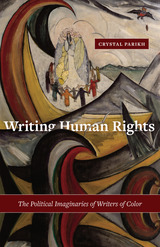 Writing Human Rights: The Political Imaginaries of Writers of Color
Crystal Parikh
University of Minnesota Press, 2017 The legal texts and aspirational ideals of human rights are usually understood and applied in a global context with little bearing on the legal discourse, domestic political struggles, or social justice concerns within the United States. In Writing Human Rights, Crystal Parikh uses the international human rights regime to read works by contemporary American writers of color—Toni Morrison, Chang-rae Lee, Ana Castillo, Aimee Phan, and others—to explore the conditions under which new norms, more capacious formulations of rights, and alternative kinds of political communities emerge. Parikh contends that unlike humanitarianism, which views its objects as victims, human rights provide avenues for the creation of political subjects. Pairing the ethical deliberations in such works as Beloved and A Gesture Life with human rights texts like the United Nations Convention Against Torture, she considers why principles articulated as rights in international conventions and treaties—such as the right to self-determination or the right to family—are too often disregarded at home. Human rights concepts instead provide writers of color with a deeply meaningful method for political and moral imagining in their literature. Affiliating transnational works of American literature with decolonization, socialist, and other political struggles in the global south, this book illuminates a human rights critique of idealized American rights and freedoms that have been globalized in the twenty-first century. In the absence of domestic human rights enforcement, these literatures provide a considerable repository for those ways of life and subjects of rights made otherwise impossible in the present antidemocratic moment.
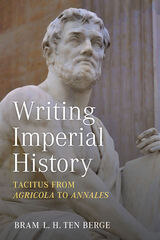 Writing Imperial History: Tacitus from Agricola to Annales
Bram L. H. ten Berge
University of Michigan Press, 2023 The late first- and early second-century Roman senator and historian Cornelius Tacitus, whom Edward Gibbon described as “the first of the historians who applied the science of philosophy to the study of facts,” shaped the development of the modern understanding of history as a crucial vehicle for social analysis. The breadth of his thinking is fully revealed only through analysis of how the political, geographical, and rhetorical theories expounded in his early works influenced his later narrative of the evolution of the Roman monarchy. Tacitus, who was one of the oratorical luminaries of his time, produced a collection of works widely recognized as offering the most authoritative account of Rome’s early imperial history. His oeuvre traditionally is divided into the so-called minor and major works. Writing Imperial History offers the first comprehensive analysis of Tacitus’ five texts and their interconnections and serves to confront longstanding assumptions that have led to a fundamental misunderstanding of the nature and development of his oeuvre and historical thinking. Tracing many of the enduring themes and concerns that Tacitus explores across his works, the book shows how the vision articulated in his earlier texts persists in his later ones and how he used the former as sources for the latter.
Writing in America
Fischer, John
Rutgers University Press, 2018 In the fall of 1959, Harper’s Magazine published a special supplement on the state of writing and the American literary scene. The supplement was greeted with a broadside of commendation and a fusillade of cavil, and has since become recognized as the most useful brief survey of the contemporary state of the American writing arts and of their fellow travelers, the spoken word, the typescript word, the filmed and televised word, and the publishing memorandum.
In this newly reissued volume in the Rutgers University Press Classics Imprint, Writing in America proves to be as stimulating as it was in 1960. Here, writers including Robert Brustein, Stanley Kunitz, and C.P. Snow examine the state of writing in American novels, films, and television candidly and critically. The result is a collection of essays that showcase a first-rate and highly entertaining piece of reporting on the American literary scene that resonate in 2017.
Writing in and about the Performing and Visual Arts: Creating, Performing, and Teaching
Steven J. Corbett
University Press of Colorado, 2020 The performing and visual arts have much to offer writing studies in terms of process, creativity, design, delivery, and habits of mind (and body). This collection is intended for teachers and researchers of writing in and across the disciplines, in both secondary and post-secondary settings, and for those outside of writing studies who wish to infuse more writing into their performing and visual arts curriculums and courses. Filled with evocative images and vivid descriptions, contributors showcase ways of knowing and doing in the performing and visual arts. Contributors also offer teachers in the performing and visual arts go-to practical designs and strategies for teaching writing in their fields.
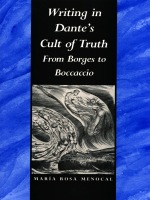 Writing in Dante's Cult of Truth: From Borges to Bocaccio
María Rosa Menocal
Duke University Press, 1991 Using the works of Dante as its critical focus, María Rosa Menocal’s original and imaginative study examines questions of truth, ideology, and reality in poetry as they occur in a series of texts and in the relationship between those texts across time. In each case, Menocal raises theoretical issues of critical importance to contemporary debates regarding the structure of literary relations.
Beginning with a reading of La vita nuova and the Commedia, this literary history of poetic literary histories explores the Dantean poetic experience as it has been limited and rewritten by later poets, particularly Petrarch, Boccaccio, Borges, Pound, Eliot, and the all but forgotten Silvio Pellico, author of Le mie prigioni. By blending discussions of Dante’s own marriage of literature and literary history with those investigations into the imitative qualities of later works, Writing in Dante’s Cult of Truth presents an intertextual literary history, one which seeks to maintain the uncanniness of literature, while imagining history to be neither linear nor clearly distinguishable from literature itself.
Writing in Disguise: Academic Life in Subordination
Terry Caesar
Ohio University Press, 1998 Writing in Disguise is a series of increasingly personal essays that both discuss and dramatize through firsthand experience the significance of subordination in academic life, in terms of issues and structures but above all in terms of texts. Some are written: memos, rejection letters, even resignation letters. Some are not: anecdotes, protests, jokes, parodies.
All of these texts have in common the imperative of disguise, represented as the most crucial consequence of dominant discourse, within which subordination might speak only by knowing its place, and write only by producing hidden transcripts.
Caustic, pointed, satiric, Writing in Disguise is an engaging critique of aspects of academia involving the misuse, misappropriation, and misappreciation of verbal communication in its many guises.
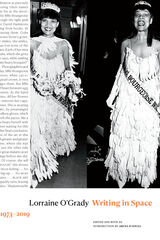 Writing in Space, 1973–2019
Lorraine O'Grady
Duke University Press, 2020 Writing in Space, 1973-2019 gathers the writings of conceptual artist Lorraine O'Grady, who for over forty years has investigated the complicated relationship between text and image. A firsthand account of O'Grady's wide-ranging practice, this volume contains statements, scripts, and previously unpublished notes charting the development of her performance work and conceptual photography; her art and music criticism that appeared in the Village Voice and Artforum; critical and theoretical essays on art and culture, including her classic "Olympia's Maid"; and interviews in which O'Grady maps, expands, and complicates the intellectual terrain of her work. She examines issues ranging from black female subjectivity to diaspora and race and representation in contemporary art, exploring both their personal and their institutional implications. O'Grady's writings—introduced in this collection by critic and curator Aruna D'Souza—offer a unique window into her artistic and intellectual evolution while consistently plumbing the political possibilities of art.
Writing in the Academic Disciplines, Second Edition: A Curricular History
David R. Russell. Foreword by Elaine P. Maimon
Southern Illinois University Press, 2002 “To understand the ways students learn to write, we must go beyond the small and all too often marginalized component of the curriculum that treats writing explicitly and look at the broader, though largely tacit traditions students encounter in the whole curriculum,” explains David R. Russell, in the introduction to this singular study. The updated edition provides a comprehensive history of writing instruction outside general composition courses in American secondary and higher education, from the founding public secondary schools and research universities in the 1870s, through the spread of the writing-across-the-curriculum movement in the 1980s, through the WAC efforts in contemporary curriculums.
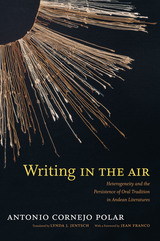 Writing in the Air: Heterogeneity and the Persistence of Oral Tradition in Andean Literatures
Antonio Cornejo Polar
Duke University Press, 2013 Originally published in 1994, Writing in the Air is one of the most significant books of modern Latin American literary and cultural criticism. In this seminal work, the influential Latin American literary critic Antonio Cornejo Polar offers the most extended articulation of his efforts to displace notions of hybridity or "mestizaje" dominant in Latin American cultural studies with the concept of heterogeneity: the persistent interaction of cultural difference that cannot be resolved in synthesis. He reexamines encounters between Spanish and indigenous Andean cultural systems in the New World from the Conquest into the 1980s. Through innovative readings of narratives of conquest and liberation, homogenizing nineteenth- and twentieth-century discourses, and contemporary Andean literature, he rejects the dominance of the written word over oral literature. Cornejo Polar decenters literature as the primary marker of Latin American cultural identity, emphasizing instead the interlacing of multiple narratives that generates the heterogeneity of contemporary Latin American culture.
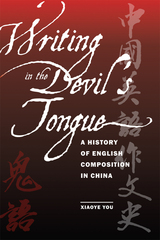 Writing in the Devil's Tongue: A History of English Composition in China
Xiaoye You
Southern Illinois University Press, 2010 Winner, CCCC Outstanding Book Award
Until recently, American composition scholars have studied writing instruction mainly within the borders of their own nation, rarely considering English composition in the global context in which writing in English is increasingly taught. Writing in the Devil’s Tongue challenges this anachronistic approach by examining the history of English composition instruction in an East Asian country. Author Xiaoye You offers scholars a chance to observe how a nation changed from monolingual writing practices to bilingual writing instruction in a school setting. You makes extensive use of archival sources to help trace bilingual writing instruction in China back to 1862, when English was first taught in government schools. Treating the Chinese pursuit of modernity as the overarching theme, he explores how the entry of Anglo-American rhetoric and composition challenged and altered the traditional monolithic practice of teaching Chinese writing in the Confucian spirit. The author focuses on four aspects of this history: the Chinese negotiation with Anglo-American rhetoric, their search for innovative approaches to instruction, students’ situated use of English writing, and local scholarship in English composition. Unlike previous composition histories, which have tended to focus on institutional, disciplinary, and pedagogical issues, Writing in the Devil’s Tongue brings students back to center stage by featuring several passages written by them in each chapter. These passages not only showcase rhetorical and linguistic features of their writings but also serve as representative anecdotes that reveal the complex ways in which students, responding to their situations, performed multivalent, intercultural discourses. In addition, You moves out of the classroom and into the historical, cultural, and political contexts that shaped both Chinese writing and composing practices and the pedagogies that were adopted to teach English to Chinese in China. Teachers, students, and scholars reading this book will learn a great deal about the political and cultural impact that teaching English composition has had in China and about the ways in which Chinese writing and composition continues to be shaped by rich and diverse cultural traditions and political discourses. In showcasing the Chinese struggle with teaching and practicing bilingual composition, Writing in the Devil’s Tongue alerts American writing scholars and teachers to an outdated English monolingual mentality and urges them to modify their rhetorical assumptions, pedagogical approaches, and writing practices in the age of globalization.
Writing in the Feminine: Feminism and Experimental Writing in Quebec
Karen Gould
Southern Illinois University Press, 1990
Here is a celebration and an analysis of four Québécois feminist rebels whose self-conscious revolt against language has put them at the forefront of experimental writing in Quebec. These women—Nicole Brossard, Madeleine Gagnon, Louky Bersianik, and France Theoret—are attempting to explode male-dominated language and to construct a new language and literature of women.
In this first major study of their work in English, Karen Gould examines in depth these women’s literary visions and the new ways in which they communicate those visions. Gould broadens her book’s appeal by showing how these four women’s works, in modern forms of experimental literature, are shaped not only by Quebec feminism, politics, and culture but by American and French influences as well.
Writing in the Margins: The Ethics of Expatriation from Lawrence to Ondaatje
Marilyn Adler Papayanis
Vanderbilt University Press, 2005 Looking closely at a group of writers who rejected the industrial West in favor of the expatriate life and made that quest the subject of their work, Marilynn Papayanis reveals their concerns to be ethical as well as aesthetic. Her book brims with fresh insights into such works as Paul Bowles's The Sheltering Sky, Lawrence Durrell's The Alexandria Quartet, and Michael Ondaatjes The English Patient.
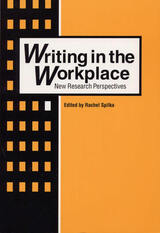 Writing in the Workplace: New Research Perspectives
Edited by Rachel Spilka
Southern Illinois University Press, 1998 Rachel Spilka brings together nineteen previously unpublished essays concerned with ways in which recent research on workplace writing can contribute to the future direction of the discipline of technical and professional writing. Hers is the first anthology on the social perspective in professional writing to feature focused discussions of research advances and future research directions. The workplace as defined by this volume is a widely diverse area that encompasses small companies and large corporations, public agencies and private firms, and a varied population of writers—engineers, managers, nurses, social workers, government employees, and others. Because much research has been conducted on the relationship between workplace writing and social contexts since the ground~breaking 1985 publication of Odell and Goswami’s Writing in Nonacademic Settings, Spilka contends that this is an appropriate time for the professional writing community to consider what it has learned to date and where it should be heading next in light of these recent discoveries. She argues that now professional writers should try to ask better questions and to define new directions. Spilka breaks the anthology into two parts. Part 1 is a collection of ten essays presenting textual and qualitative studies conducted by the authors in the late l980s on workplace writing. Spilka has chosen these studies as representative of the finest research being conducted in professional writing that can serve as models for current and future researchers in the field. Barbara Couture, Jone Rymer, and Barbara Mirel report on surveys they conducted relying on the social perspective both to design survey instruments and to analyze survey data. Jamie MacKinnon assesses a qualitative study describing what workplace professionals might need to learn about social contexts and workplace writing. Susan Kleimann and editor Rachel Spilka discuss multiple case studies they conducted that help explain the value during the composing process of social interaction among the participants of a rhetorical situation. Judy Z. Segal explores the negotiation between the character of Western medicine and the nature of its professional discourse. Jennie Dautermann describes a qualitative study in which a group of nurses "claimed the authority to restructure their own procedural information system." Anthony Paré finds in a case study of social workers that writing can be constrained heavily by socially imposed limitations and restrictions. Graham Smart describes a study of discourse conventions in a financial institution. Geoffrey A. Cross reports on a case study of the interrelation of genre, context, and process in the group production of an executive letter and report. Part 2 includes nine essays that assess the implications of recent research on workplace writing on theory, pedagogy and practice, and future research directions. Mary Beth Debs considers research implications for the notion of authorship. Jack Selzer explores the idea of intertextuality. Leslie A. Olson reviews the literature central to the concept of a discourse community. James A. Reither suggests that writing-as-collaboration in the classroom focuses "more on the production of texts to be evaluated than on ways in which texts arise out of other texts." Rachel Spilka continues Reither’s discussion of how writing pedagogy in academia might be revised with regard to the social perspective. Patricia Sullivan and James E. Porter respond to the debate about the authority of theory versus that of practice on researchers’ notions of methodology. Mary Beth Debs considers which methods used in fields related to writing hold promise for research in workplace writing. Stephen Doheny-Farina discusses how some writing researchers are questioning the underlying assumptions of traditional ethnography. Finally, Tyler Bouldin and Lee Odell suggest future directions for the research of workplace writing.
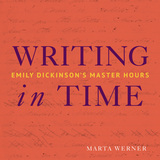 Writing in Time: Emily Dickinson's Master Hours
Marta L. Werner
Amherst College Press, 2021 Winner of the 2023 Richard J. Finneran Award for the best book about editorial theory or practice.
For more than half a century, the story of Emily Dickinson’s “Master” documents has been the largely biographical tale of three letters to an unidentified individual. Writing in Time seeks to tell a different story—the story of the documents themselves. Rather than presenting the “Master” documents as quarantined from Dickinson’s larger scene of textual production, Marta Werner’s innovative new edition proposes reading them next to Dickinson’s other major textual experiment in the years between ca. 1858–1861: the Fascicles. In both, Dickinson can be seen testing the limits of address and genre in order to escape bibliographical determination and the very coordinates of “mastery” itself. A major event in Dickinson scholarship, Writing in Time: Emily Dickinson’s Master Hours proposes new constellations of Dickinson’s work as well as exciting new methodologies for textual scholarship as an act of “intimate editorial investigation.”
Writing India Anew: Indian-English Fiction 2000-2010
Edited by Krishna Sen and Rituparna Roy
Amsterdam University Press, 2013 An assessment of twenty-first-century Indian-English fiction, Writing India Anew features fifteen essays by some of the most prominent scholars in the field and explores a range of themes, including the remapping of mythology and history, the reassessment of globalized India, and technical experimentation in the epic, science fiction, and the graphic novel. Ultimately, the contributors to this volume contend that the current body of work in Indian-English fiction is so varied and vibrant that it can no longer be dismissed as derivative or dispossessed, or even as mere postcolonial “writing back” or compensatory national allegory.
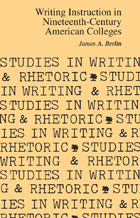 Writing Instruction in Nineteenth-Century American Colleges
James A. Berlin. Foreword by Donald C. Stuart
Southern Illinois University Press, 1984 Defining a rhetoric as a social invention arising out of a particular time, place, and set of circumstances, Berlin notes that “no rhetoric—not Plato’s or Aristotle’s or Quintilian’s or Perelman’s—is permanent.” At any given time several rhetorics vie for supremacy, with each attracting adherents representing various views of reality expressed through a rhetoric. Traditionally rhetoric has been seen as based on four interacting elements: “reality, writer or speaker, audience, and language.” As emphasis shifts from one element to another, or as the interaction between elements changes, or as the definitions of the elements change, rhetoric changes. This alters prevailing views on such important questions as what is appearance, what is reality. In this interpretive study Berlin classifies the three 19th-century rhetorics as classical, psychological-epistemological, and romantic, a uniquely American development growing out of the transcendental movement. In each case studying the rhetoric provides insight into society and the beliefs of the people.
|
|

